October 9, 2022
Martha O'Kennon
Been back from Virginia for over a week now. Brr. What a difference from the very pleasant temperatures in Virginia! It's only in the 40's F when I get up now. The water temperature is right at the point at which I have to stop feeding the Fishes for the Winter to come.
But a few things are still blooming here. Say "goodbye" to the Japanese Anemones. The Asters are fading somewhat but still going, thank goodness! But Goldenrod this yellow is almost gone for the year.
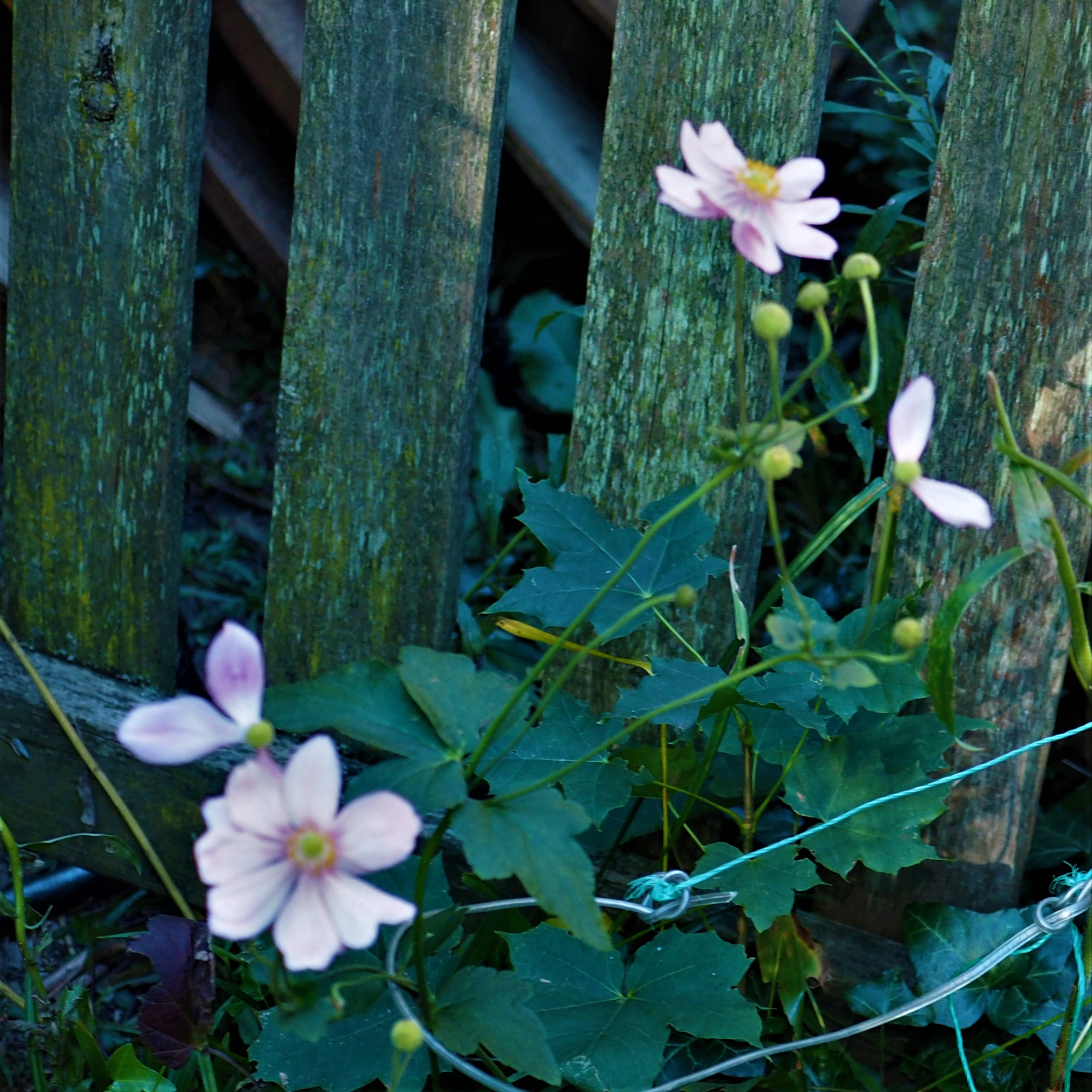
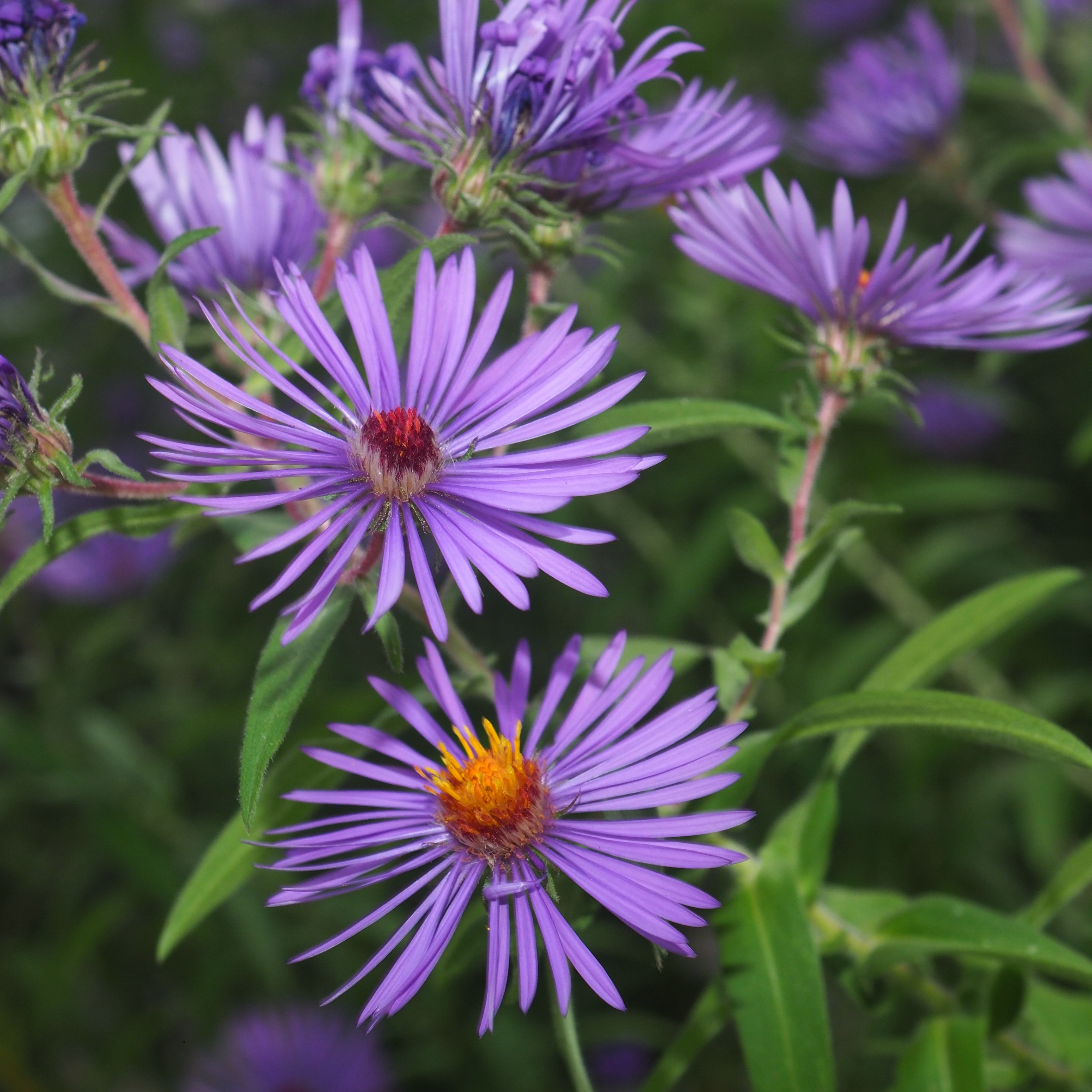
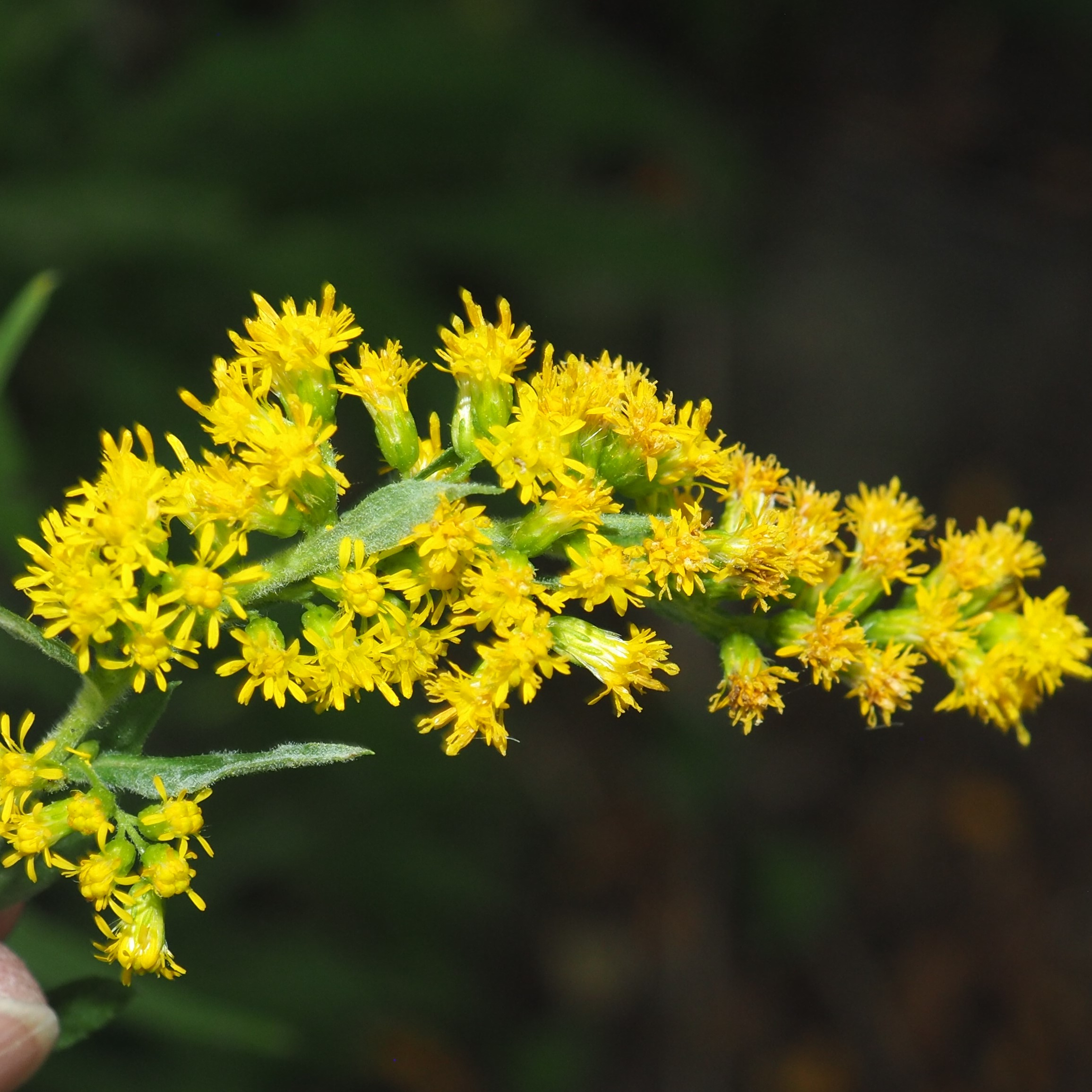
The Ants, especially the Winter Ants, are still running, rather walking around now. And out front the Eastern Black Carpenters are still running on the sidewalk. Maybe you still remember this Ant from October 1, the one I thought was the Ant-mimic Sac Spider. Well, a number of people saw past the color changes and ID'ed it as the Winter Ant.
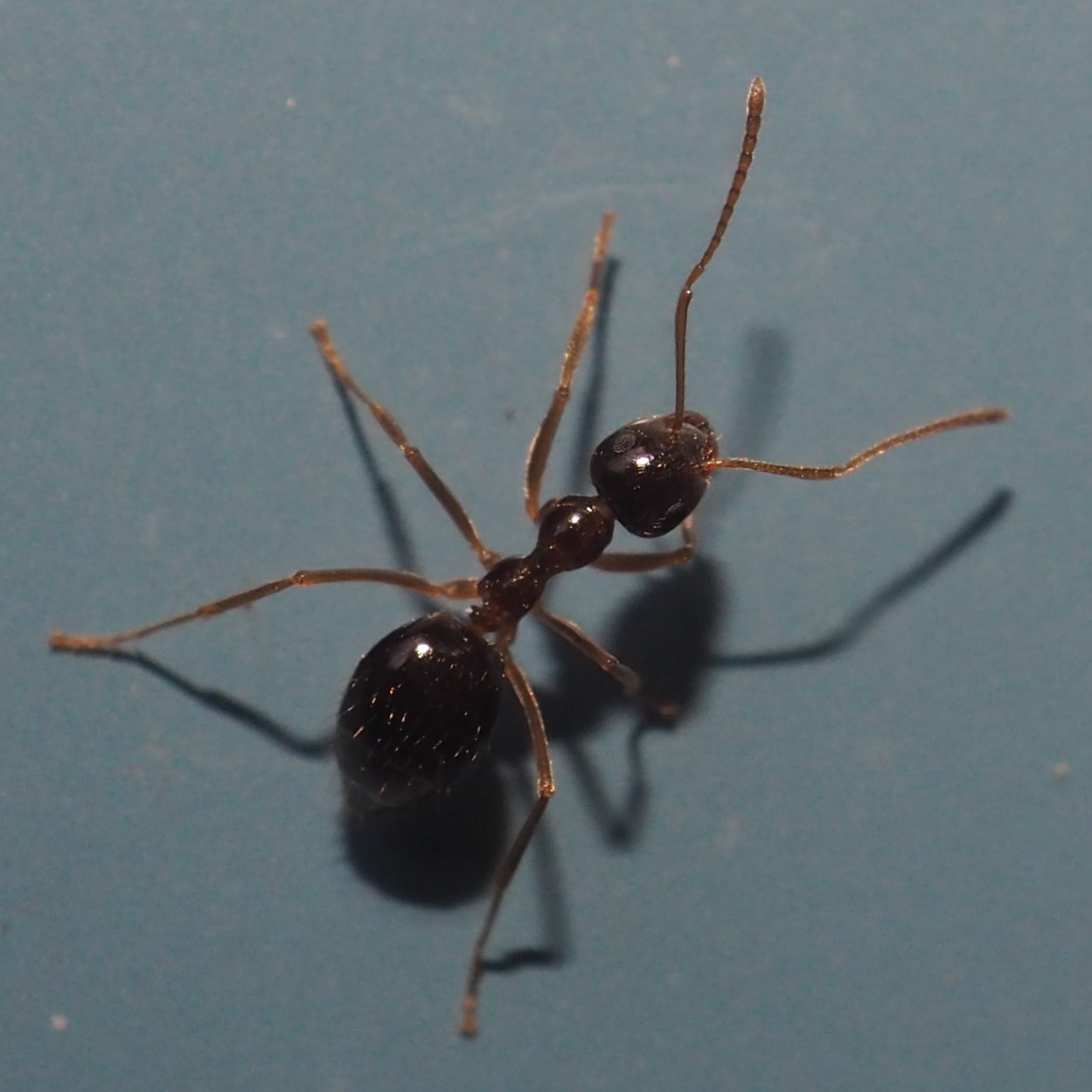

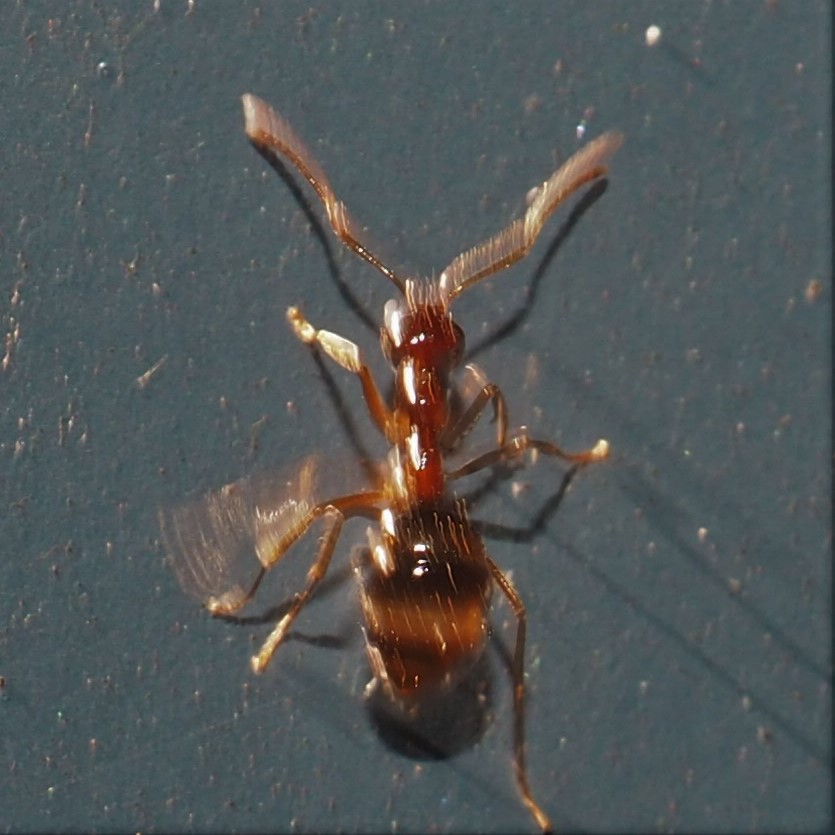
Remember that there is information in the name of the file for each image. You can see it by mousing over the image - look at the lower left of the screen. Or you can click on the image to get to the (usually) larger image. Then the info is displayed in the address line above. Sometimes the second click will actually display a different view of the original image.
Here is that Green Sweat Bee we have been seeing in large numbers since the Asters broke into flower. Next is our old friend the Western Honey Bee on the purple Aster. Third is one of the Bees with a black body. Last is the Eastern Common Bumble Bee.
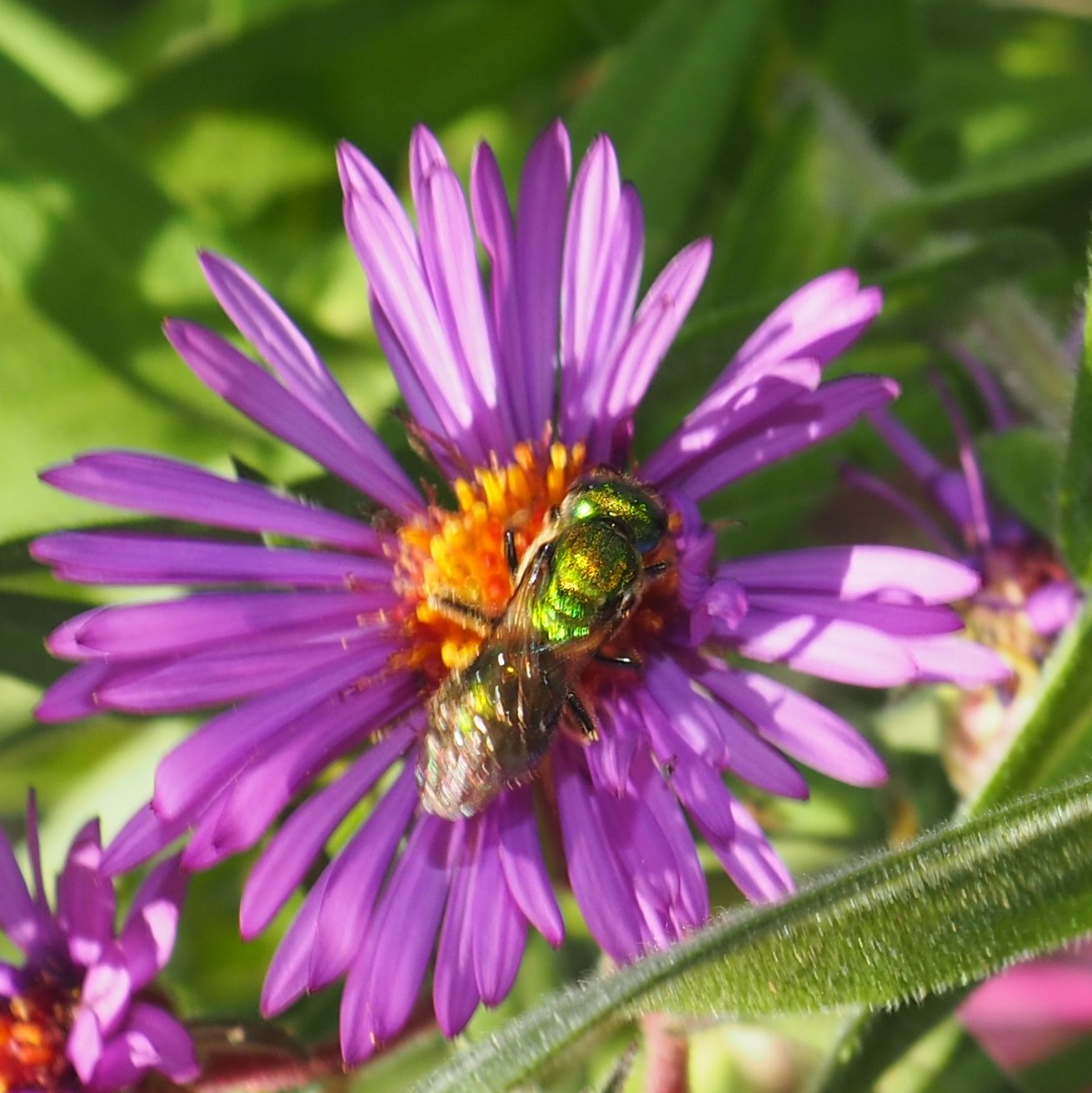
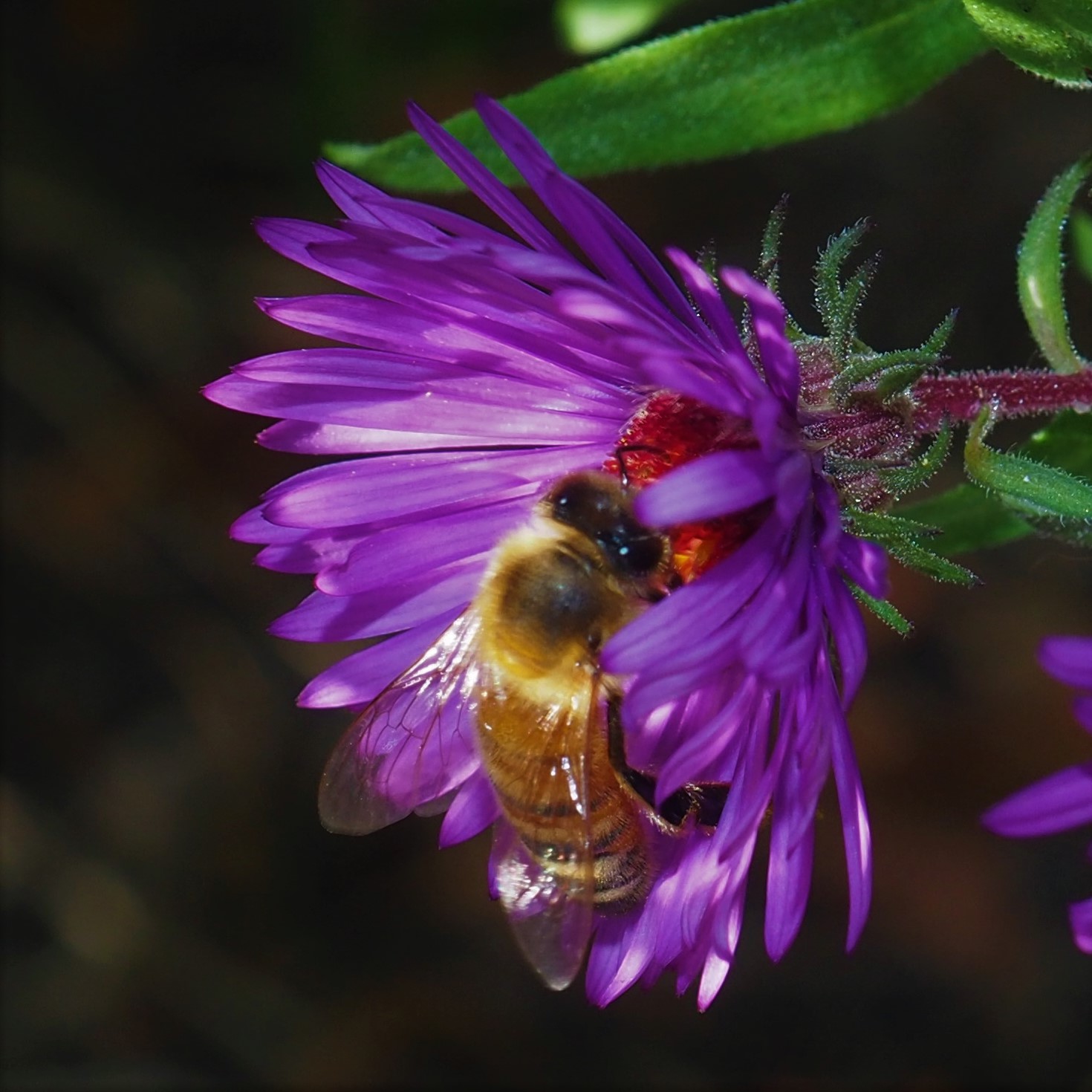
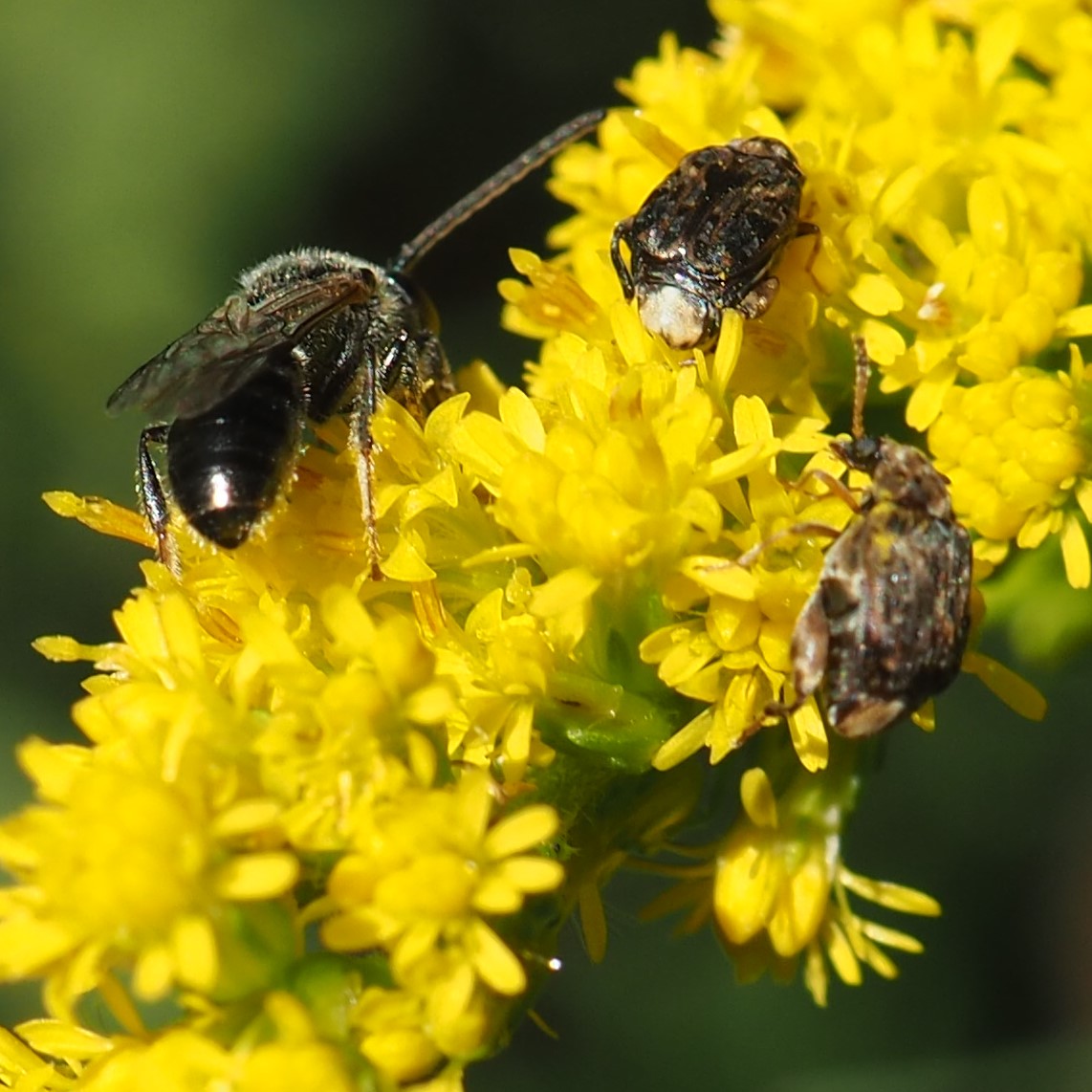
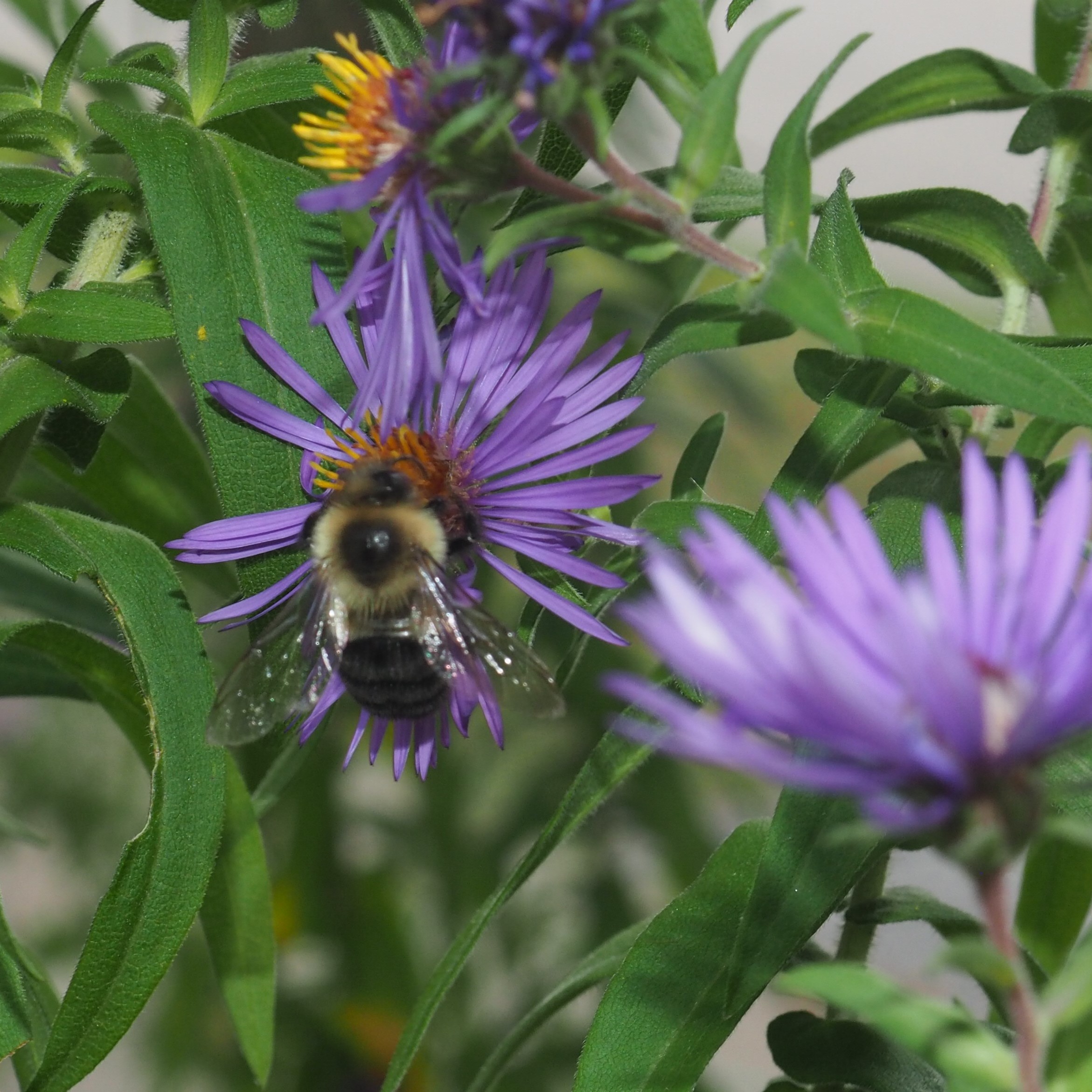
As for Beetles, we found some interesting ones. Borisb of iNat says this first one is Genus Tachinus, a member of Crablike Rove Beetles. The next one was identified as Madarellus undulatus.
a member of Flower Weevils, by @sdjbrown of iNat. The Redbud Bruchids look amazingly elegant right now. Last is actually a very tiny Beetle which I don't recognize.
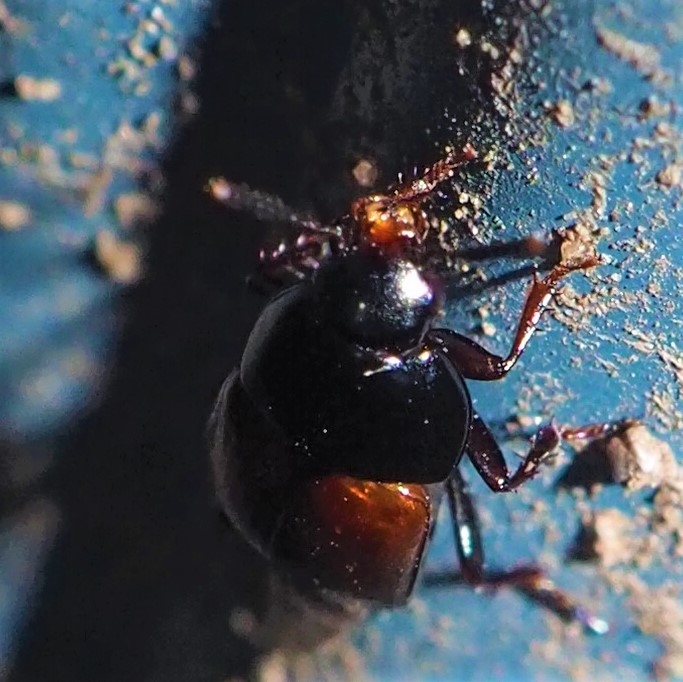
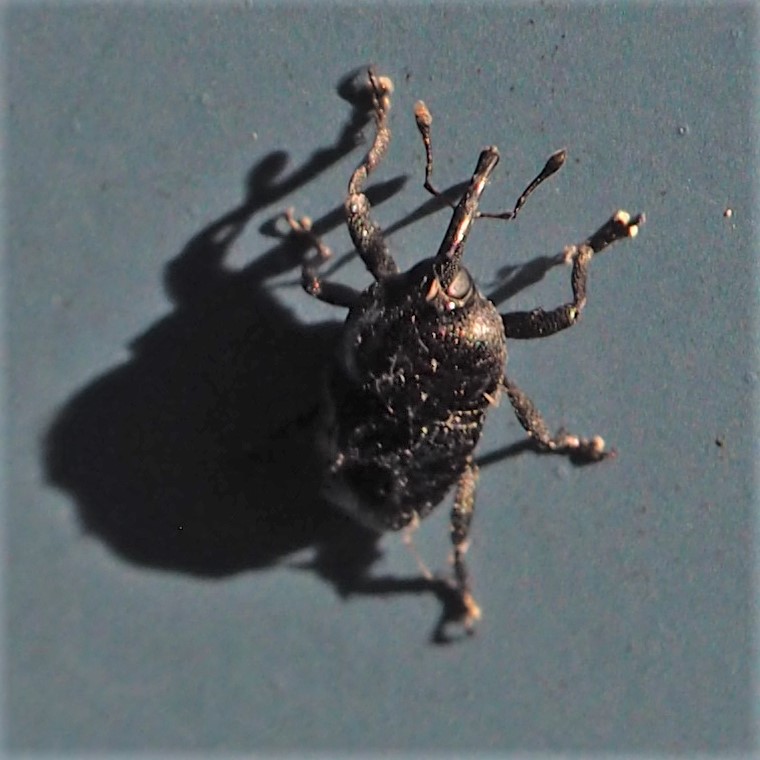
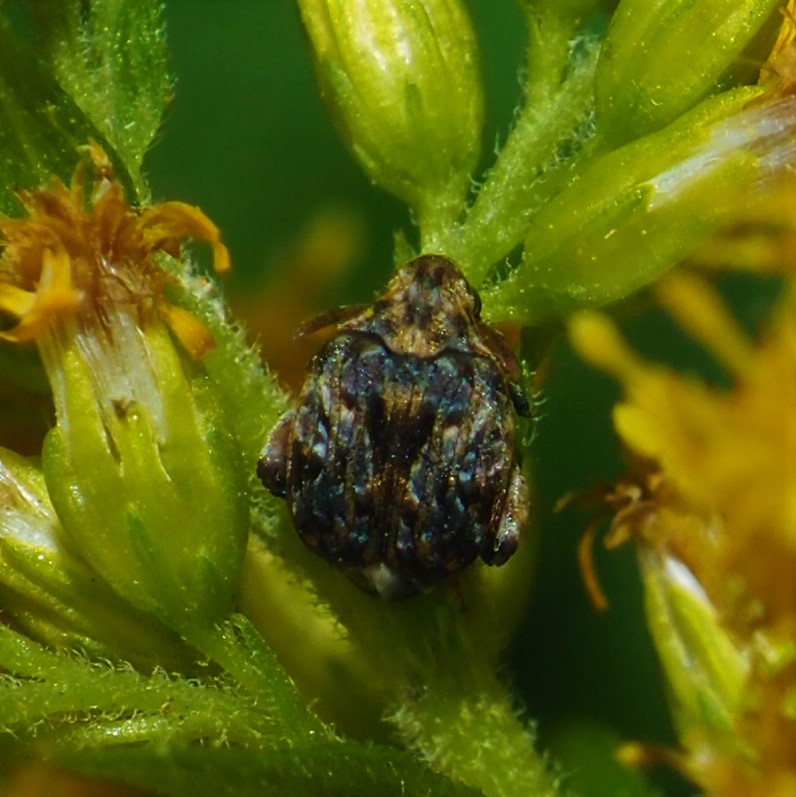
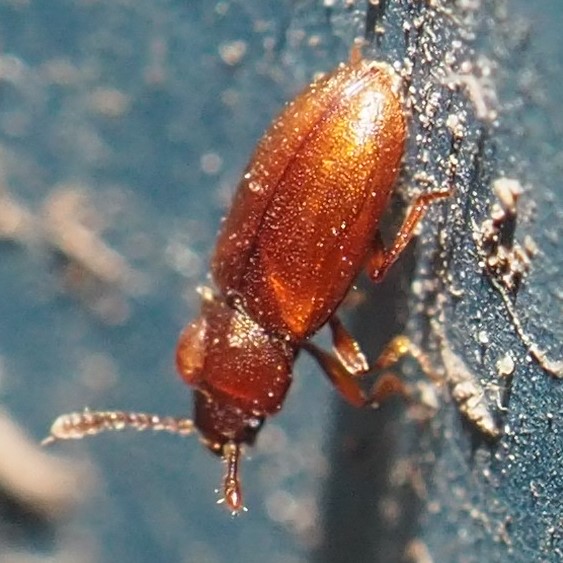
The Drymus unus Dirt-colored Bugs are here for their annual mating. Every year when the Goldenrod is almost gone! I may have shown you picture 3 last week. The third Bug is another Drymus unus but uninvolved.
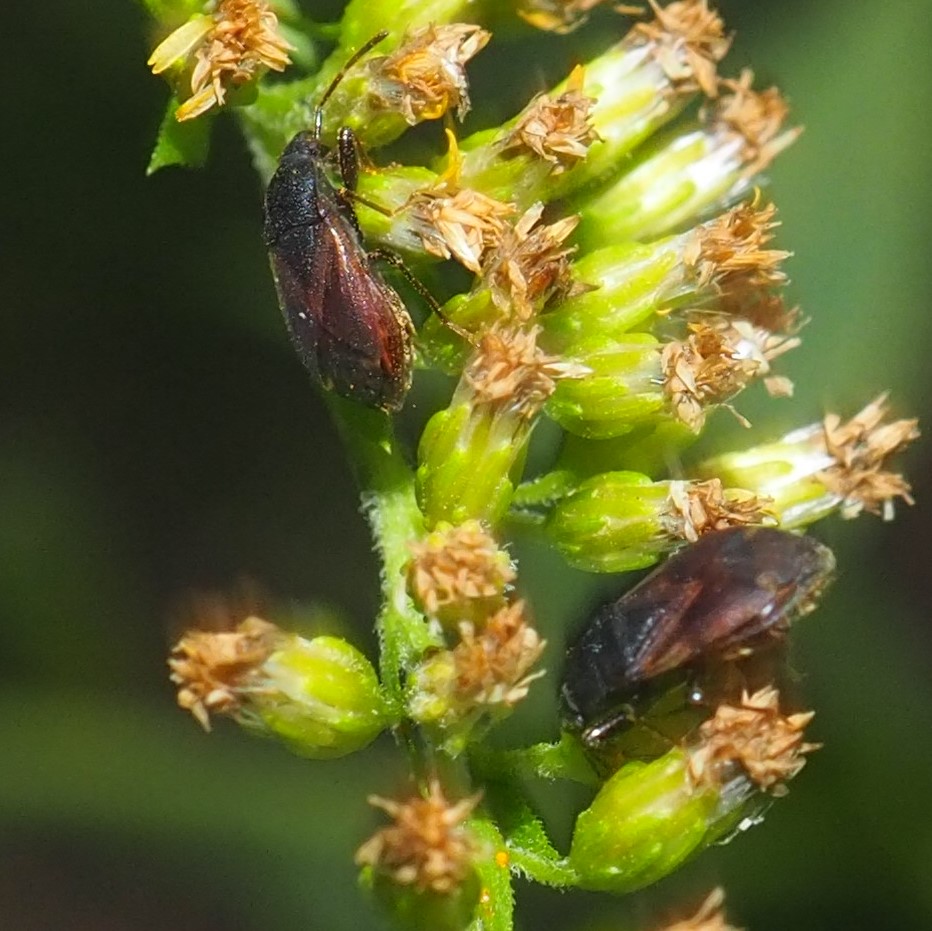
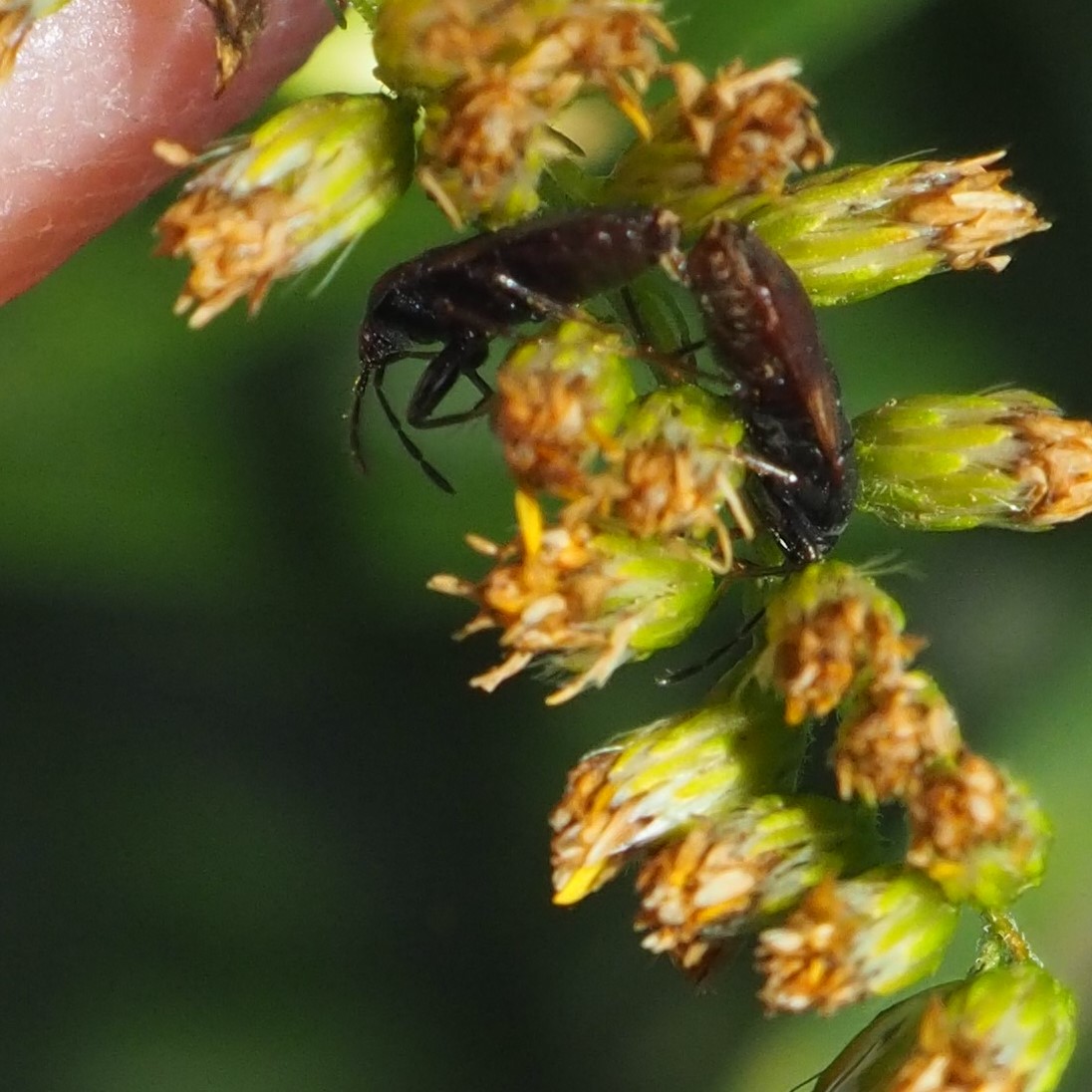
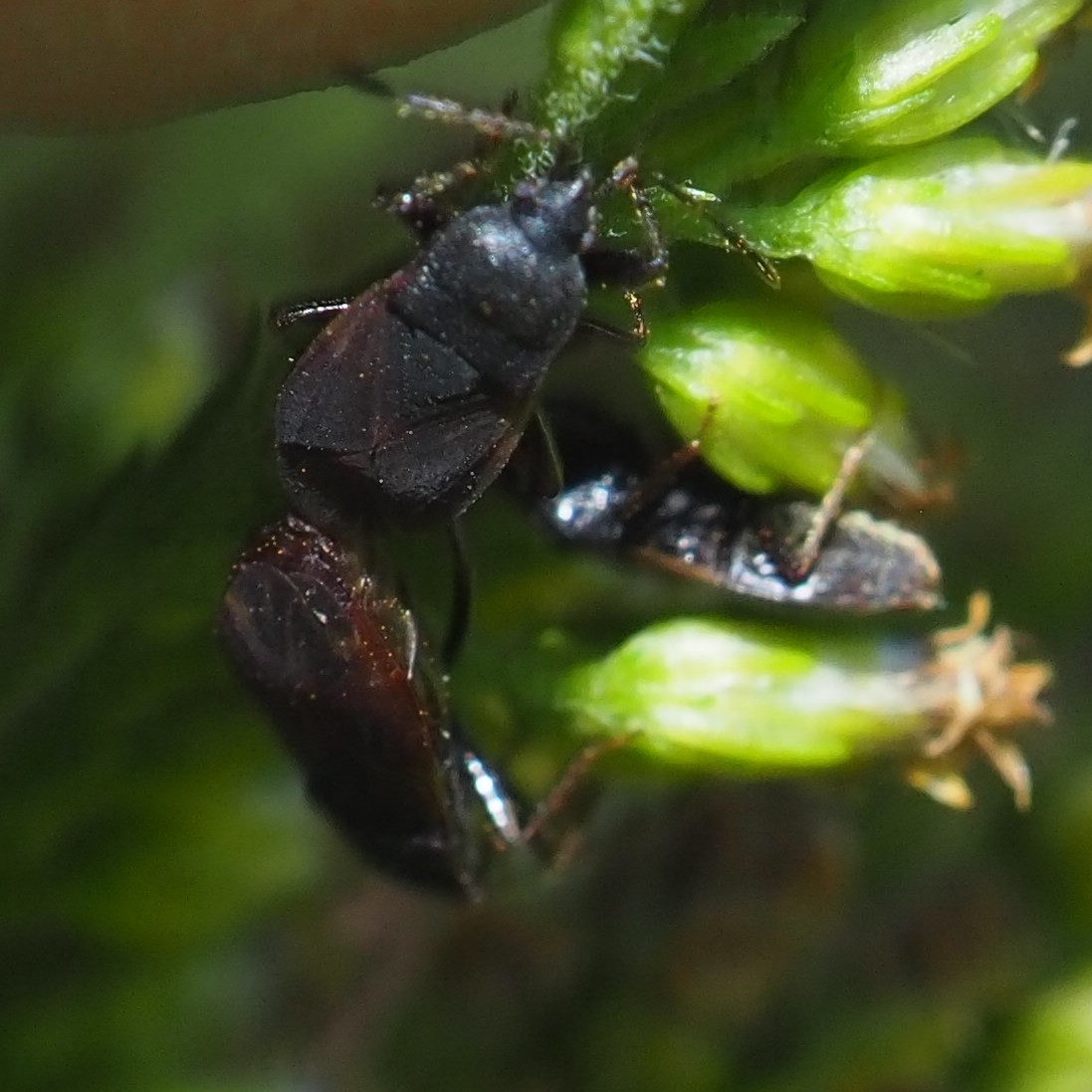
Here is the Eastern Box-elder Bug. Then one of several Erasmoneura vulnerata Leafhoppers, followed by what I think is an Eratoneura Leafhopper.
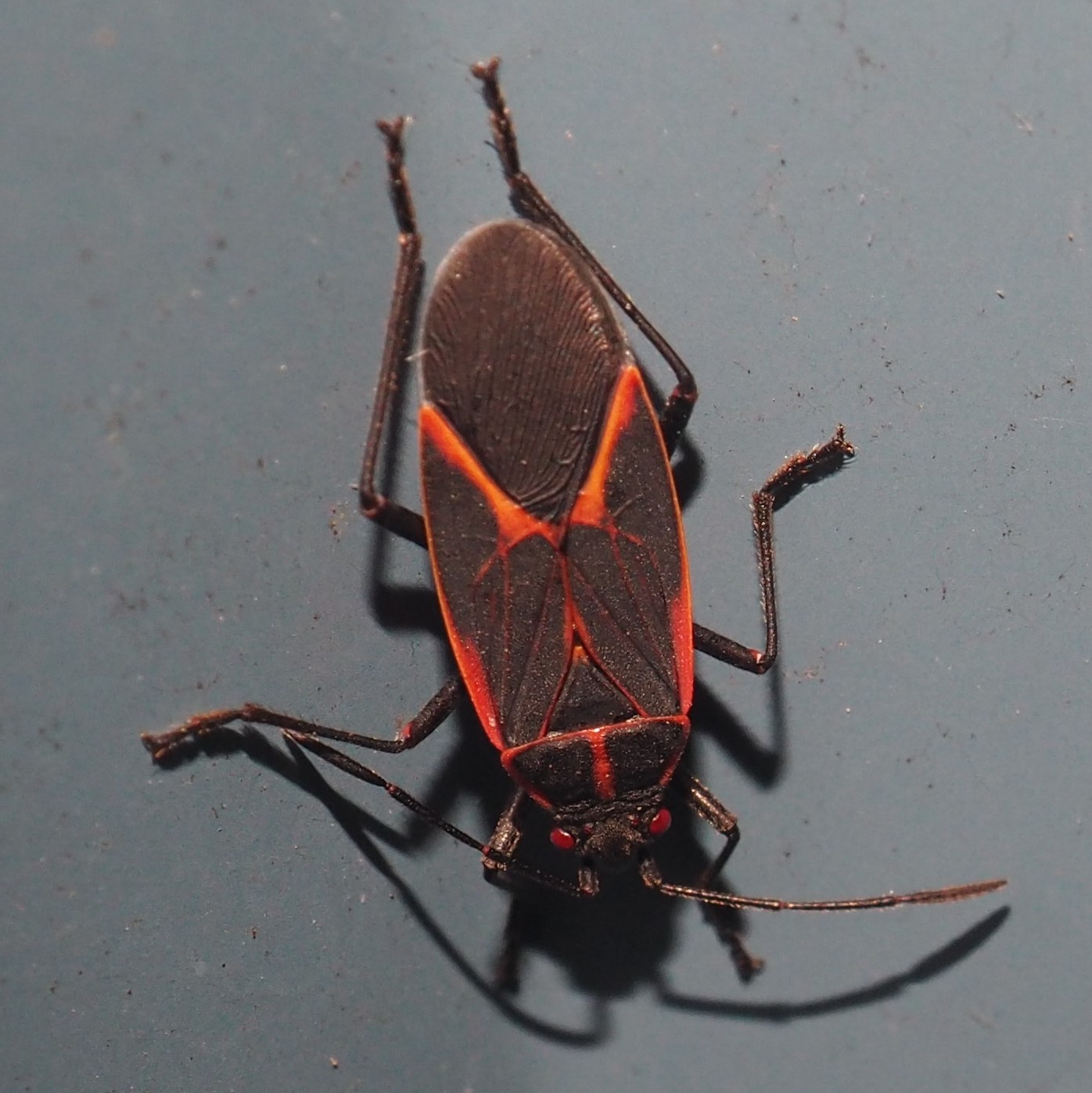

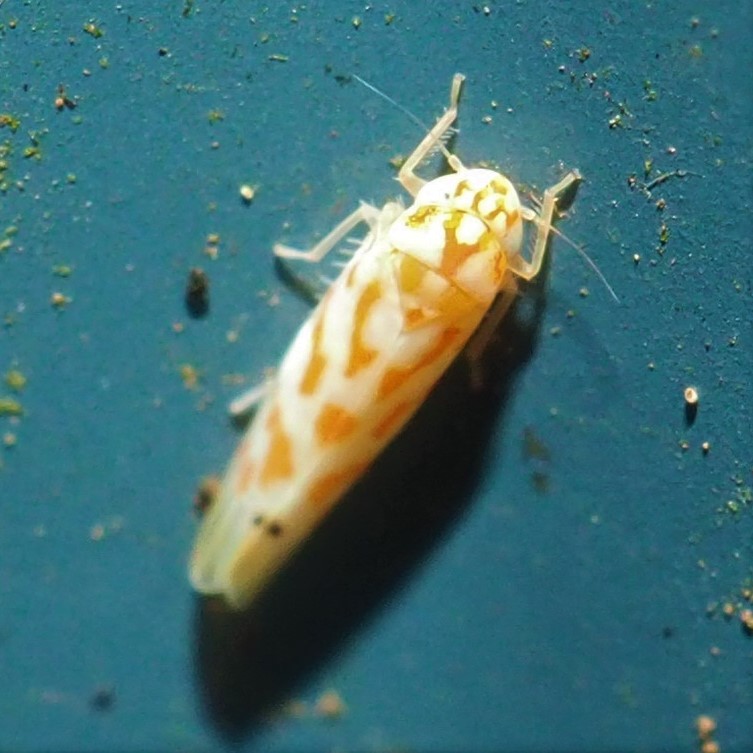
Here is what looks like a "baby" Bug on the half shell, followed by a Brown Marmorated Stink Bug, and by the shell of a Cicada that was just under the bottom of the woodshop.
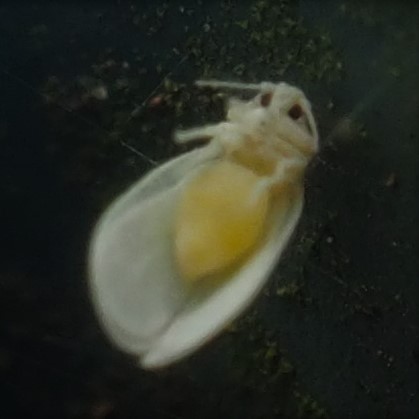

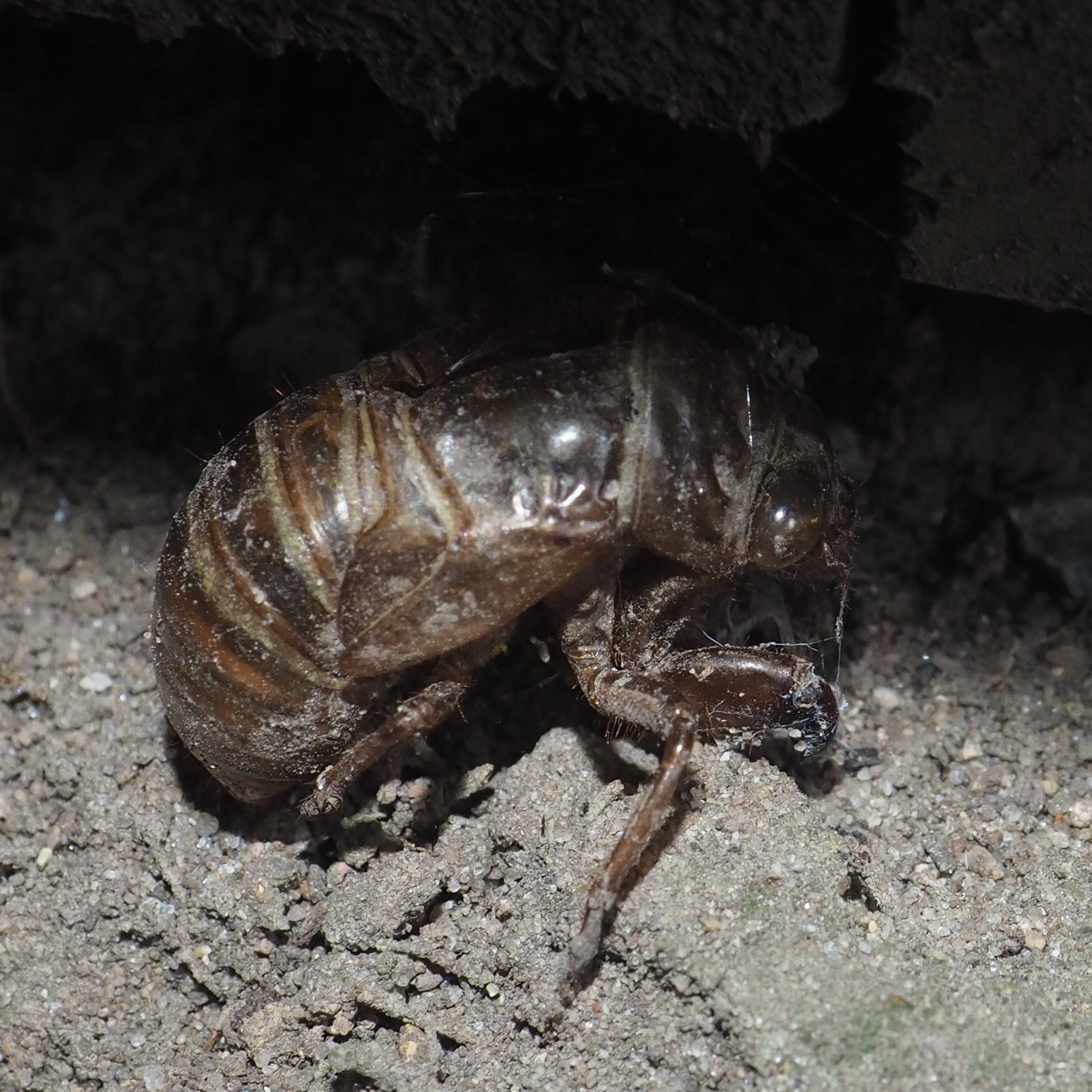
Let's take a look at our Barklouse zoo. We've been following a mostly cleaned-off nymph for a while on North Wall panel six.. It has now disappeared and I figure one of the many Trichadenotecnum genus Barklice is the adult of this reddish one. Second, this other encrusted nymph has been hanging out on panel 13 for a few days. The cold seems to have slowed down most of them, except for the Echmepteryx hageni which are still little speed demons, racing around for short spurts. Here (picture 3) is one resting up.


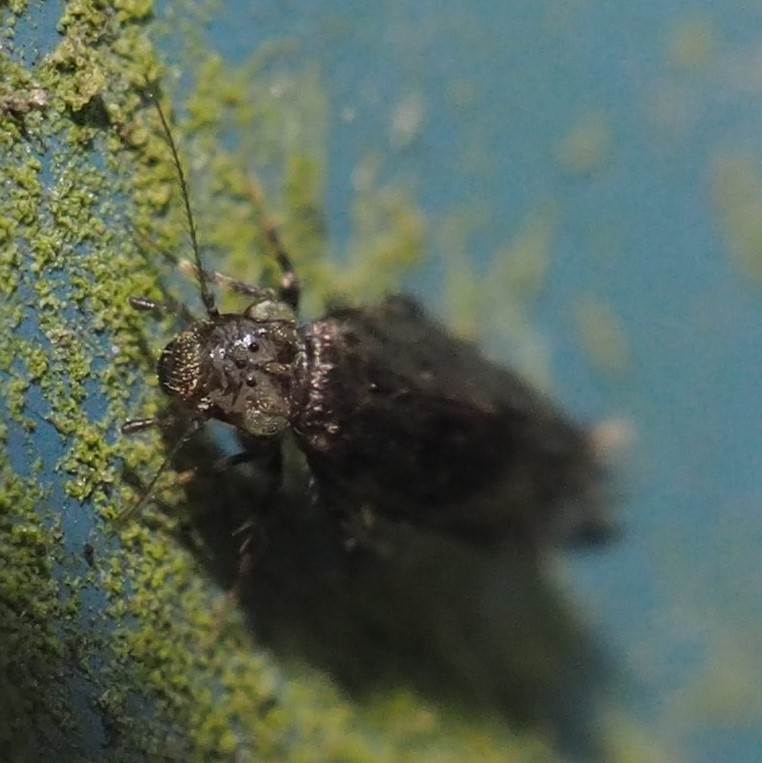
Here and there we can find a small orangeish Barklouse Valenzuela, probably V. flavidus. The second picture here shows a tiny orange nymph hatching from an egg mass, which was most likely laid by a female Valenzuela. Meanwhile there are plenty of Graphopsocus cruciatus adults and nymphs, and quite a few clutches of their eggs.
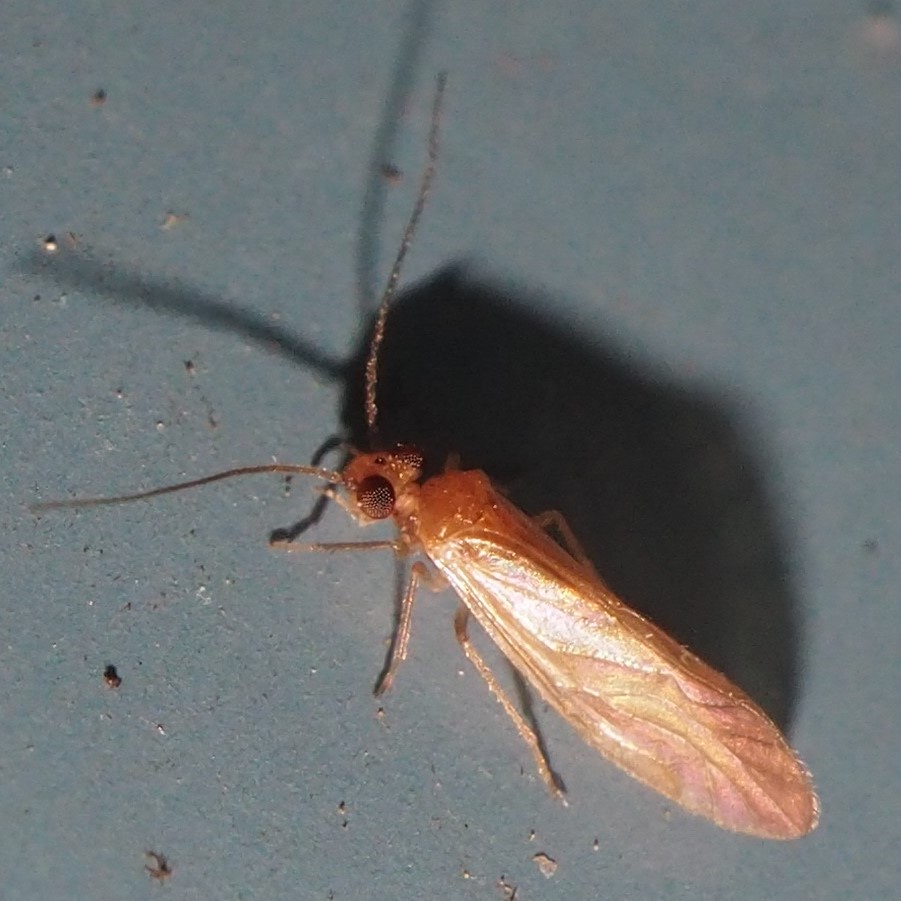
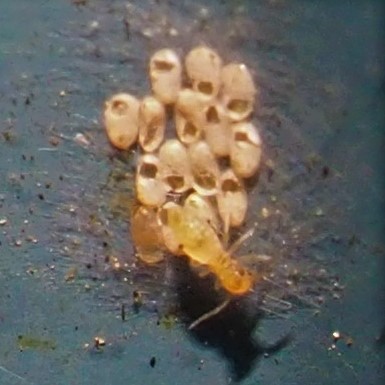
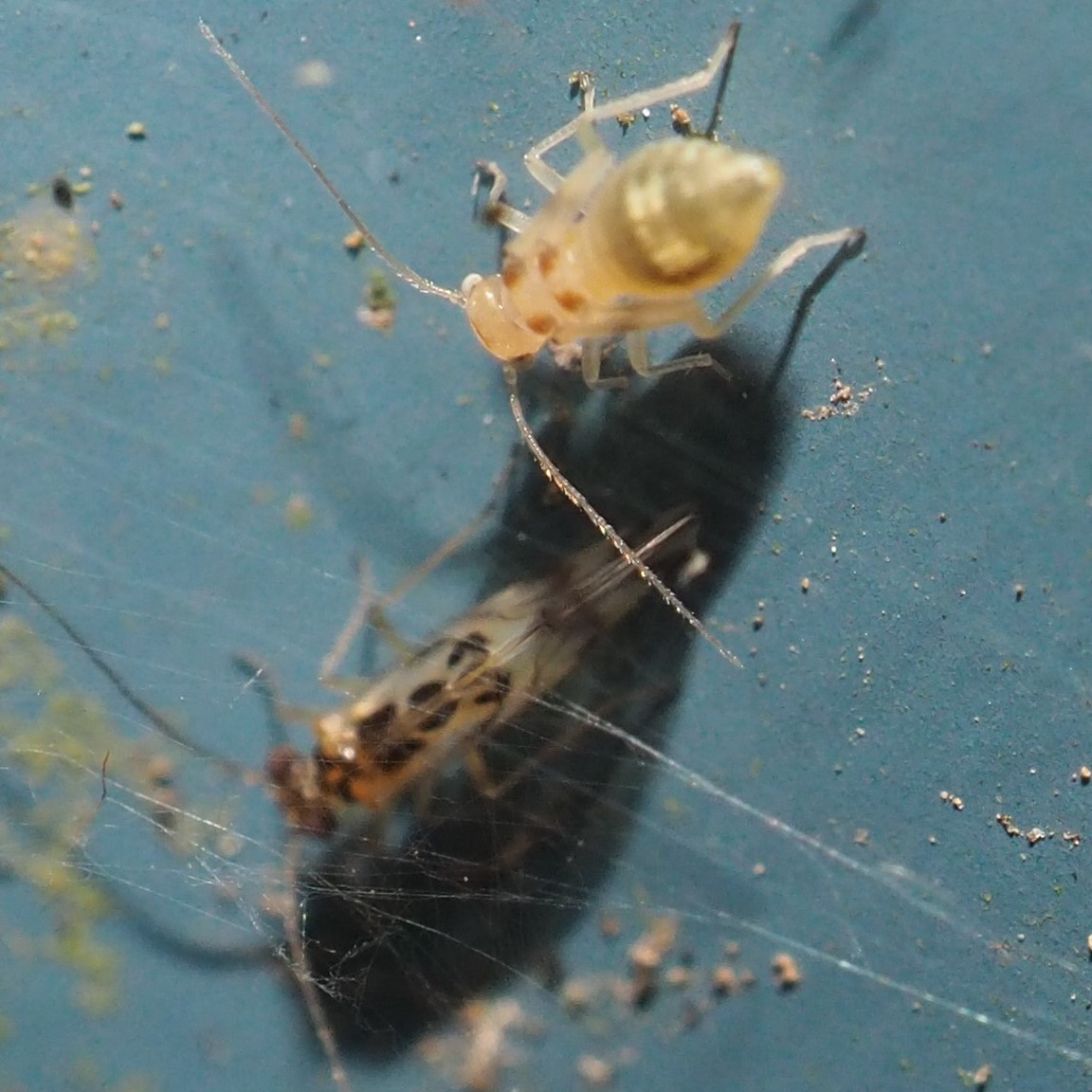
The Metylophorus novaescotiae nymphs have mostly converted themselves successfully into adults. Picture 2 here is a rare lateral view. Picture 3 seems to be an M. novaescotiae adult (it has the two dots on the back of its head) that has just moulted and is lacking definite colors. One nymph seems to Scott Shreve to be that of a Metylophorus purus (picture 4).
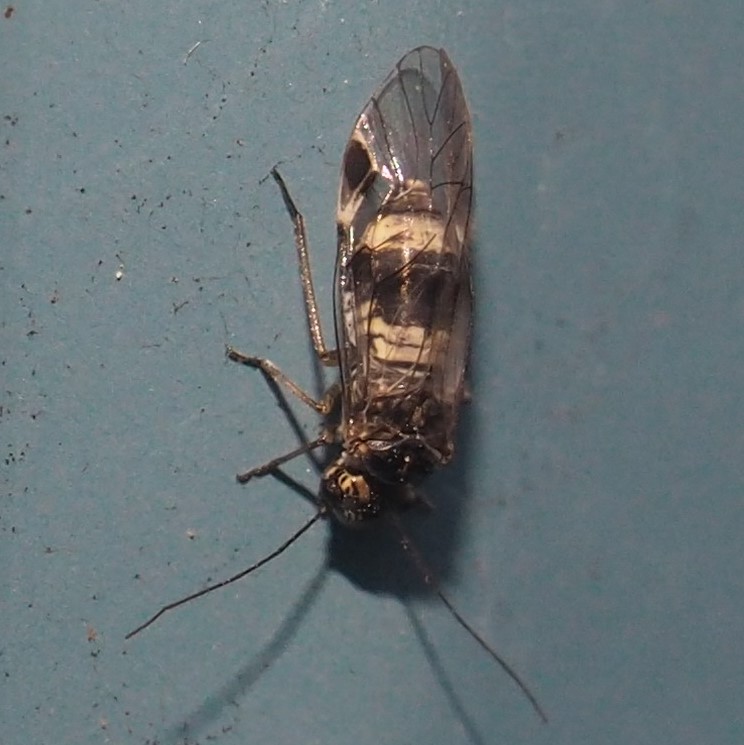
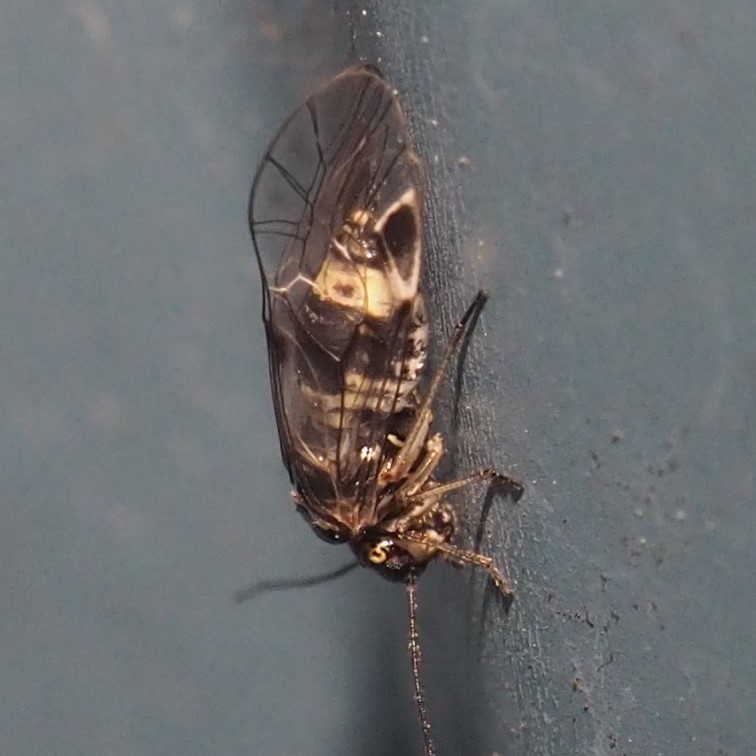
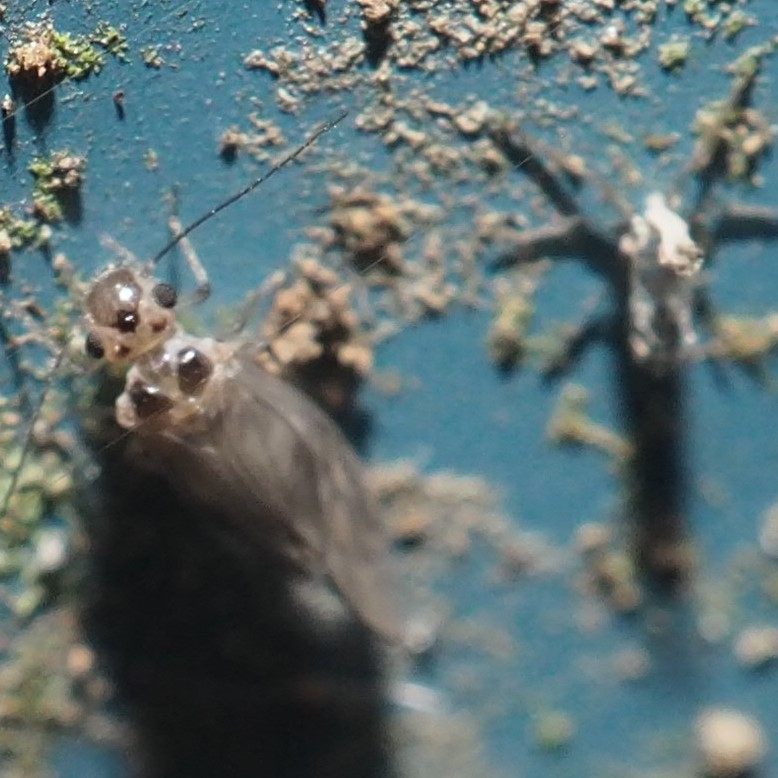

The Polypsocus corruptus adults are plentiful, but the nymphs are in a rest period - haven't seen one of those for weeks now. I believe the darker, black-eyed forms are males (picture 2).
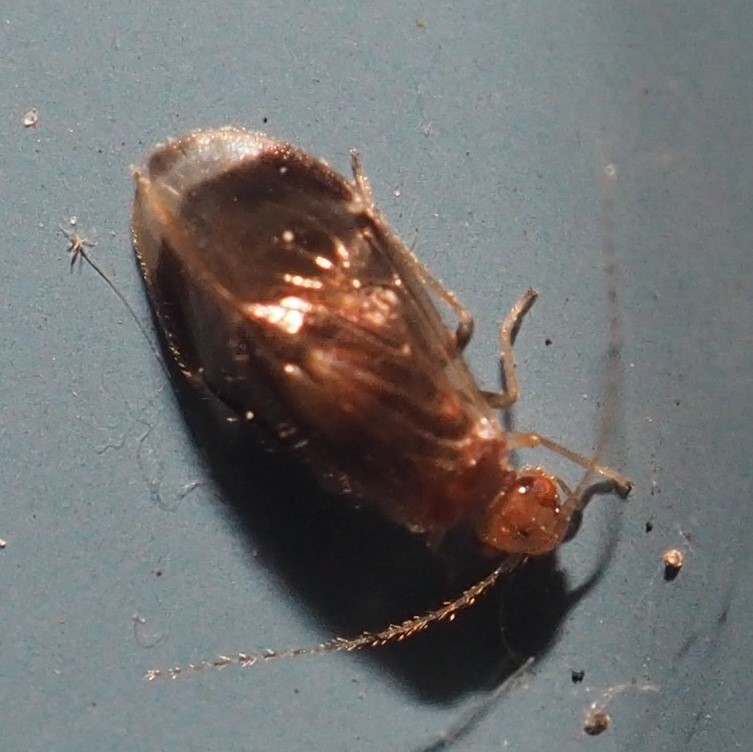
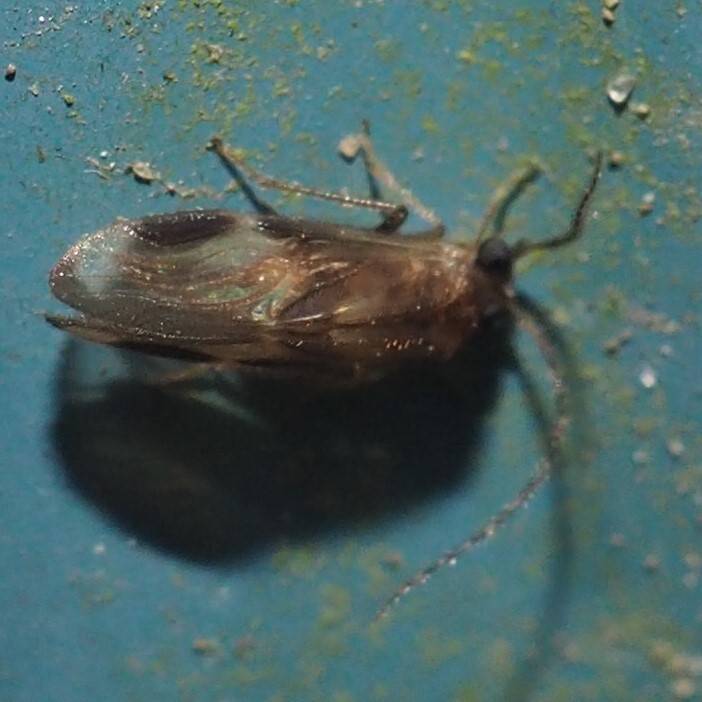
Here is a puzzle - this Barklouse seems to have just moulted into adulthood, but in picture 1 its wings have been pulled into a strange shape. This seems to have been resolved in pictures 2 and 3, but I still don't know what we're dealing with now.
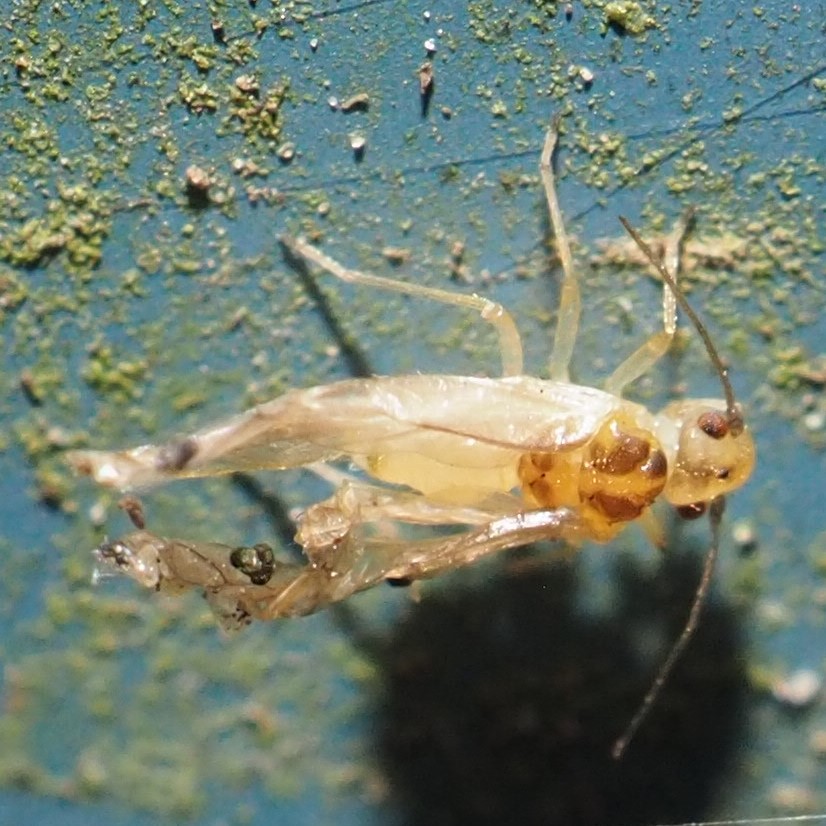
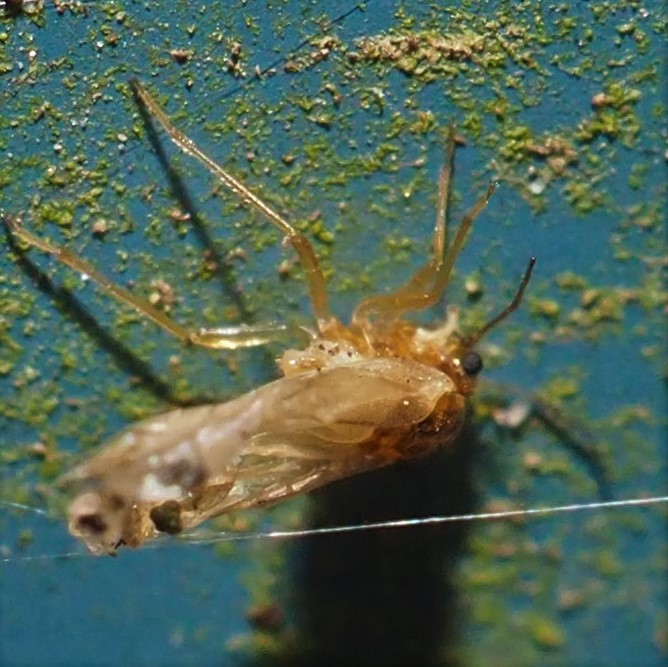

We don't usually get many Butterflies, but this week we got a very special Skipper. The ID app on iNat said it was either a White-cheeked Checked Skipper or a Common Checked Skipper. I just could NOT tell the difference but then I checked the range. The White-cheeked is strictly a Southern Skipper. So our friend here is the Common Checked Skipper! Isn't it sweet?
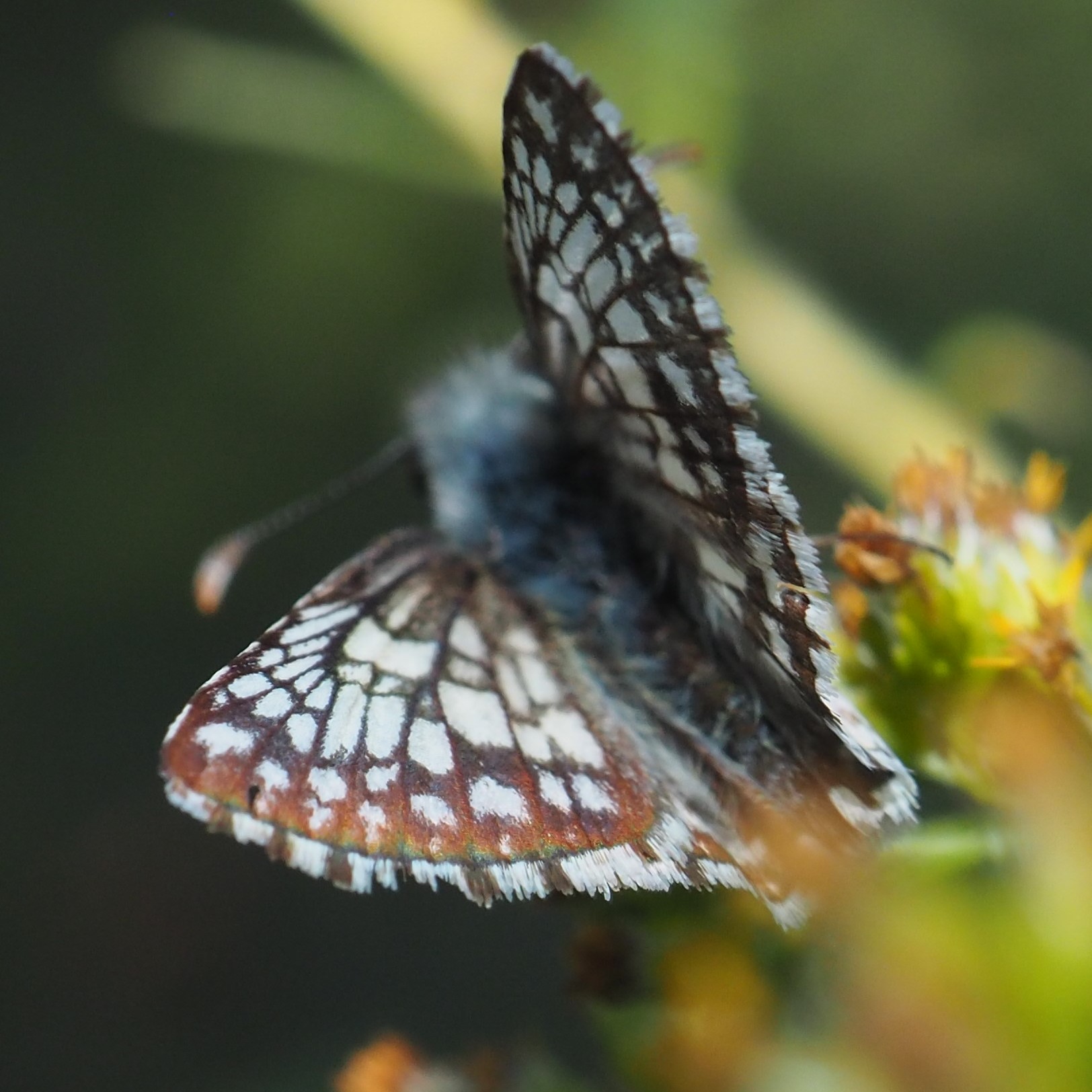
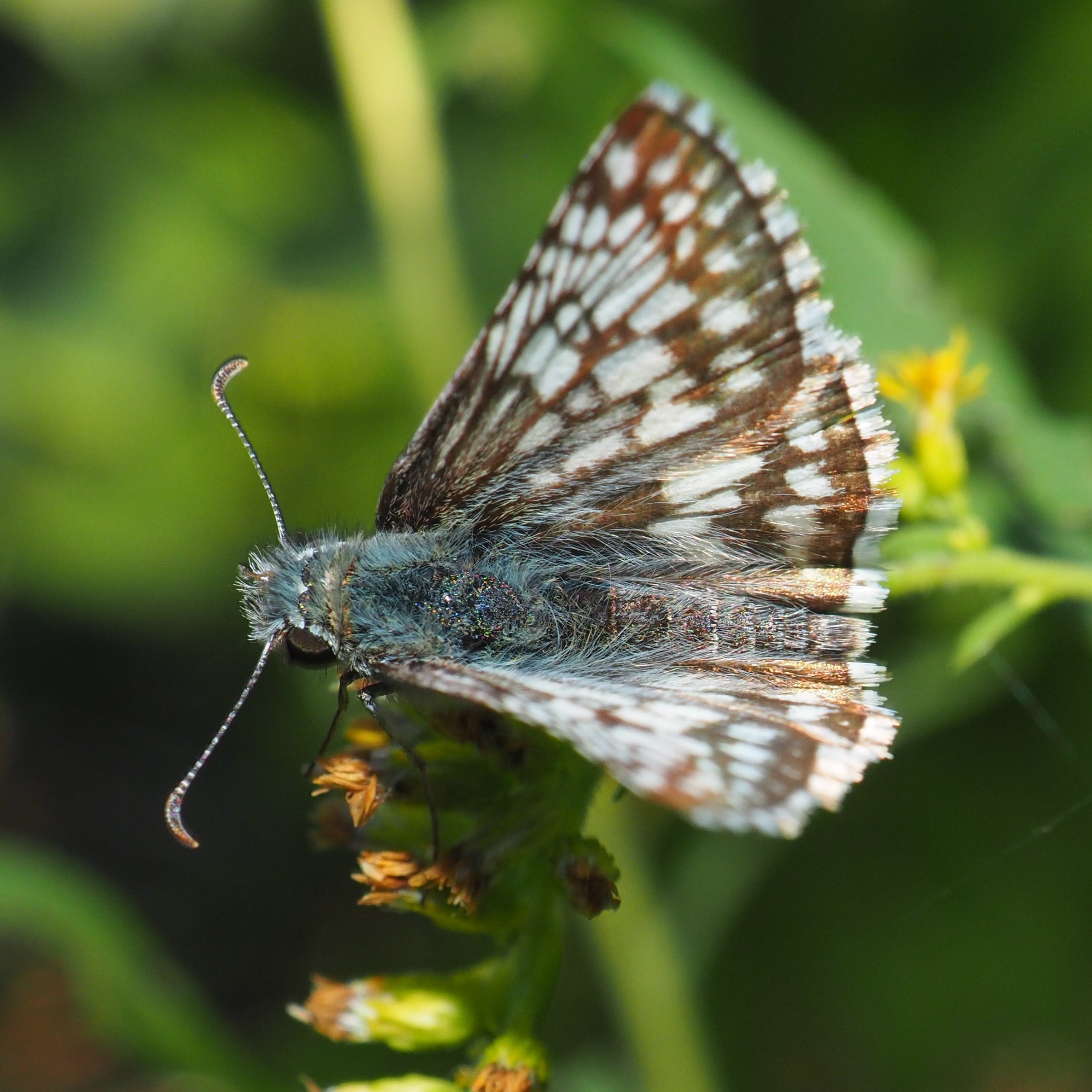
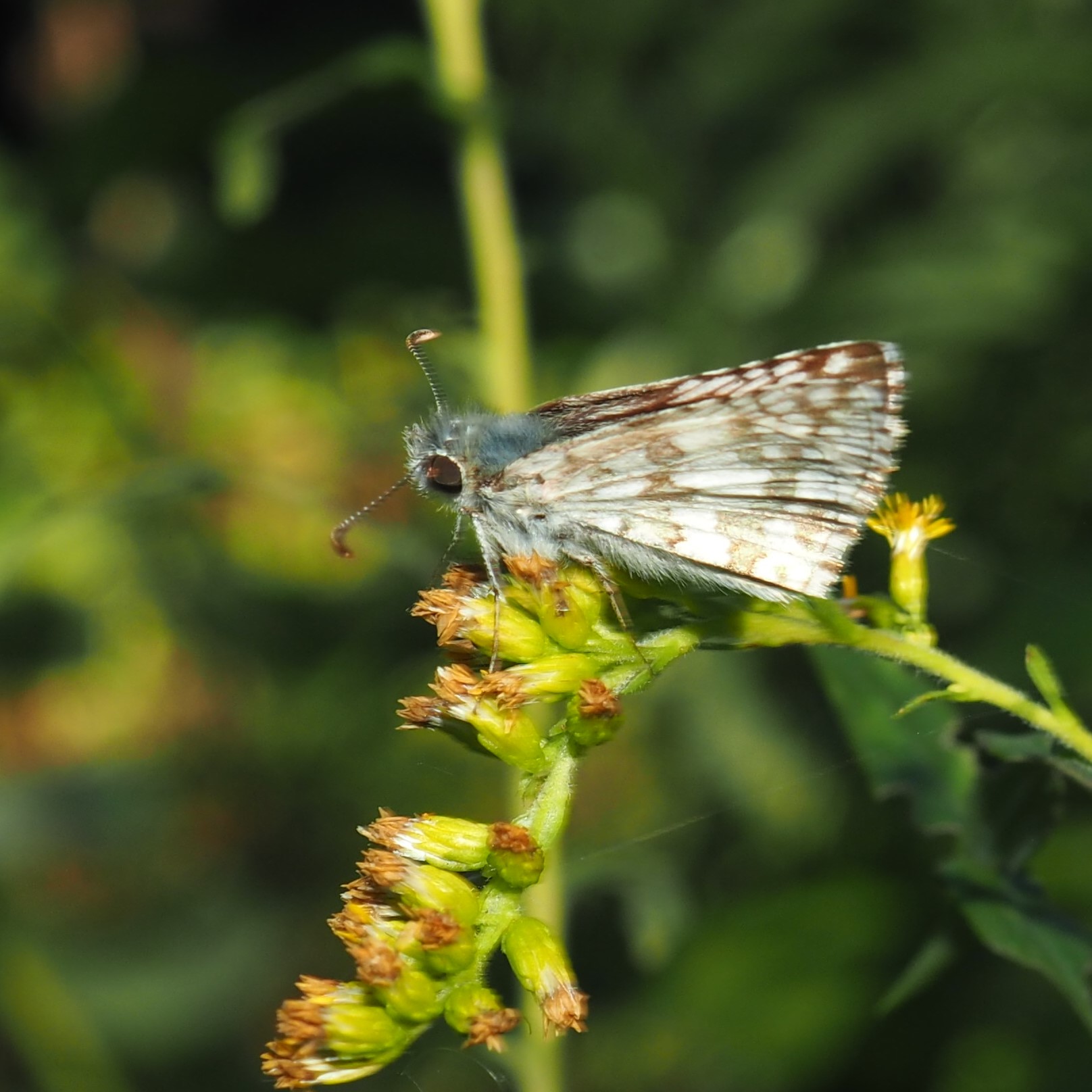
Before we move into the Flies, let's see what you make of this little Rorschach Test. If you said "European Earwig", you get a clean mental health report. But now for the Flies of the Week. Picture 2 shows a clean-lined Crane Fly. Third is the Narrow-faced Marsh Fly, one of the Hover Flies, Homophilus fasciatus. This is one of the ones that lay their eggs in the Pond and whose babies live in the water and eat garbage from the pond, thus becoming Nature's little Sanitation Engineers.
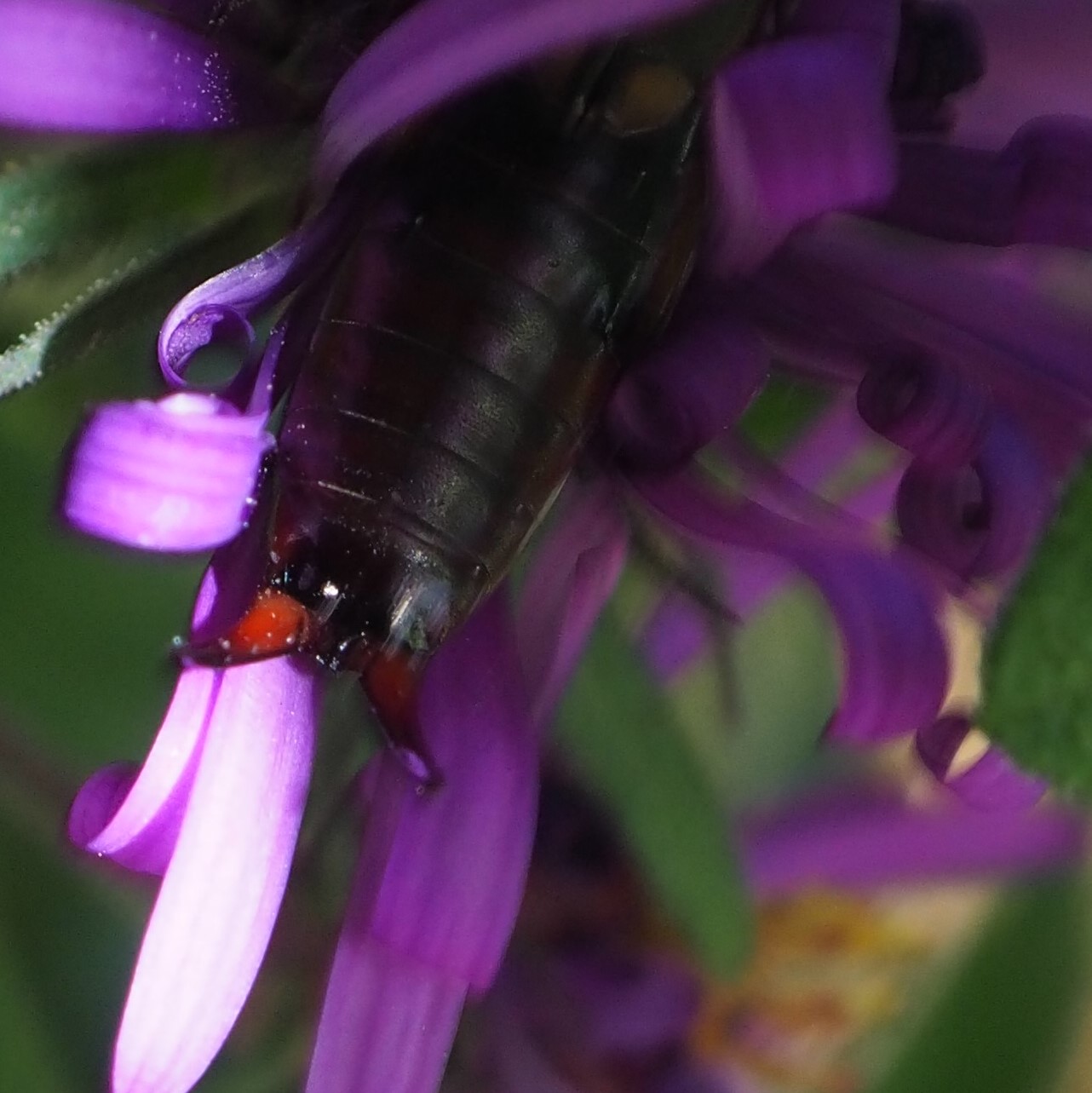
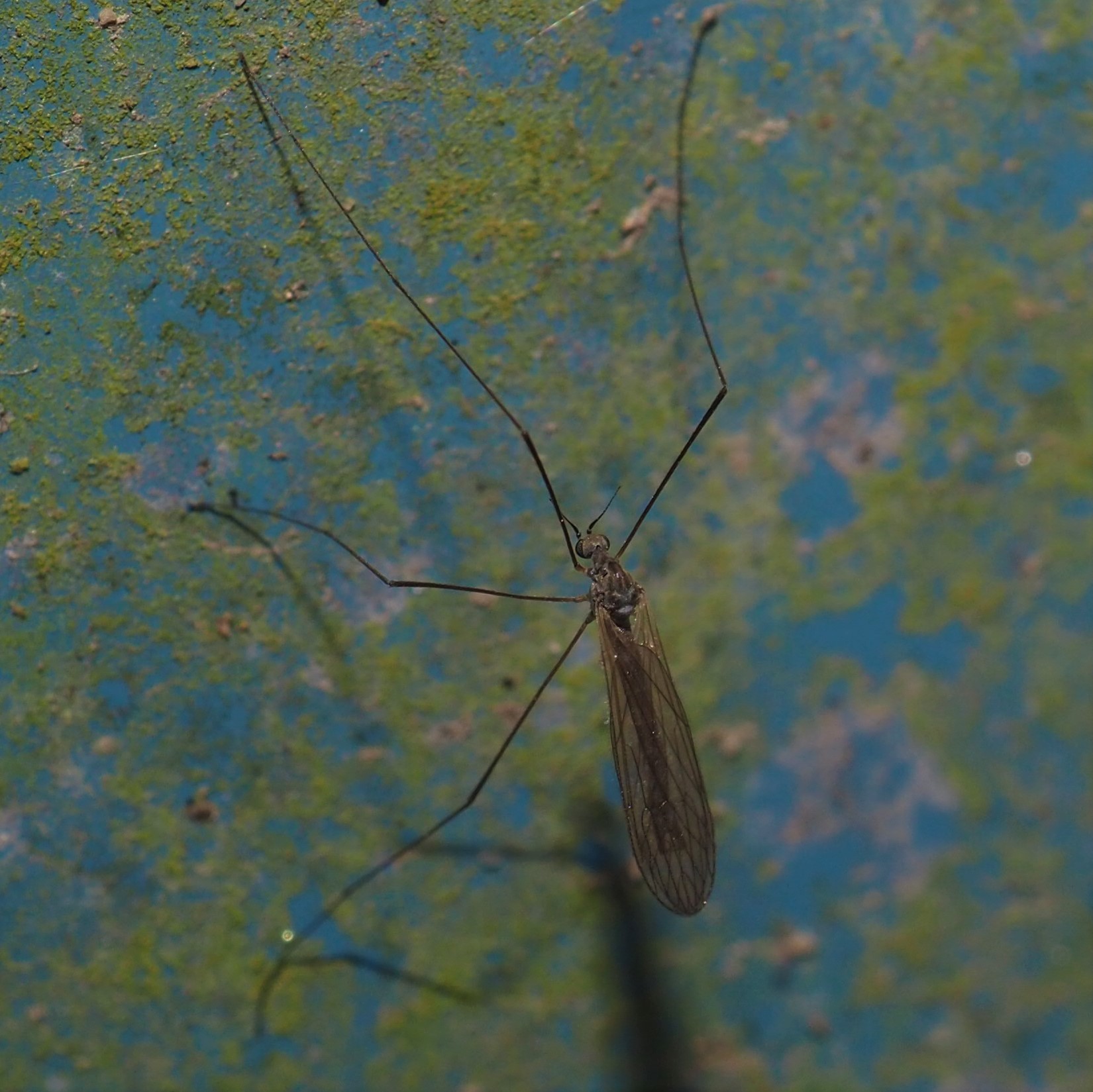
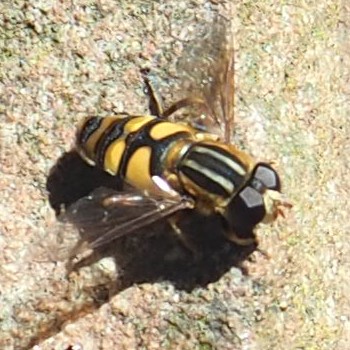
This tiny Fly was all over the day I snapped its portrait.
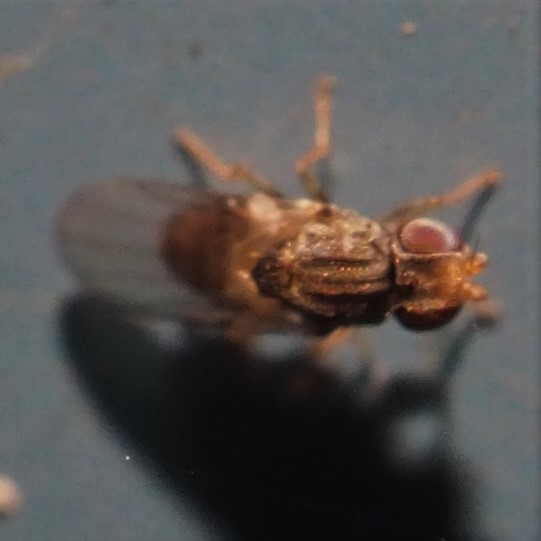
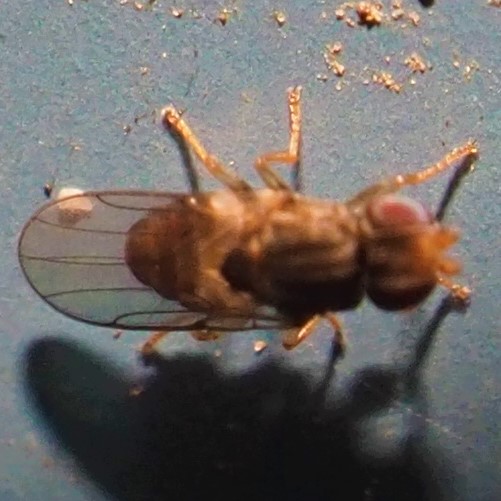
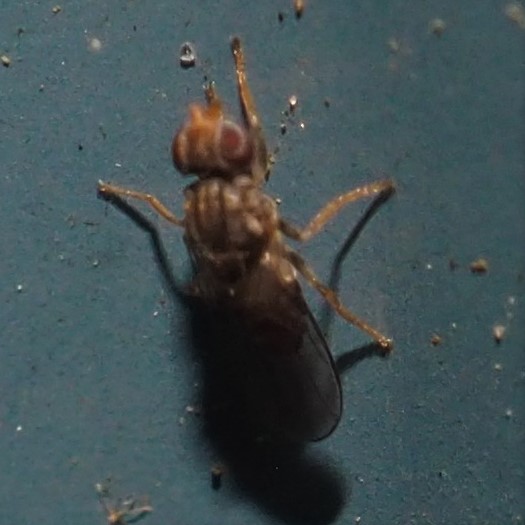
Here are three Mosquitoes. The first two are Females - and hence the fat tummy on number 1. (Females are the ones that drink from animals, including sometimes US. The Males have the fancy antennae, and the big proboscis, but they don't use it on us.)
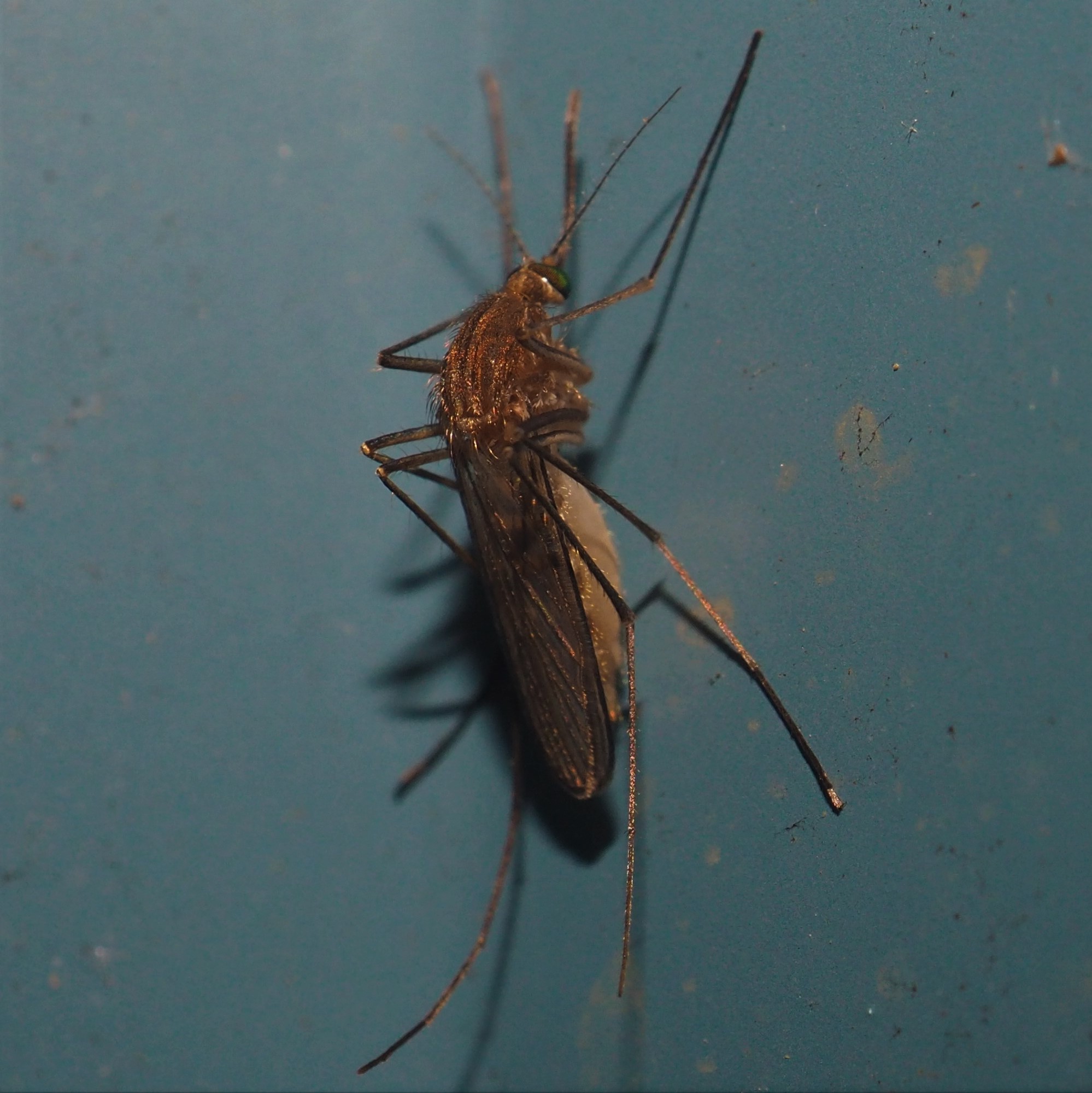

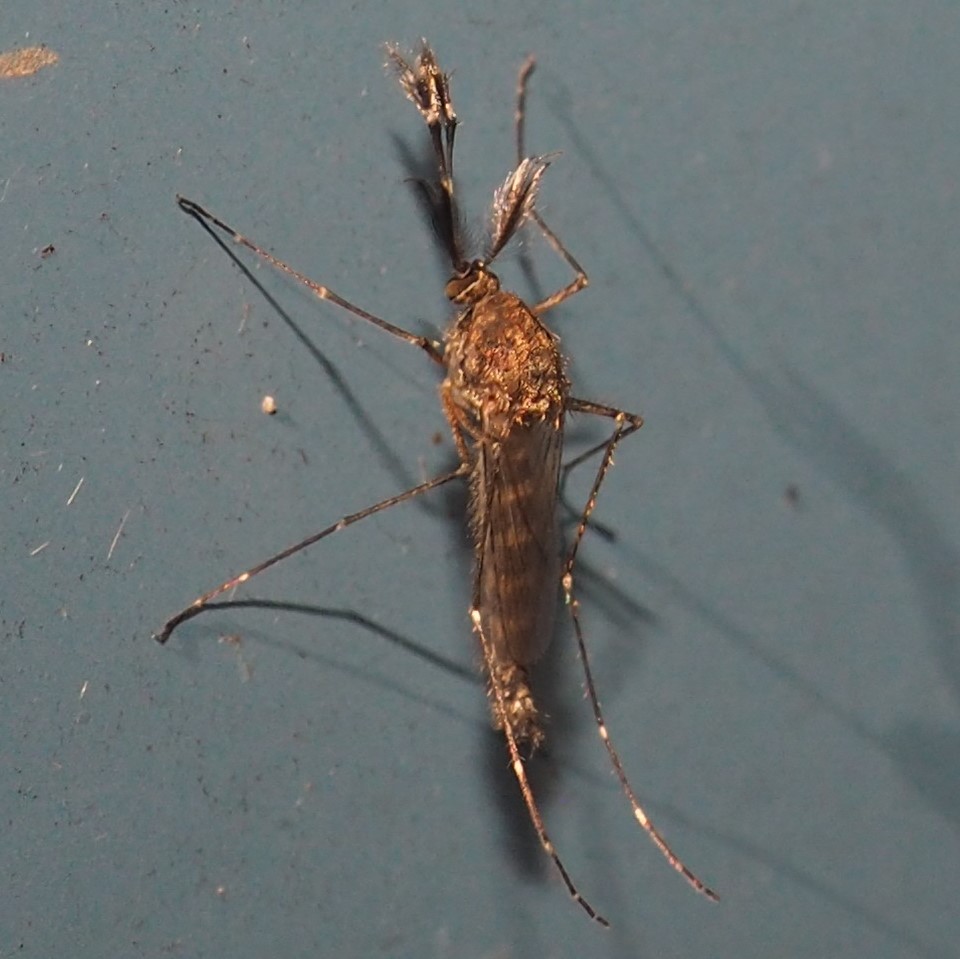
Meanwhile, here is an unusally-shaped Fly. The second one seems to have picked up some of the blue coloring of the square of blue steel siding on the Wall. The third looks to me like the unattractively named Fungus Gnats that love to feed on the Lichens on the Wall.

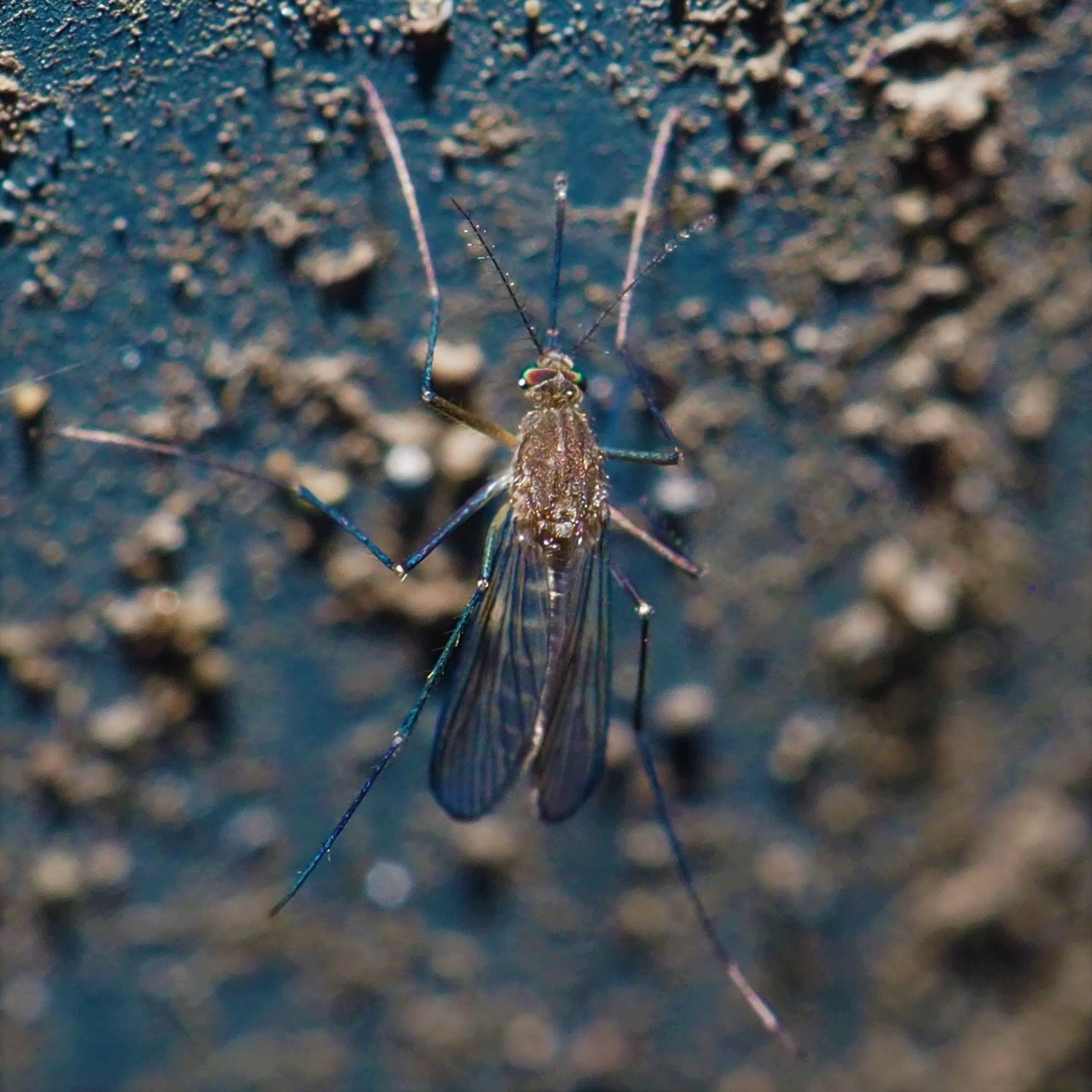
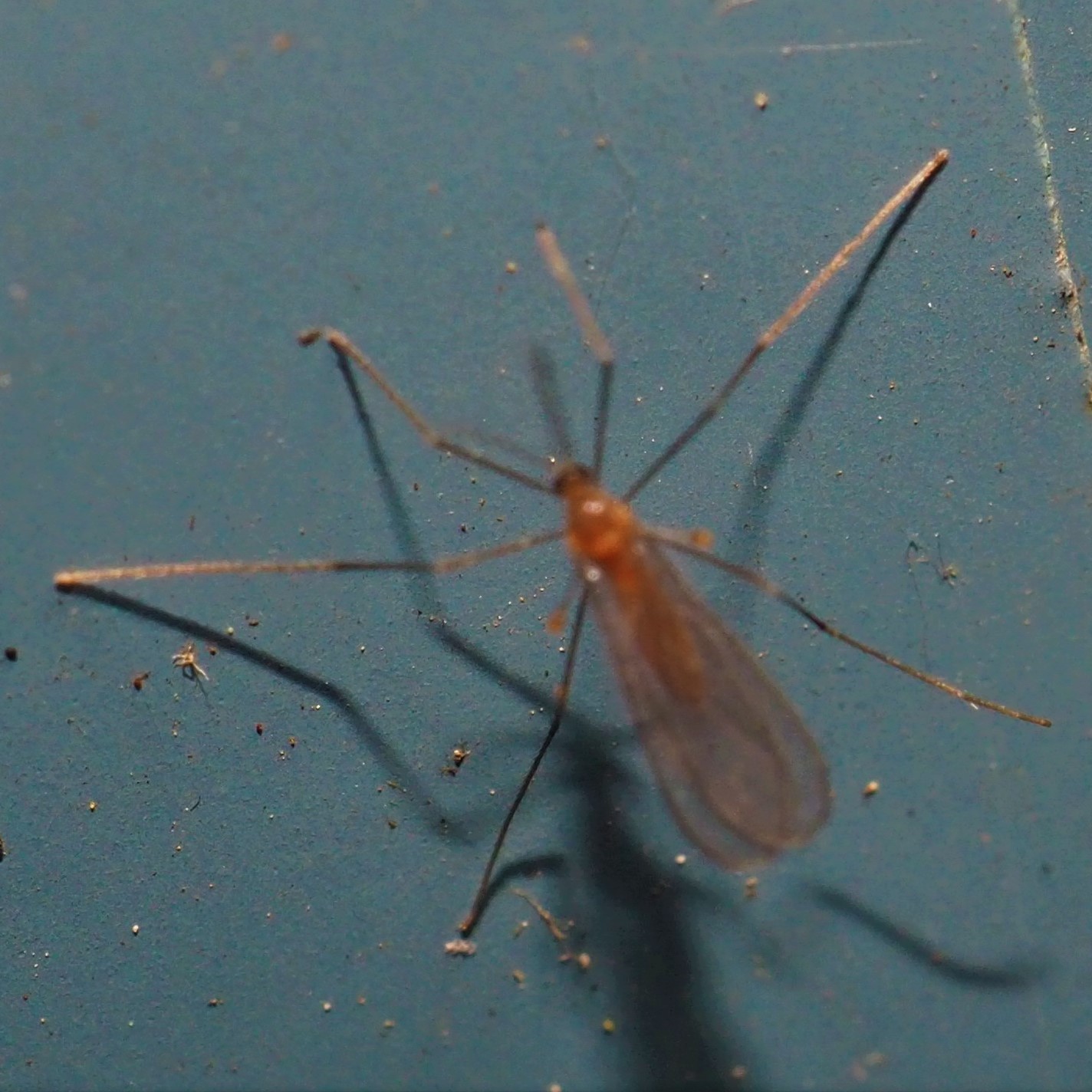
How about a short Flower Walk? Here it is - the last Japanese Anemone of 2022! Nearly the last of the golden Goldenrod! And the beginning of the Autumn Joy Sedum!


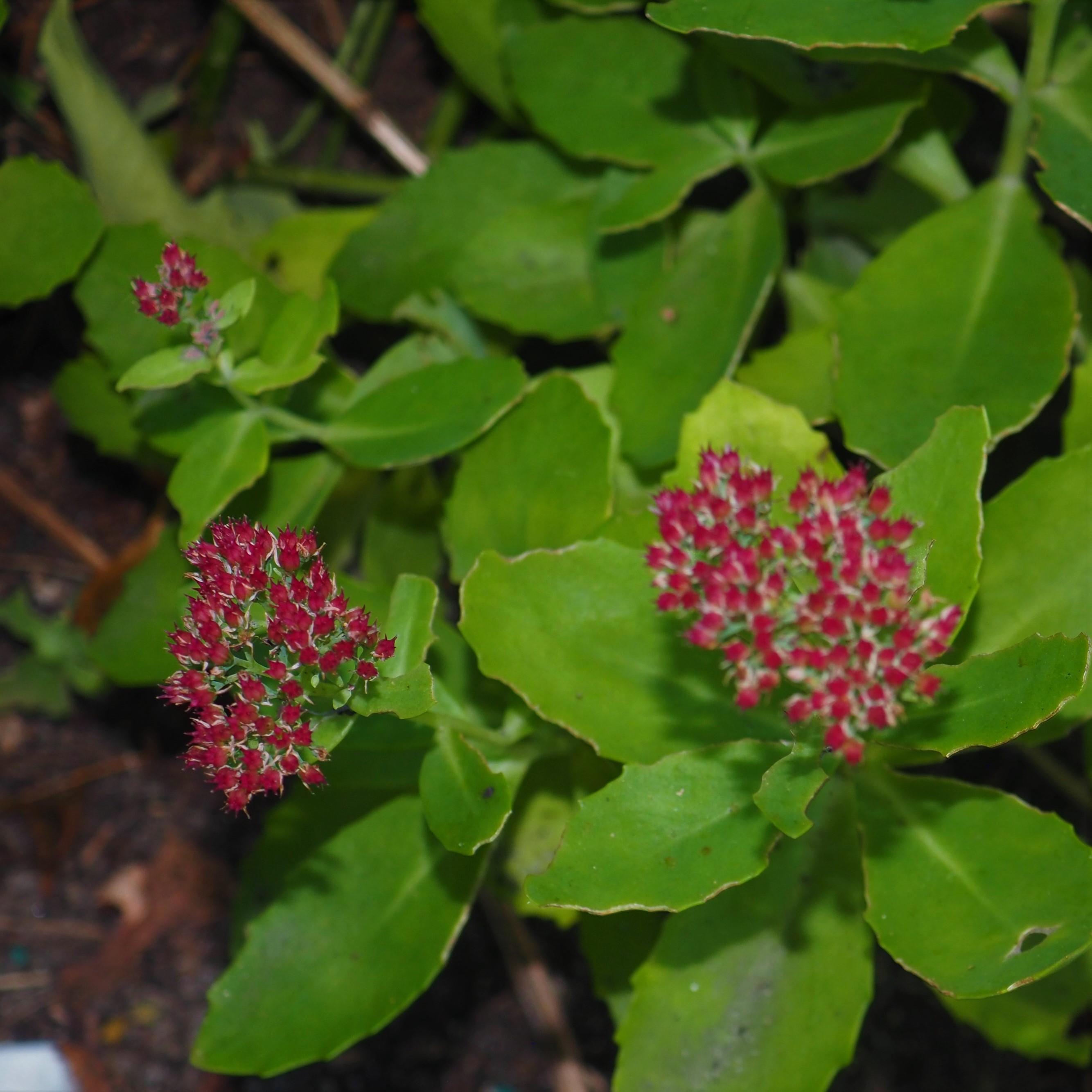
Those beautiful Asters are still at it. Our Mail delivery ladies must be ready for it all to go. I've been trying to keep it tied back, but it is almost irrepressible! I've been cutting huge armfuls of it for the dining room, but what's left just spreads out! Thank you Ladies for being so hugely patient!
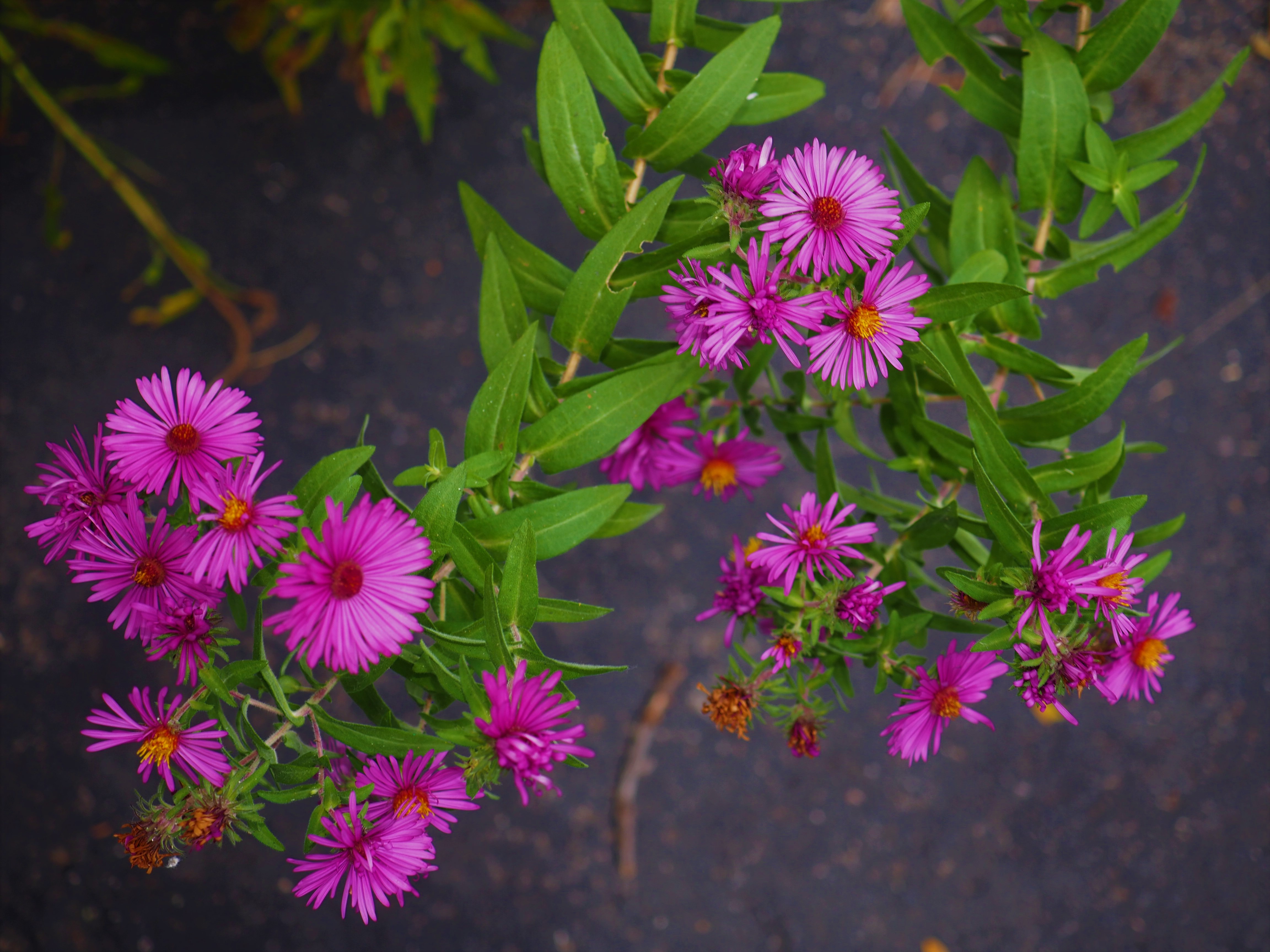
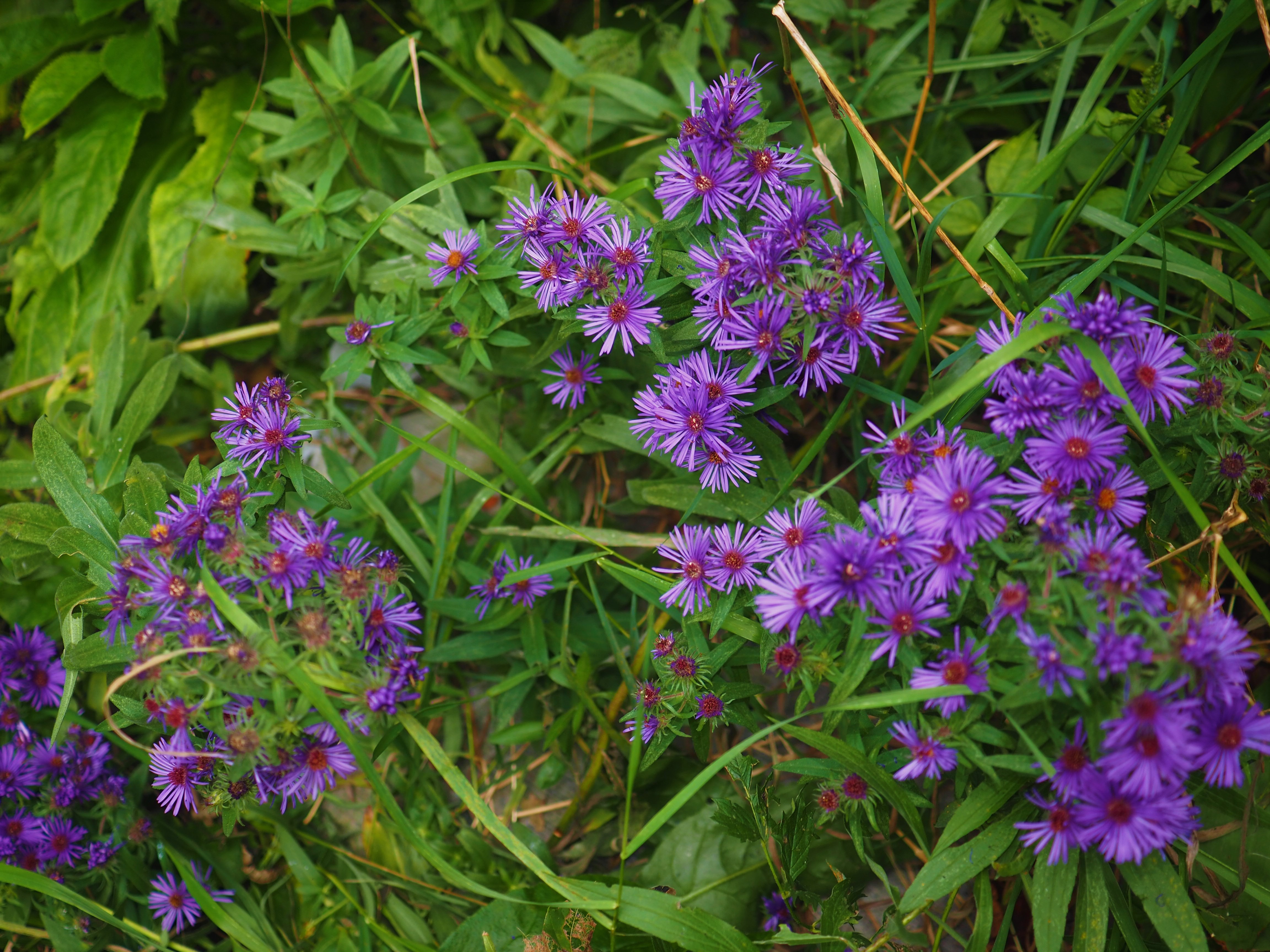
The Fleabane and other small white flowered members of the Aster clan are just coming into their own.
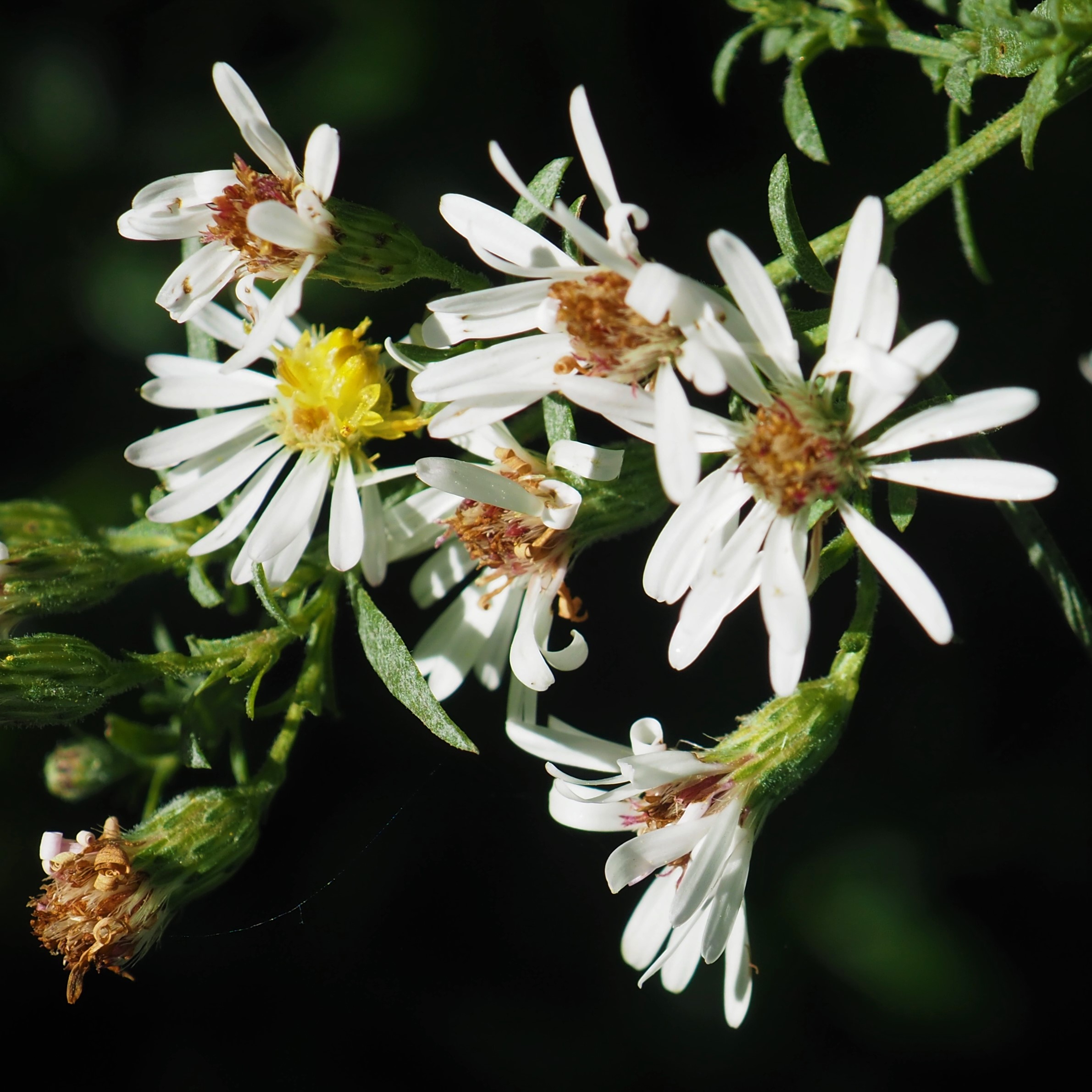
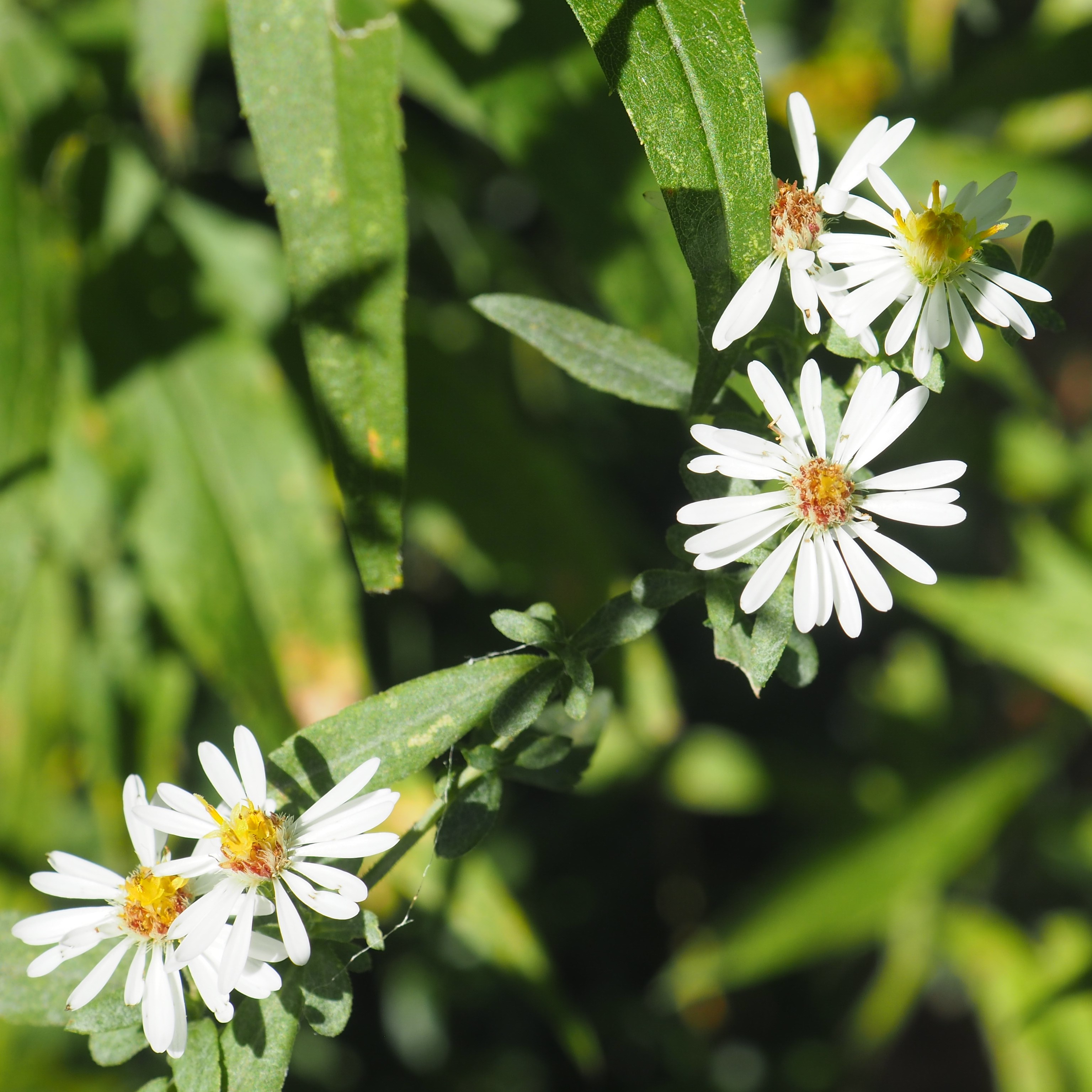
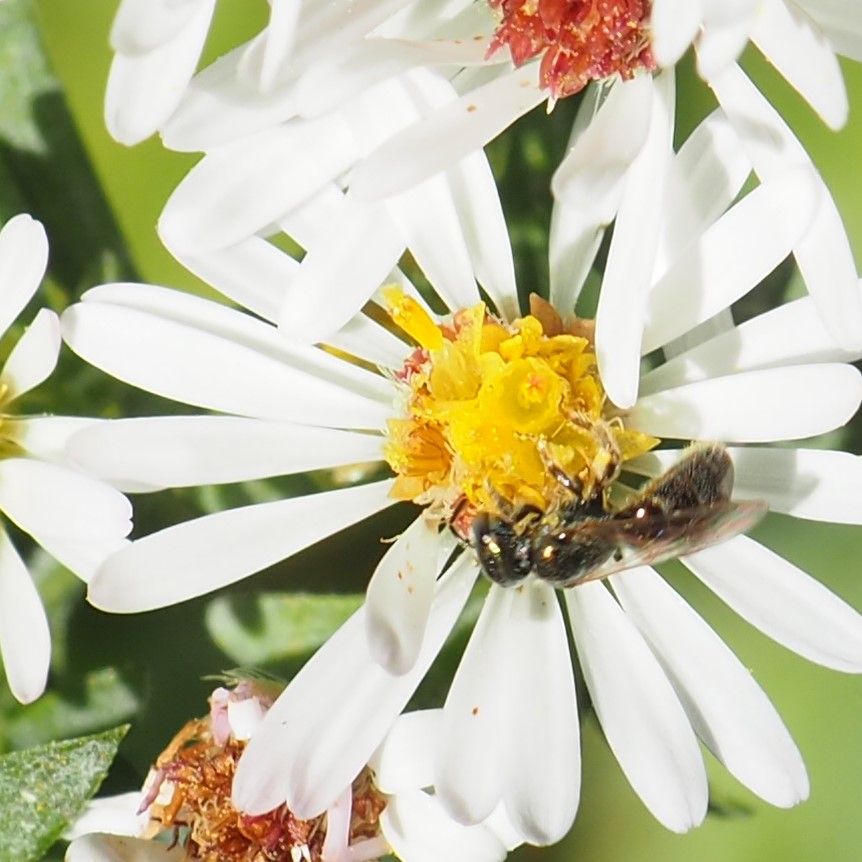
The Coralberries in the extreme Northwestern corner (before you get to the tangle of saplings) - remember their tiny flowers back when the little Fraternal Potter Wasps were choking down as much sap as possible about a month and a half ago (picture 2)? - now they're fat and will be a source of bird food during the winter.

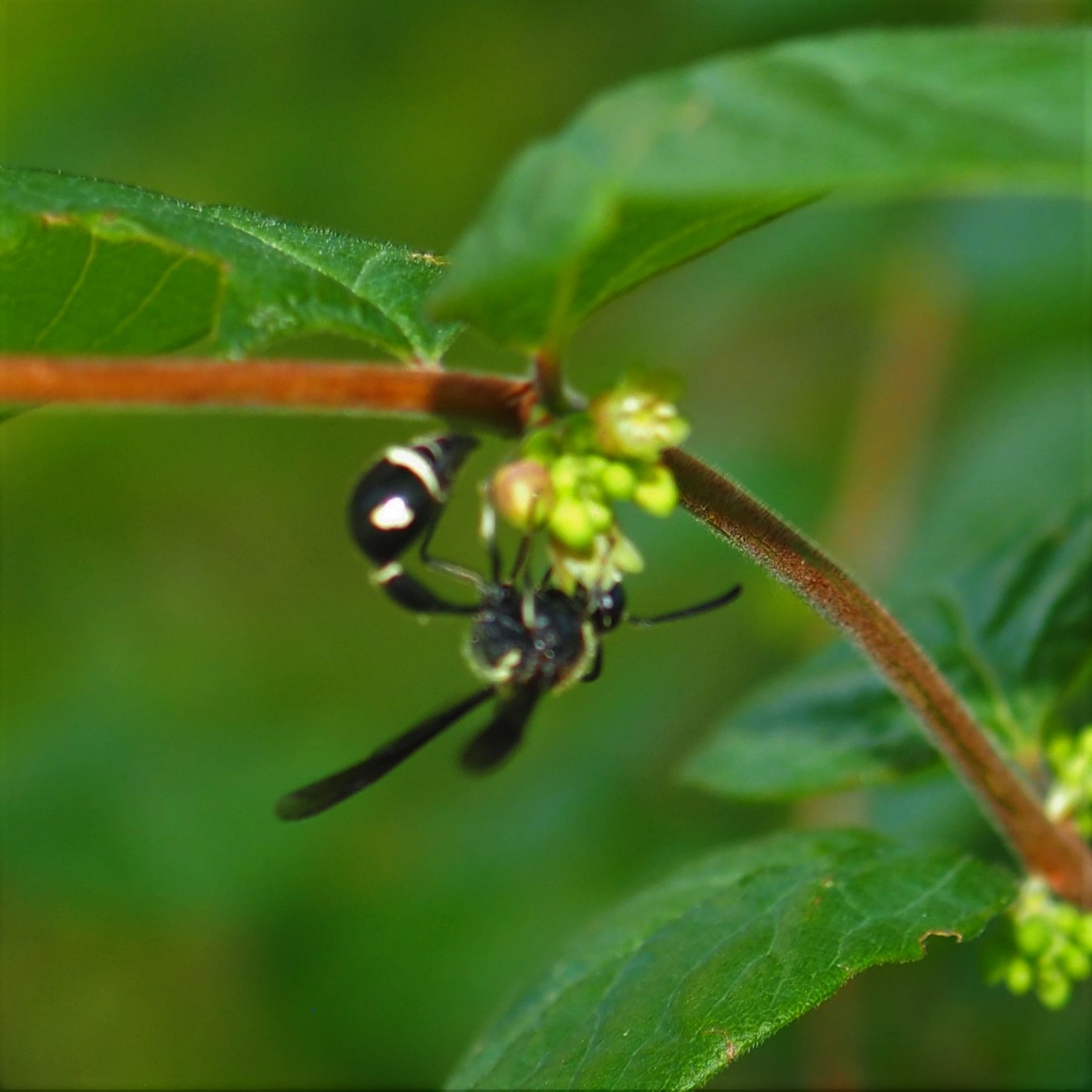
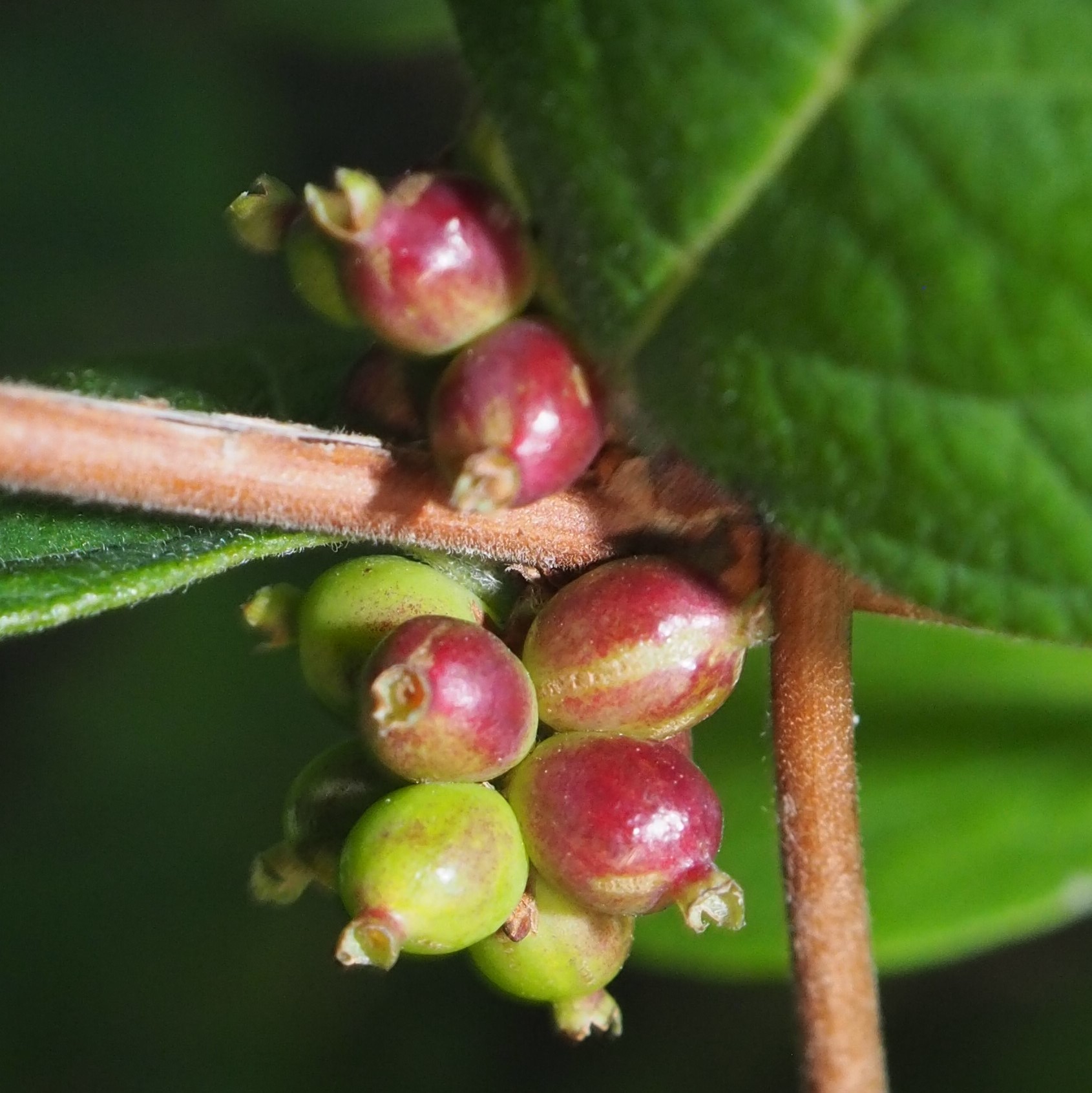
The Colchicums - several varieties - were wonderful this year.

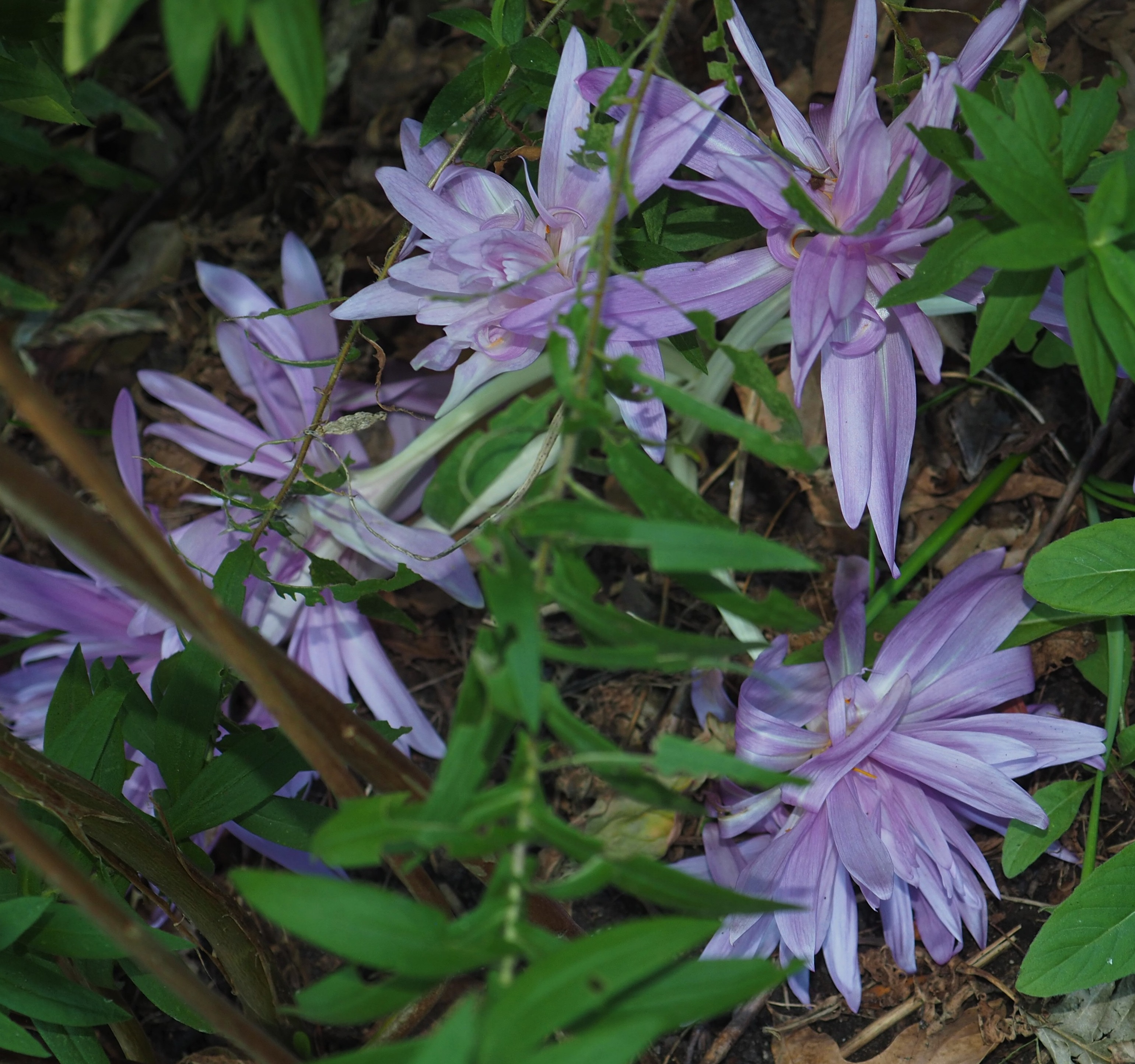
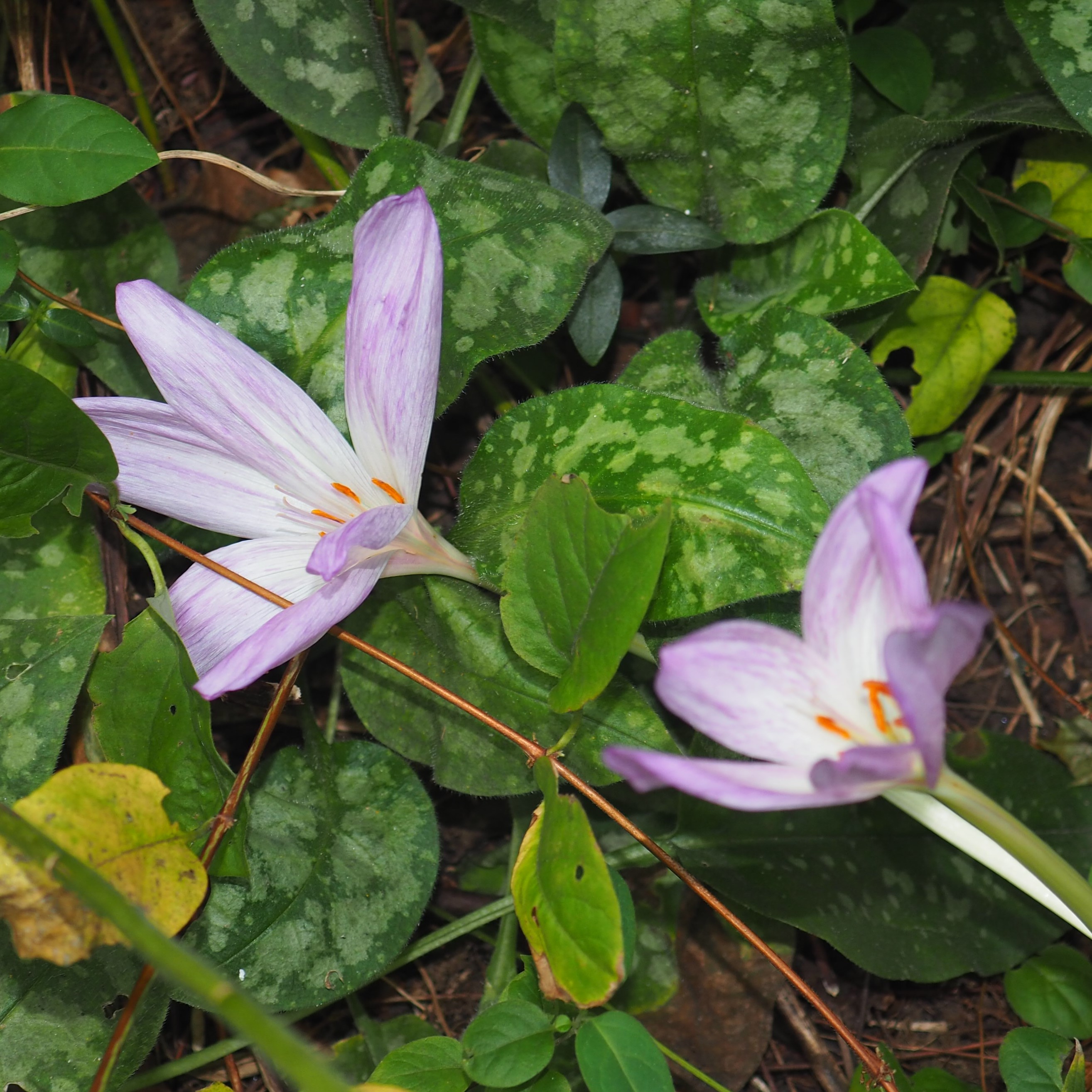
The Euonymus (Firebush) becomes redder every day.
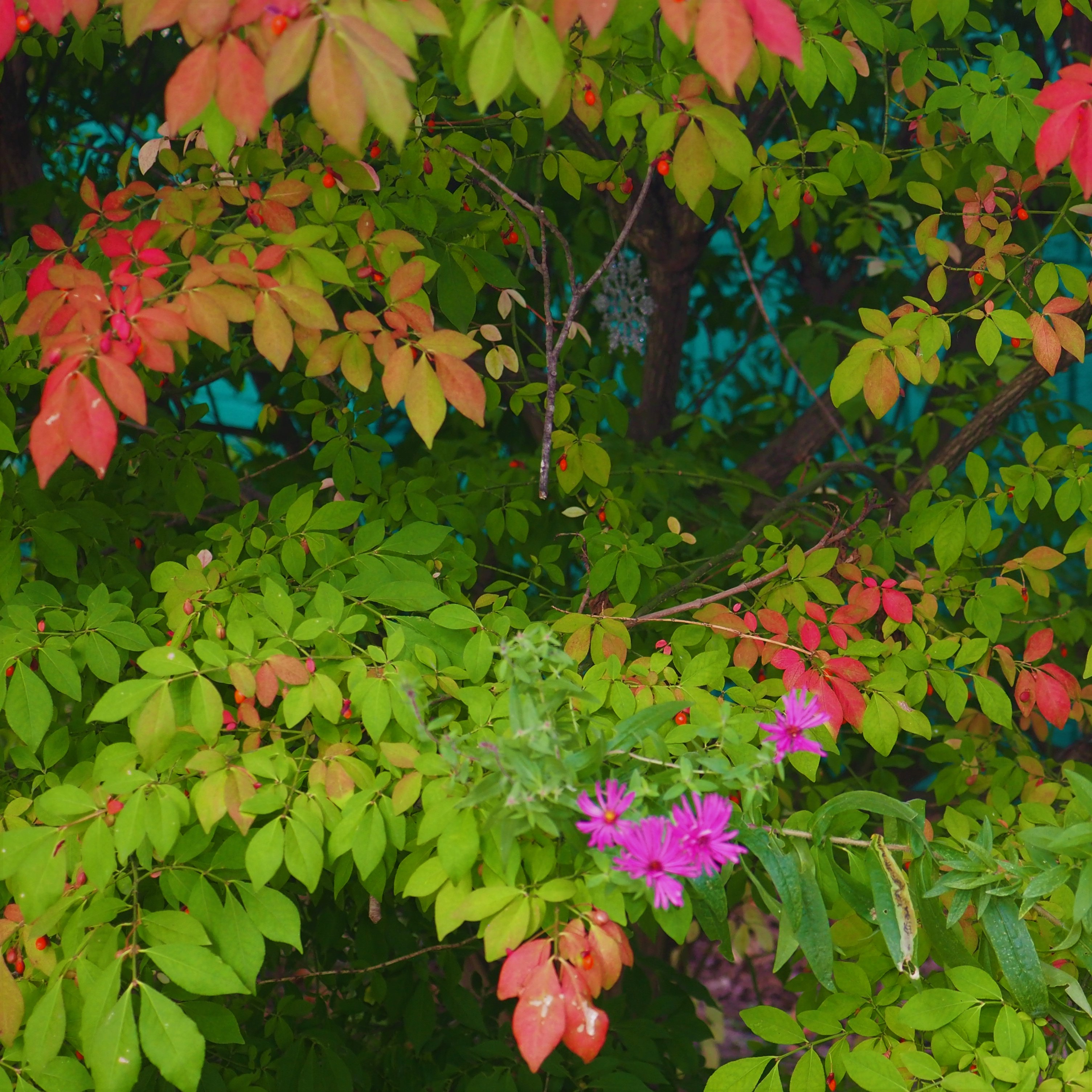
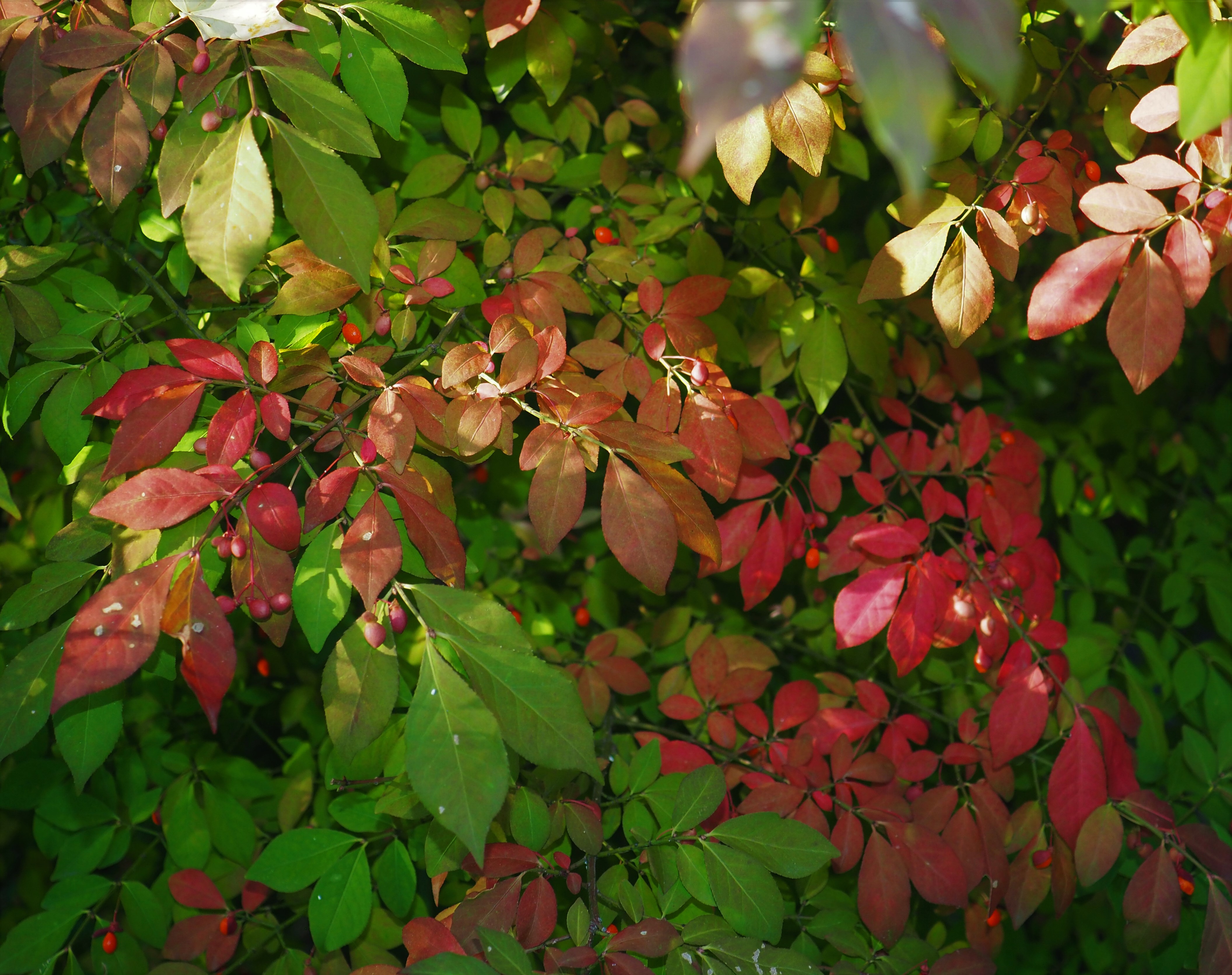
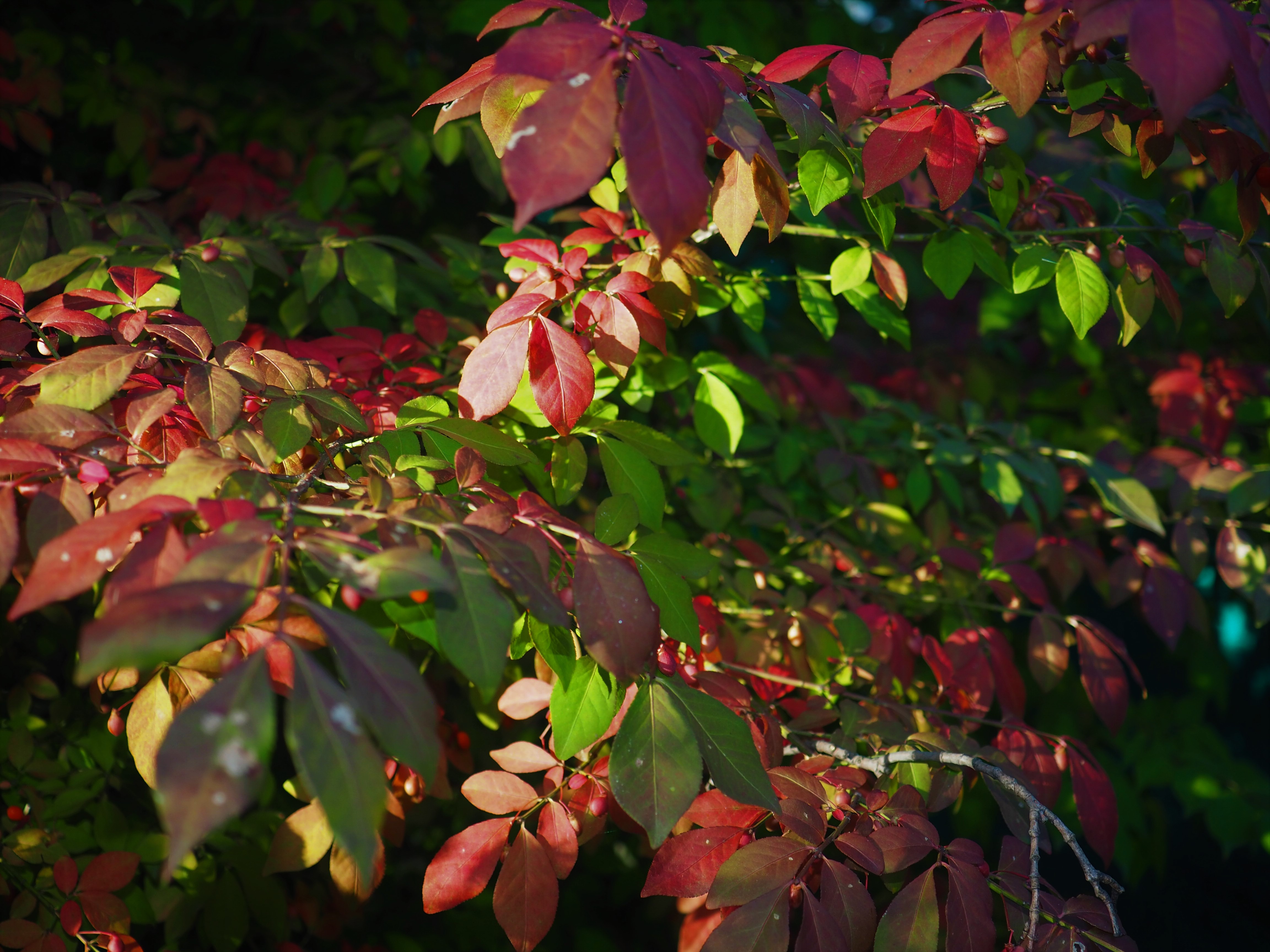
So do the Maple Trees. The one in front of the house is close to a Sugar Maple in genealogy. Picture 3 shows the Tree beside a neighbor's house.
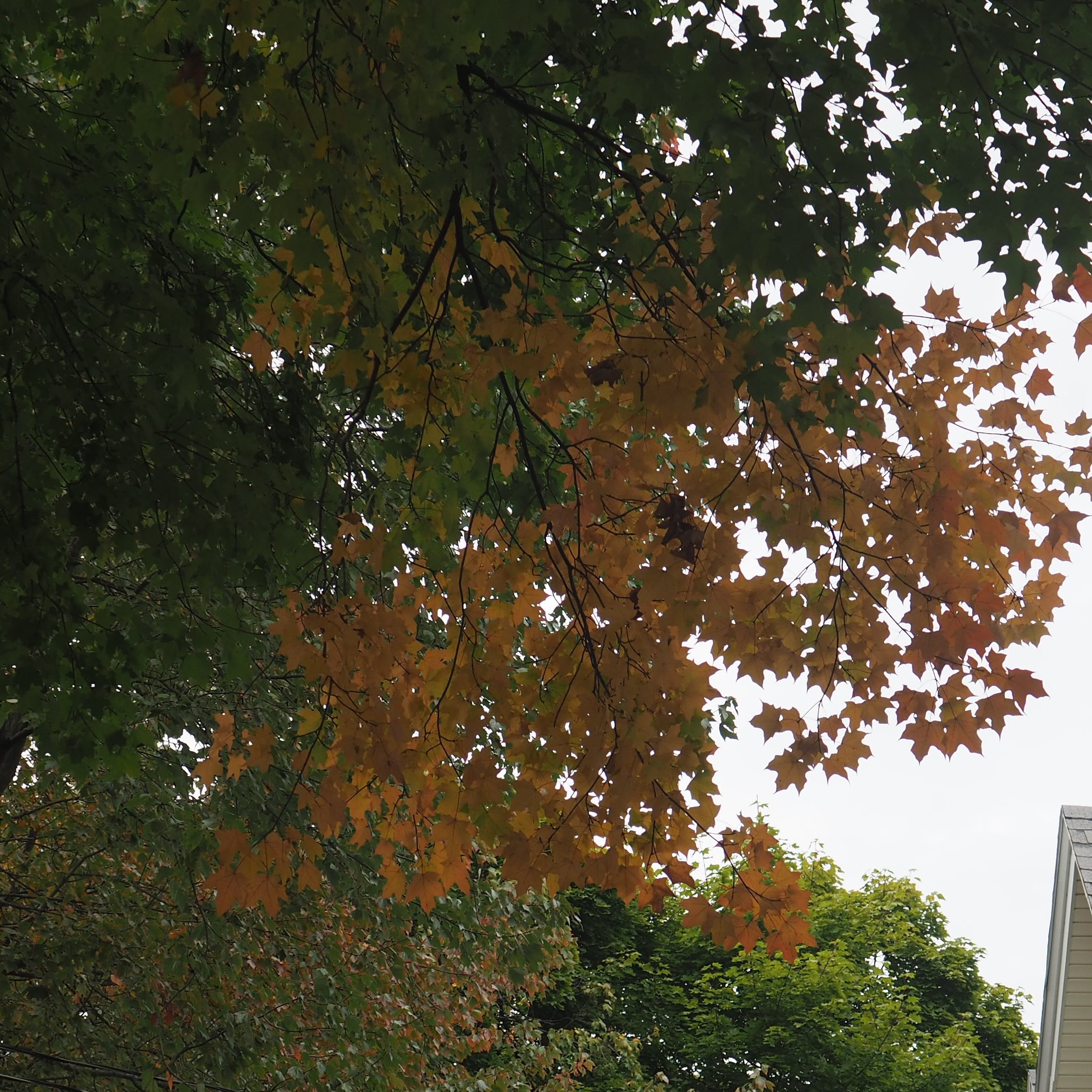
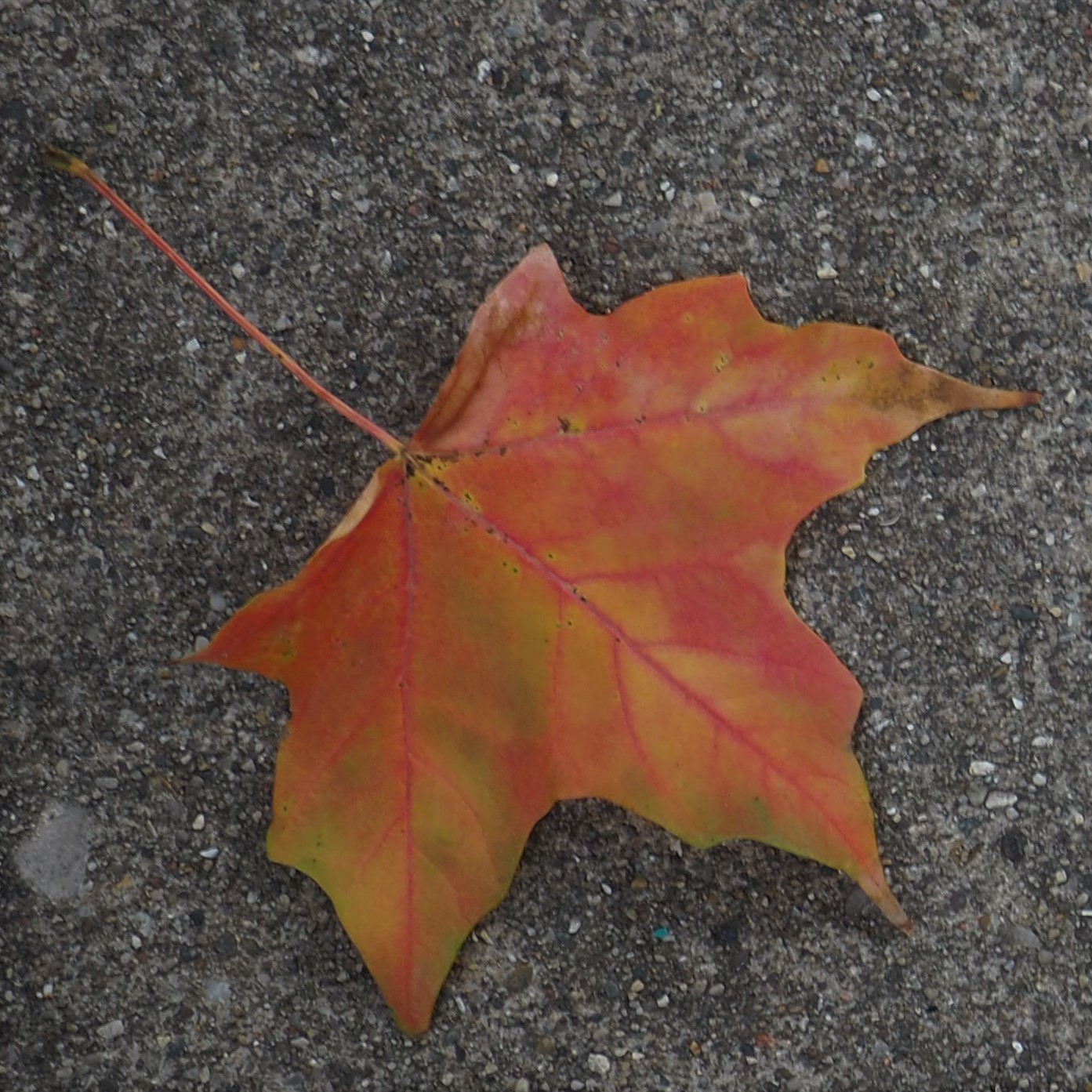
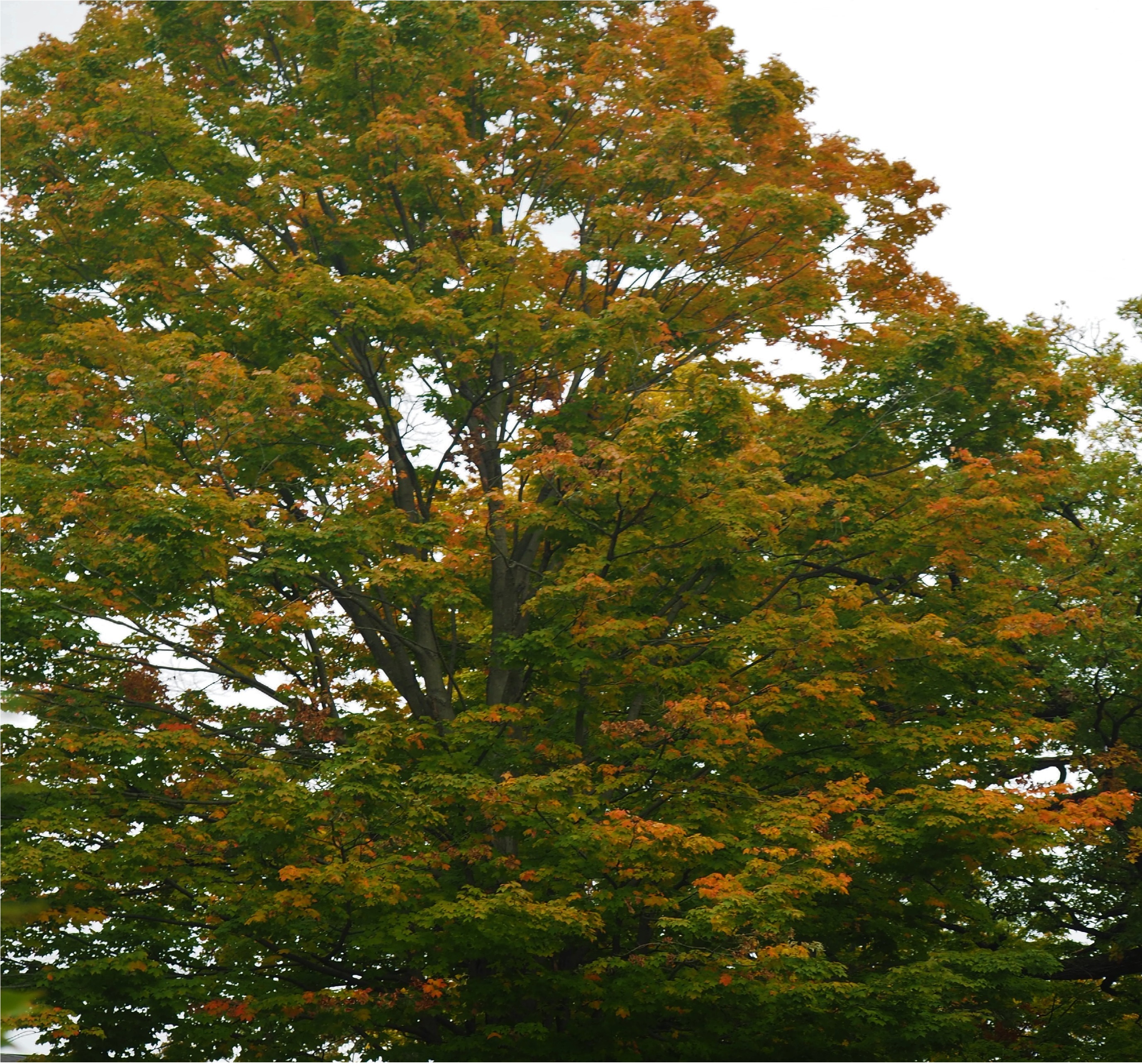
So that was our Flower Walk, and we find ourselves looking for the Spiders of the Week. Here is the Cellar Spider we have found every weekend for a long time. And the Common House Spider, probably the most numerous of all the Spiders we see in our yard. And of course that Cobweb Spider that we have seen so often.
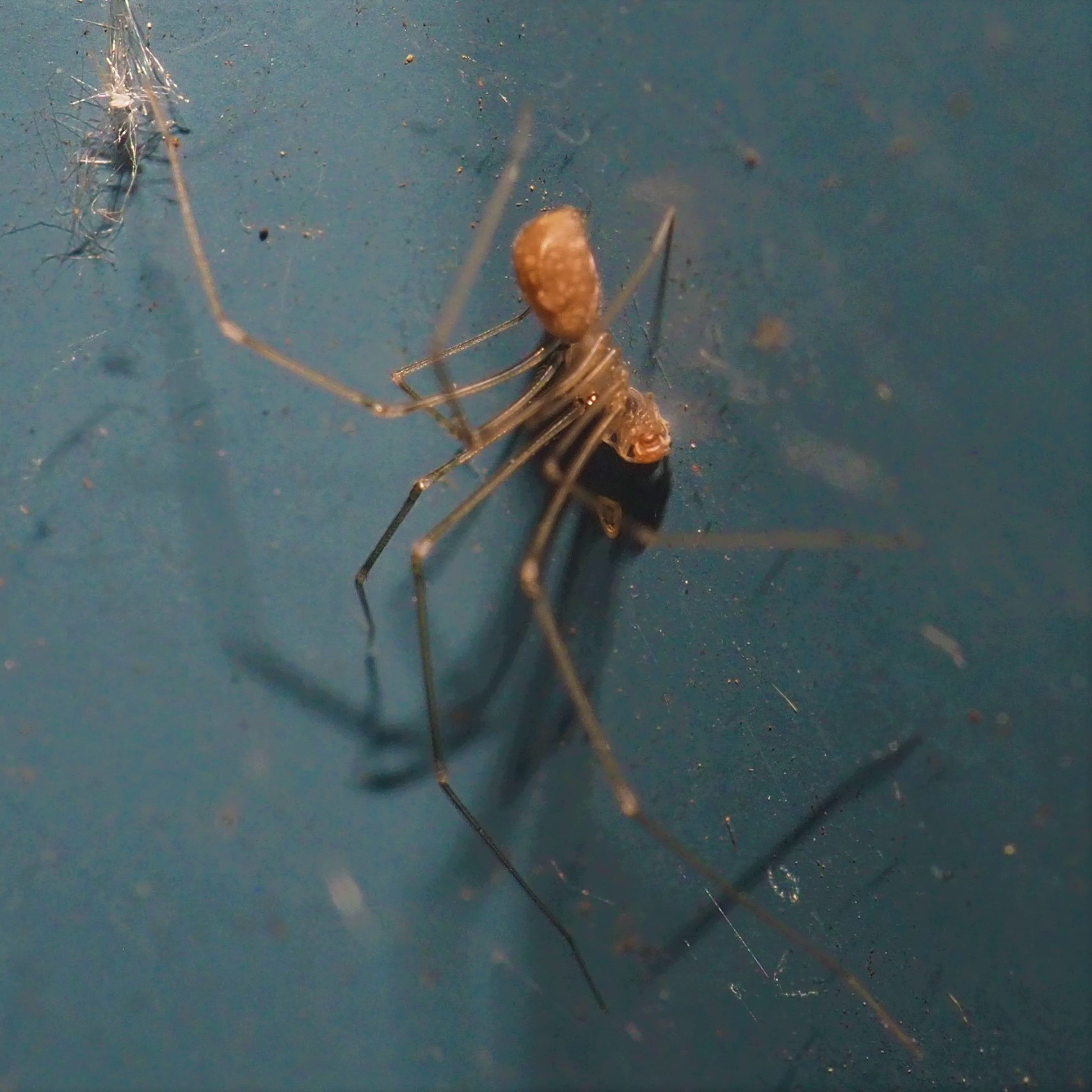
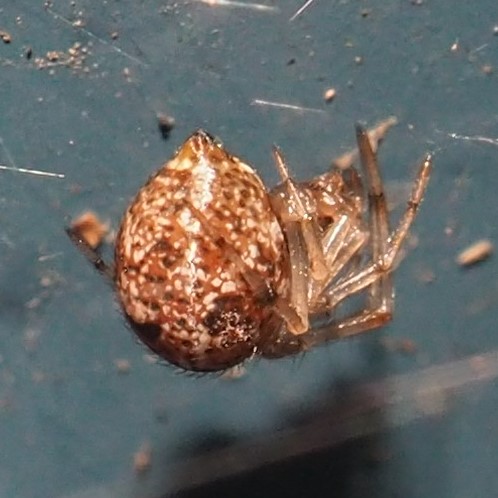
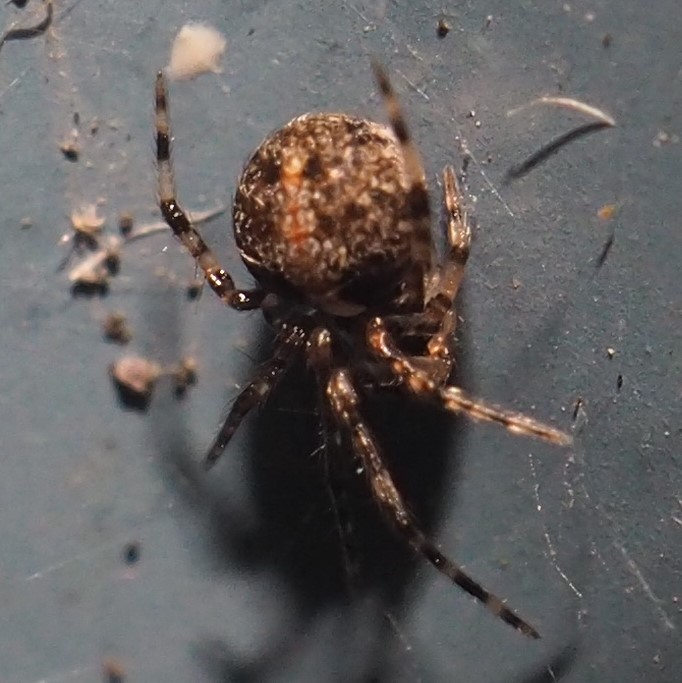
A small Crab Spider in some fading Goldenrod.
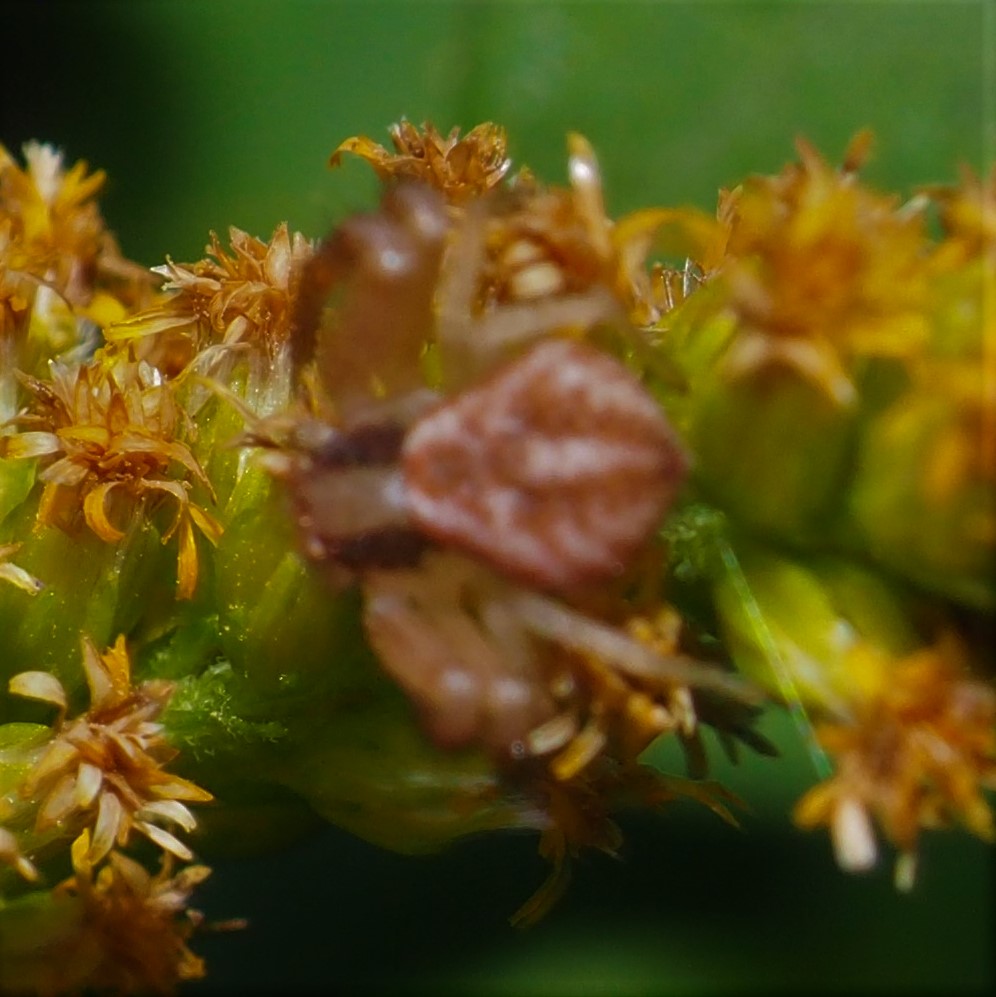
.jpg)
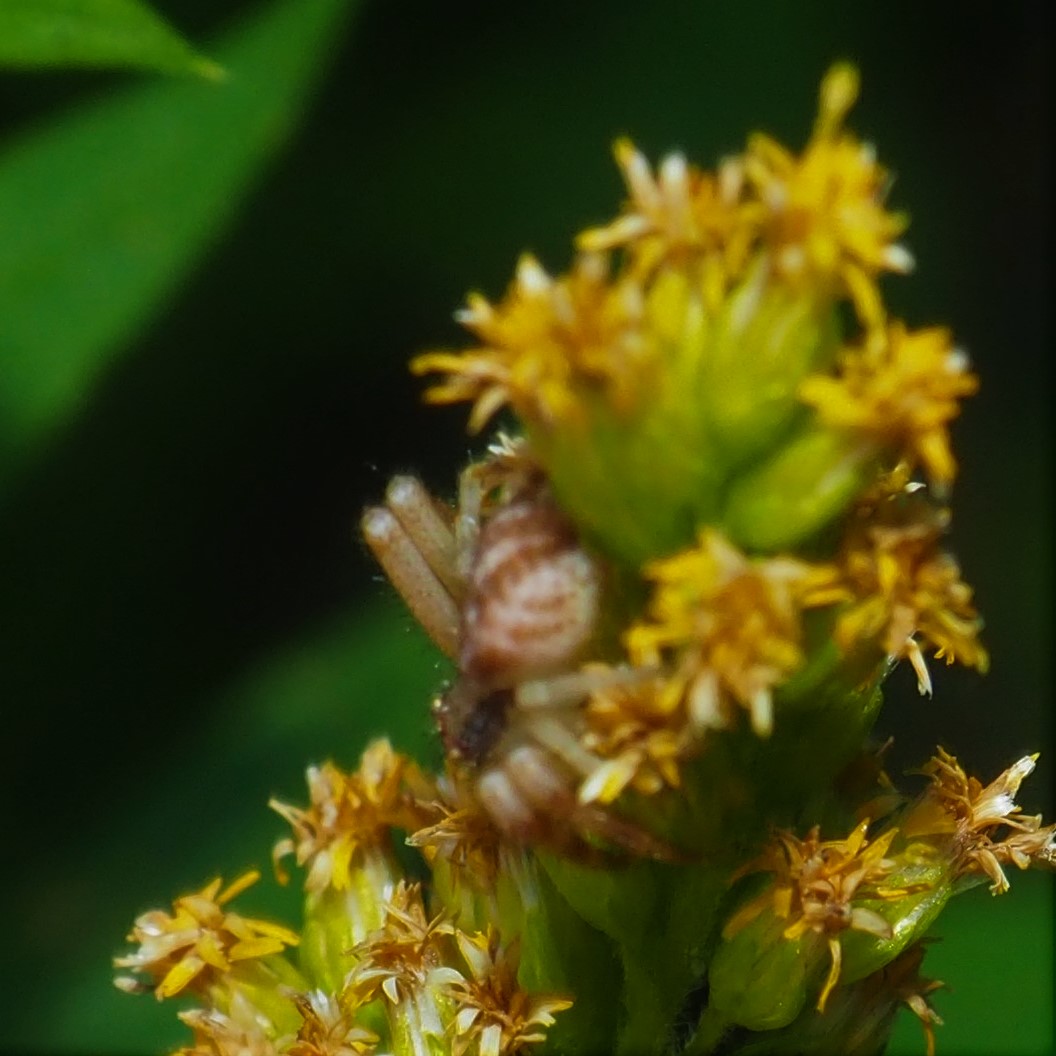
That Grass Spider still has its nest by one of the bolts on the Wall. Picture 2 shows a juvenile Jumping Spider, probably Naphrys pulex.
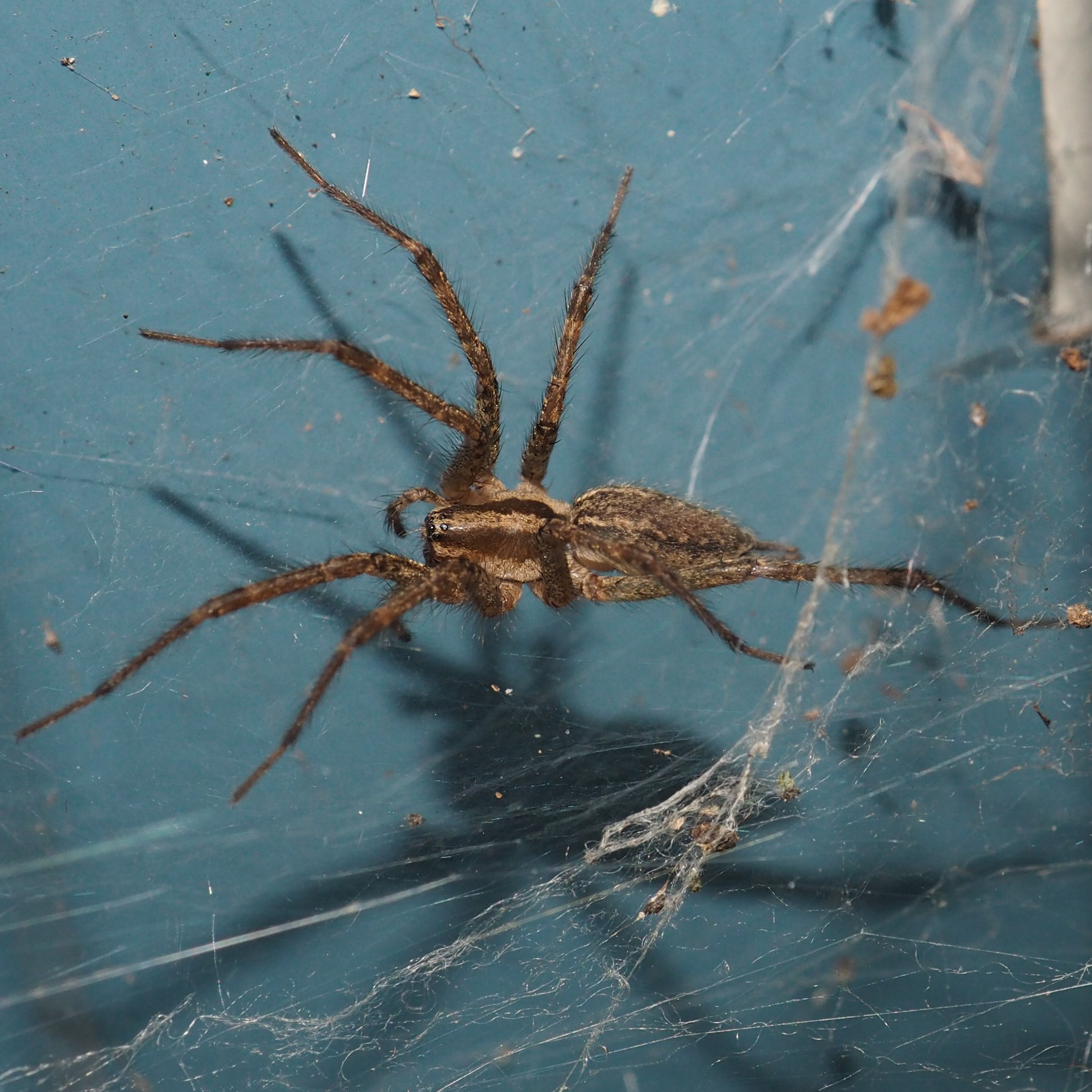
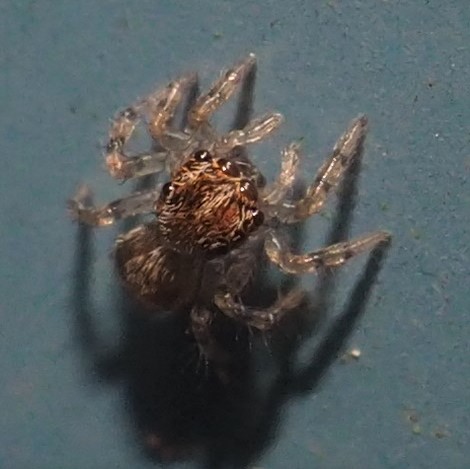
I've seen more Common Pirate Spiders this year than ever, and have been trying to photograph as many as possible. This little fellow must be very young. In picture 3, you can JUST make out the "necktie" on the abdomen.
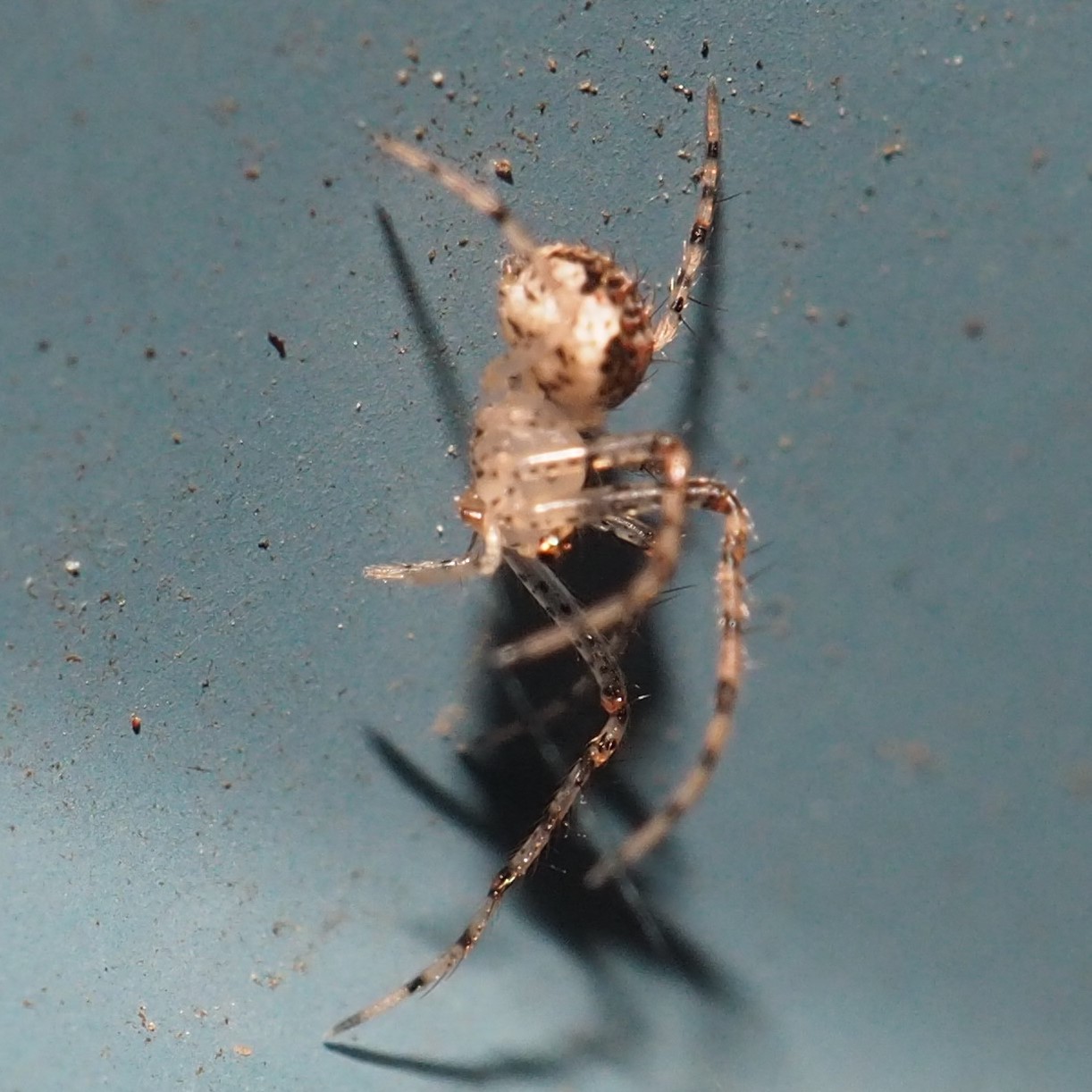
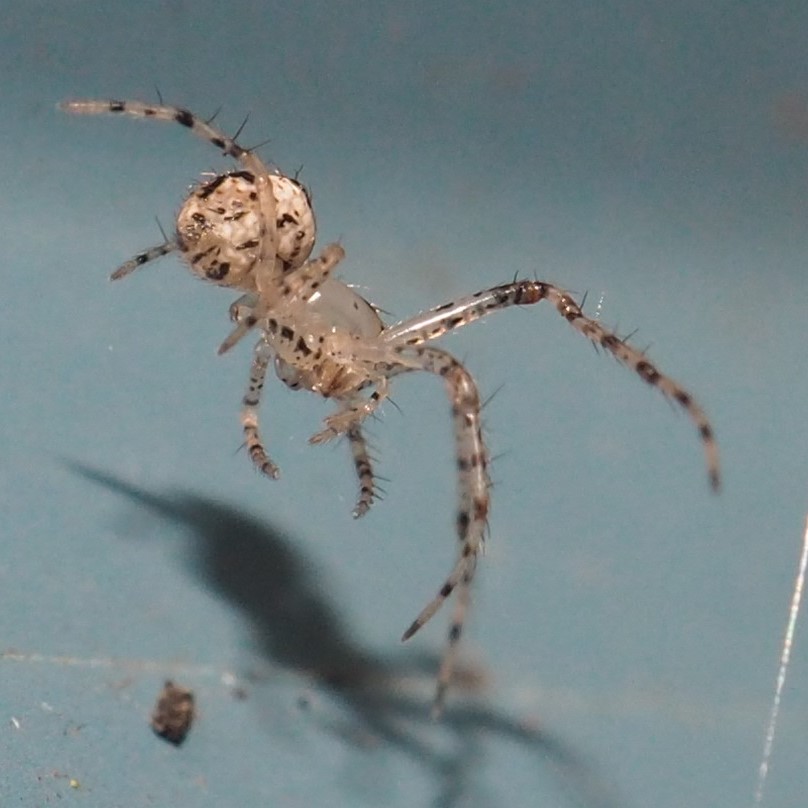
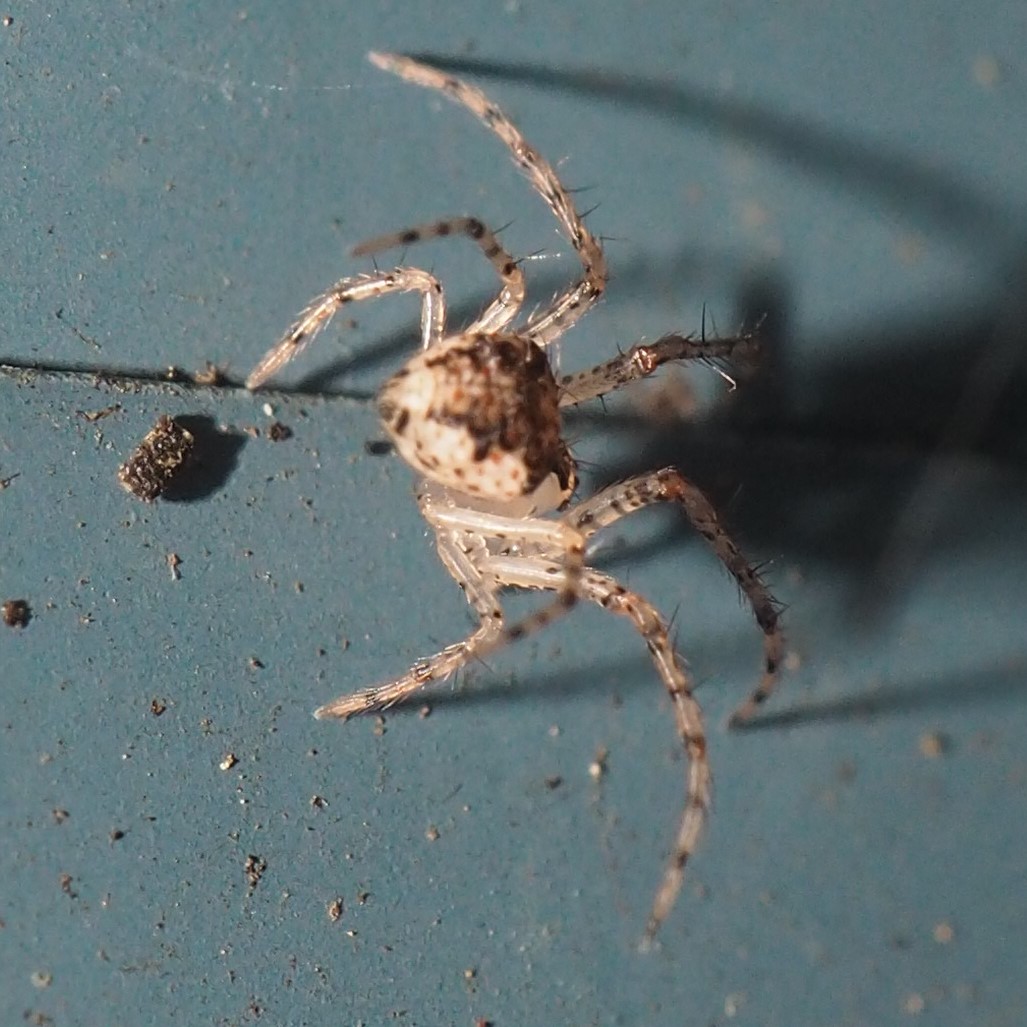
Here's one more picture of the Common Pirate Spider, Mimetus puritanus, down in Barklouse feeding territory. Again, this is probably a very juvenile Spider. In picture 3, you can see the "necktie" distinctly.
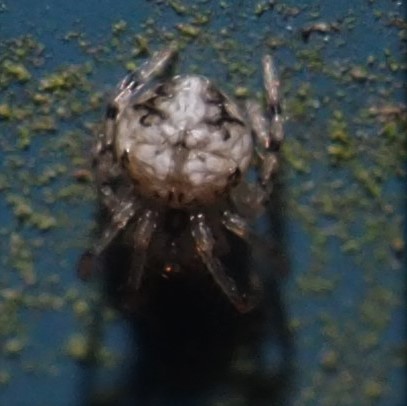
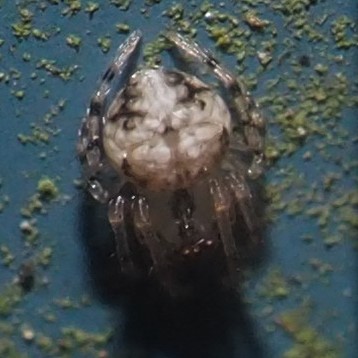
Here are a couple of Wasps that I don't know.
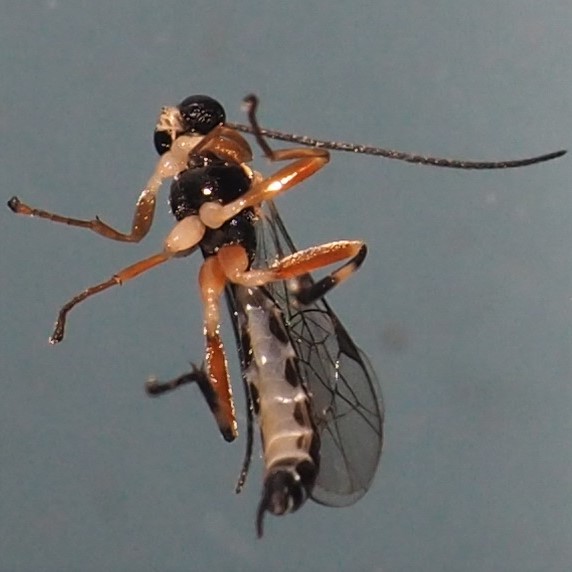
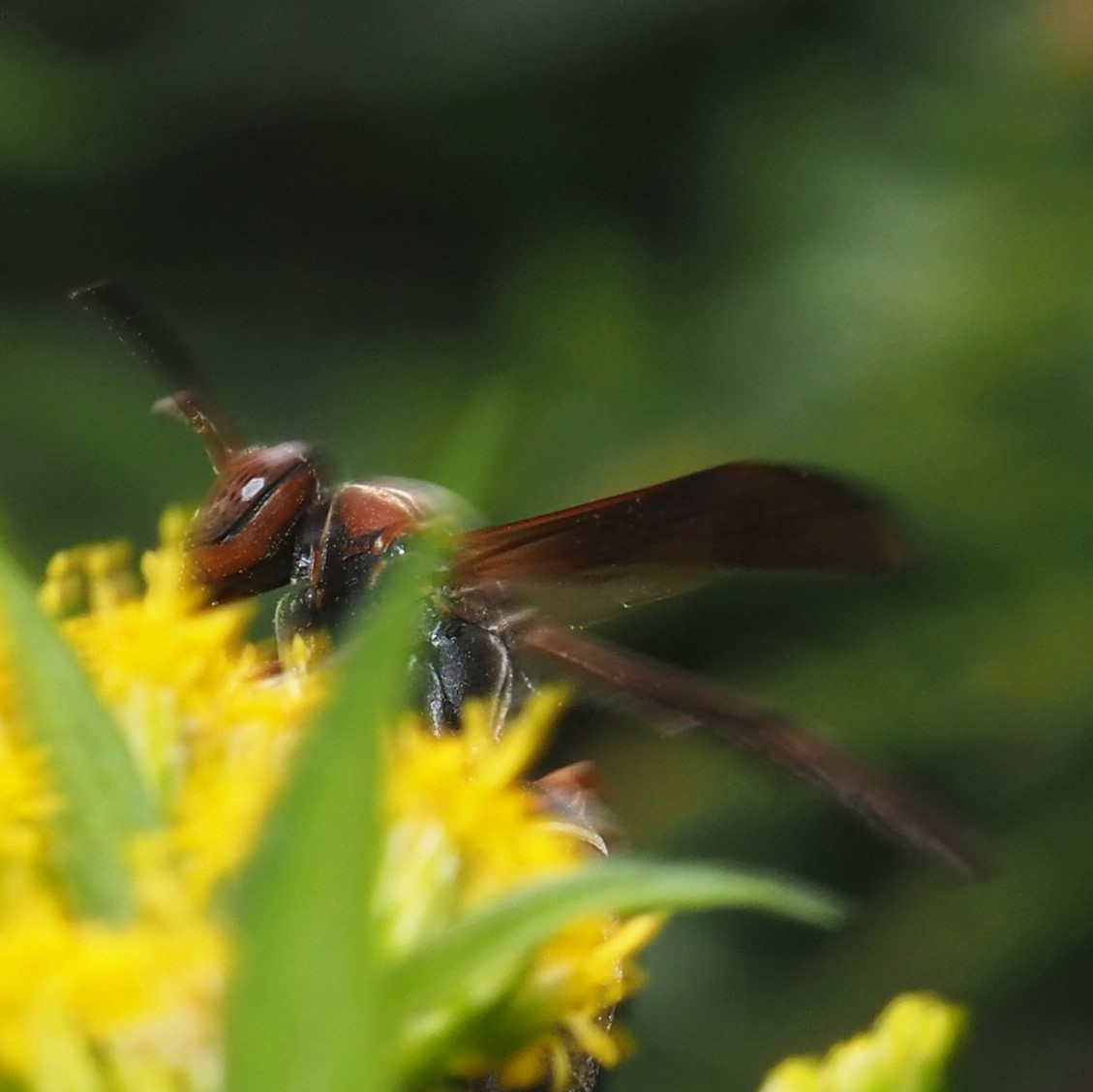
Which leads us to the Back Yard and the Pond. The temperature has been in the mid-to-low 50's F for a couple of days now (it goes down into the mid-40's F at night). And so I'm having to stop feeding the Fishes.
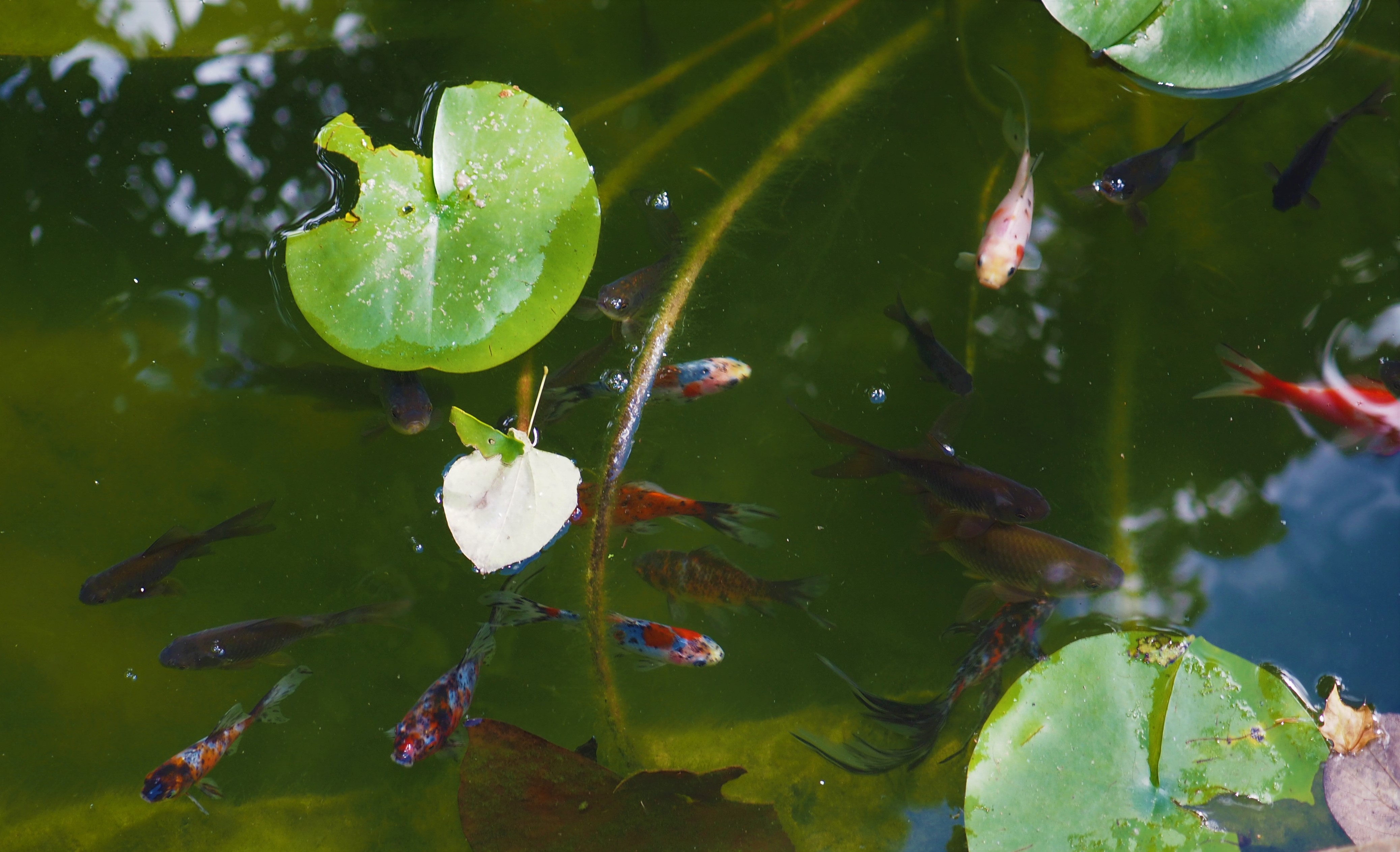
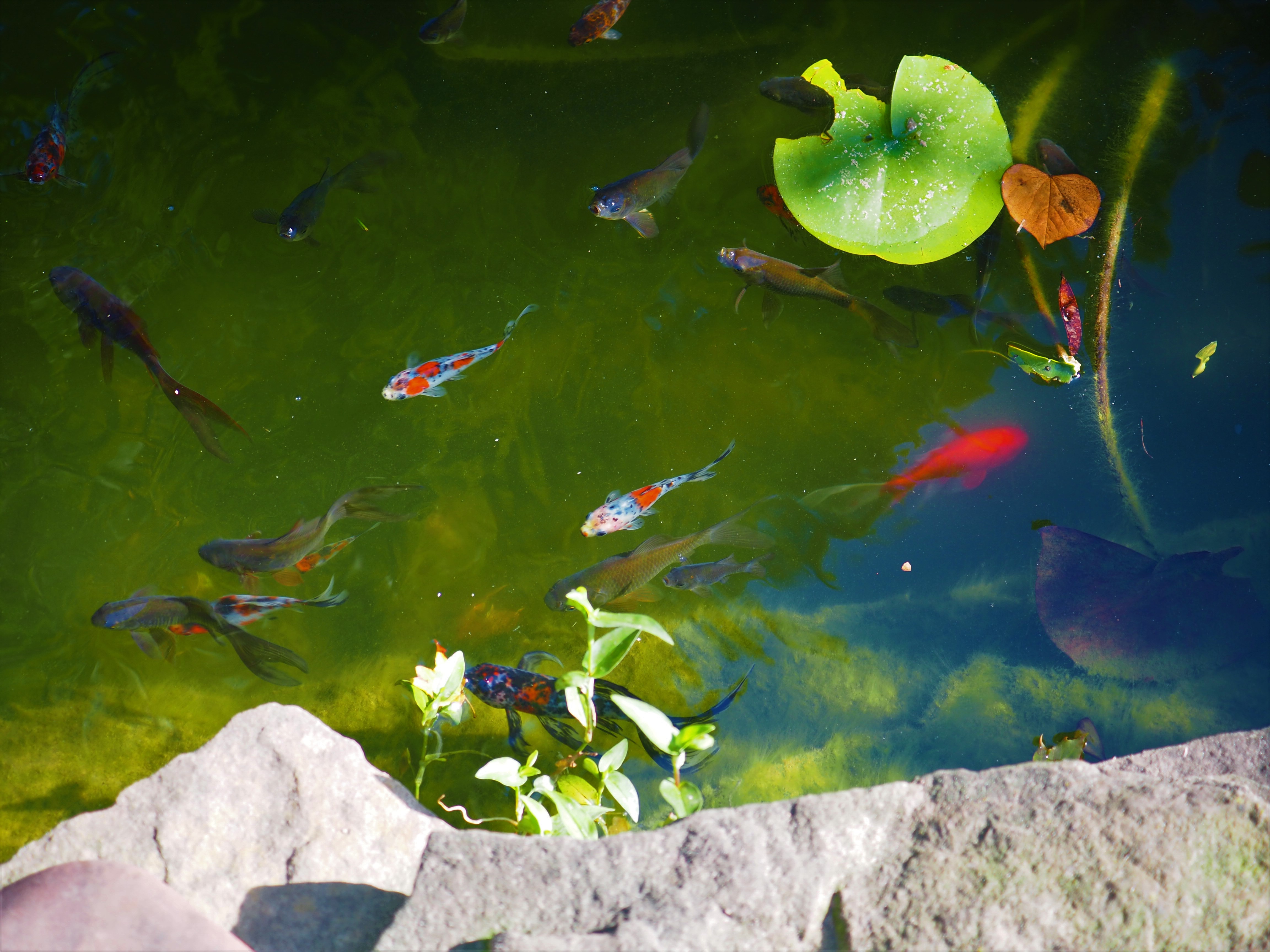
But while they were still feeding like crazy I got some lovely pictures of them, showing not only the bright colors of the less-inbred ones, but also the subtle colors of the more highly inbred ones. I had been thinking of giving away some of the ones that seem under natural light to be dull black or brown, but take a look at these puppies.
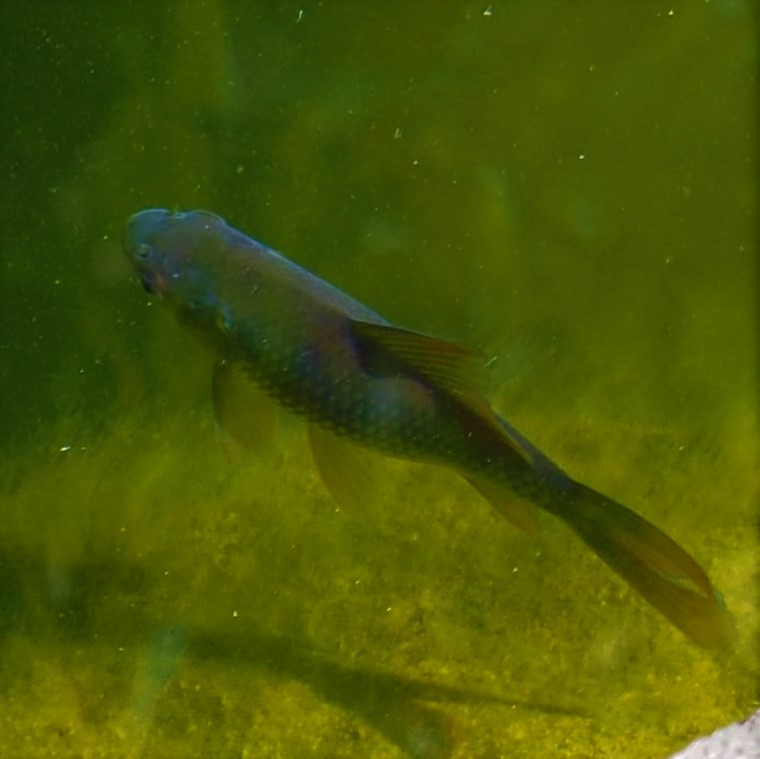

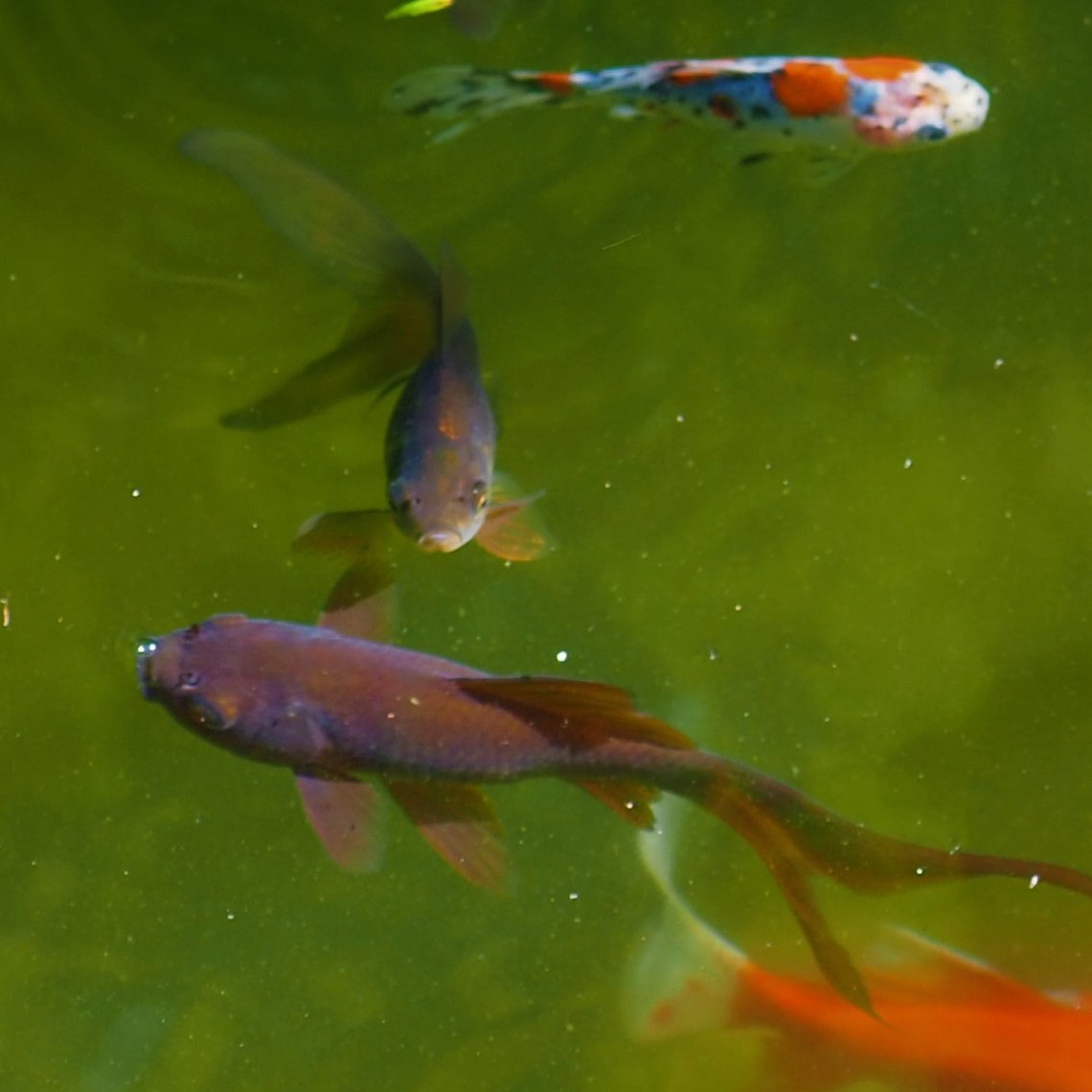
The Frogs are beginning to disappear. But a couple of days ago I did get some pictures of them. They will gradually go down under the water and sleep the winter through. Who knows, they might get a reprieve for a while as the temperature rises for a few days. But don't count on it. :-)



So I survived the week that brought in Autumn. I've moved my summer clothes to the guest room cabinet. I've moved my winter duds to my bedroom closet. We're into our Albion Area Lifelong Learners Fall Term. It's a transition. I hope you are doing well too.
Love, Martha
Back to October 2, 2022
Forward to October 16, 2022
Back to main menu
copyright Martha O'Kennon 2022
















































































.jpg)

















